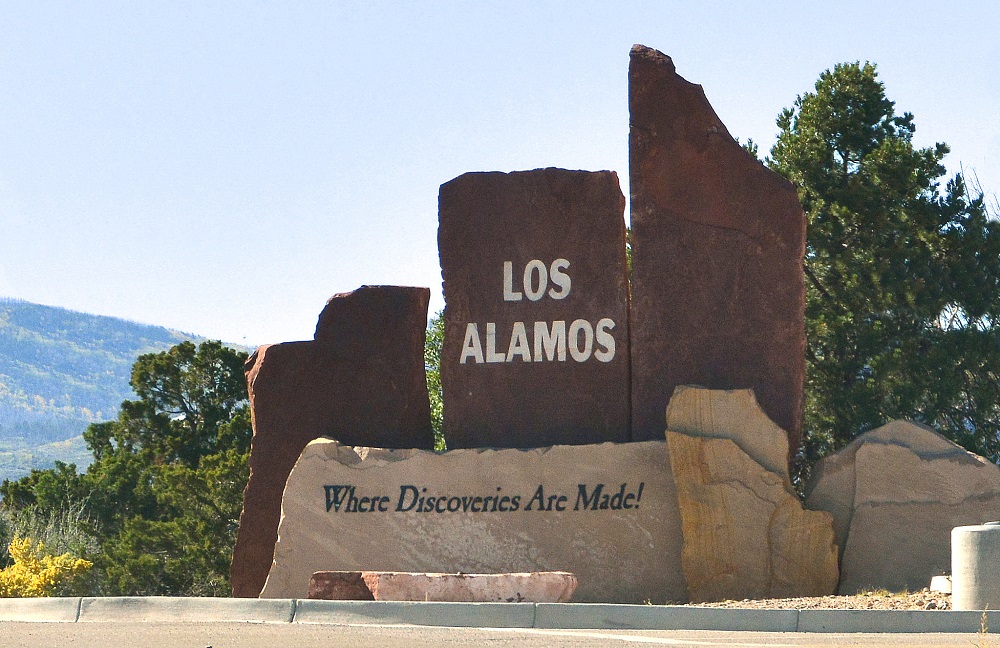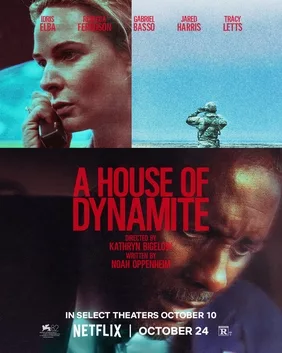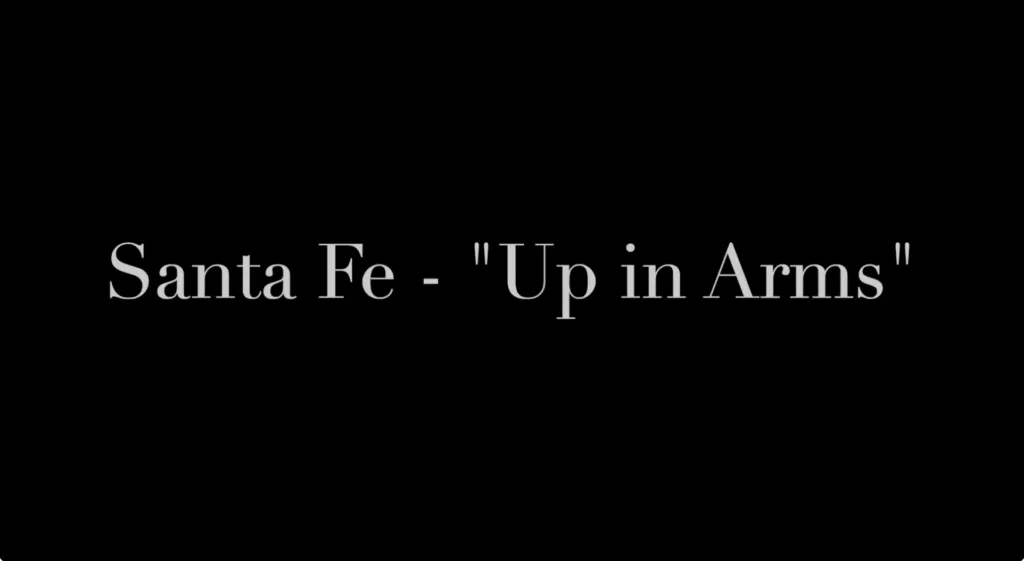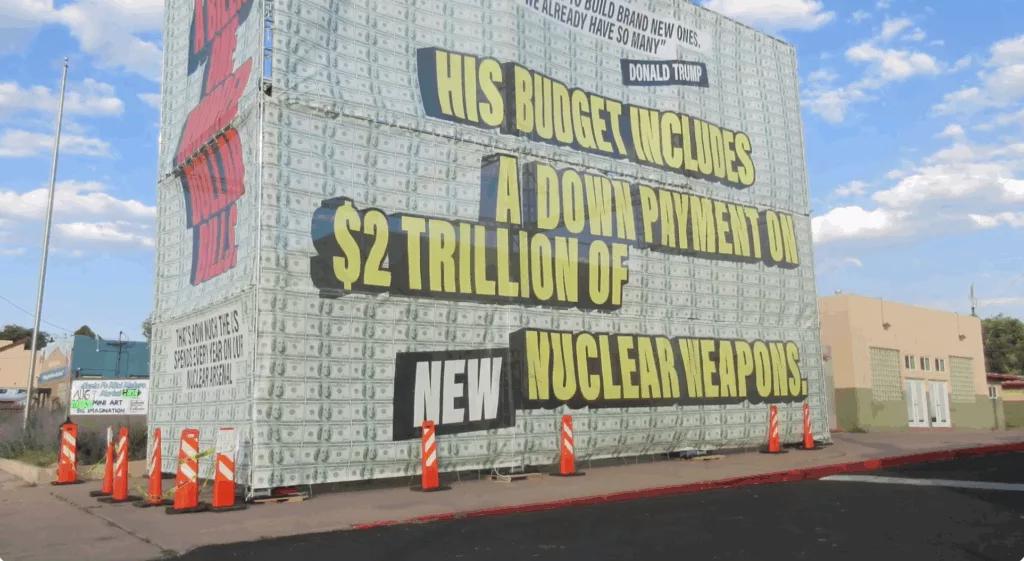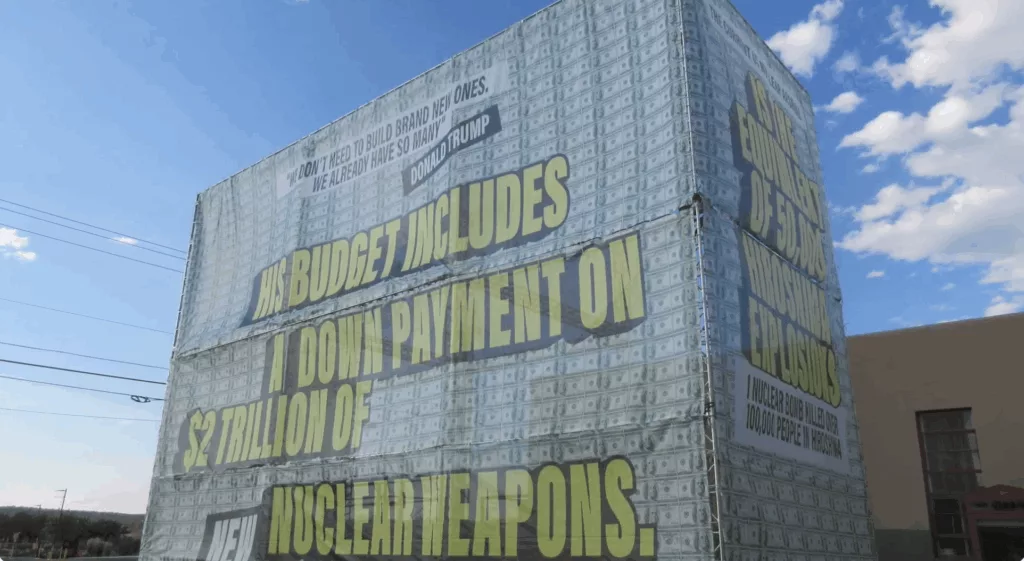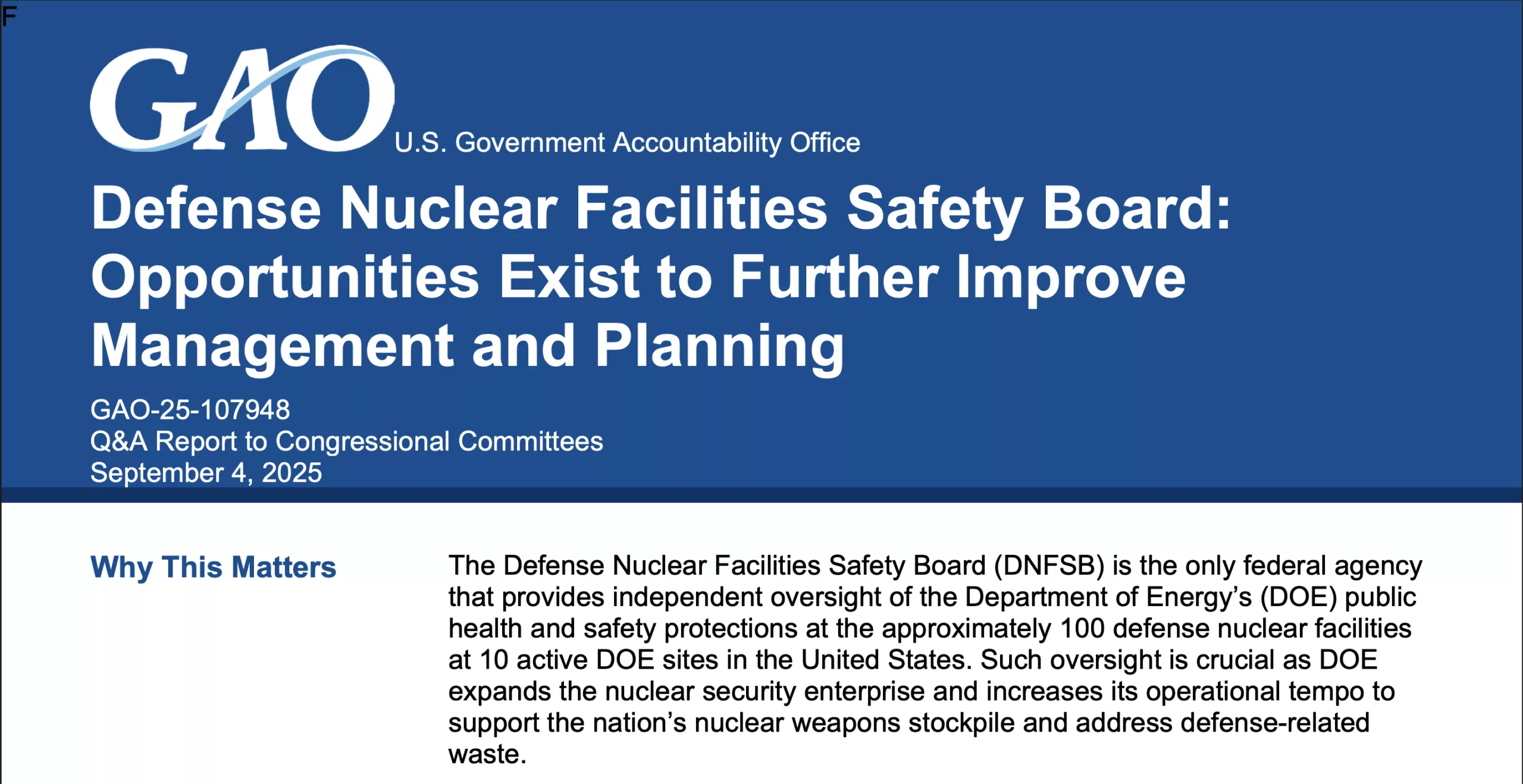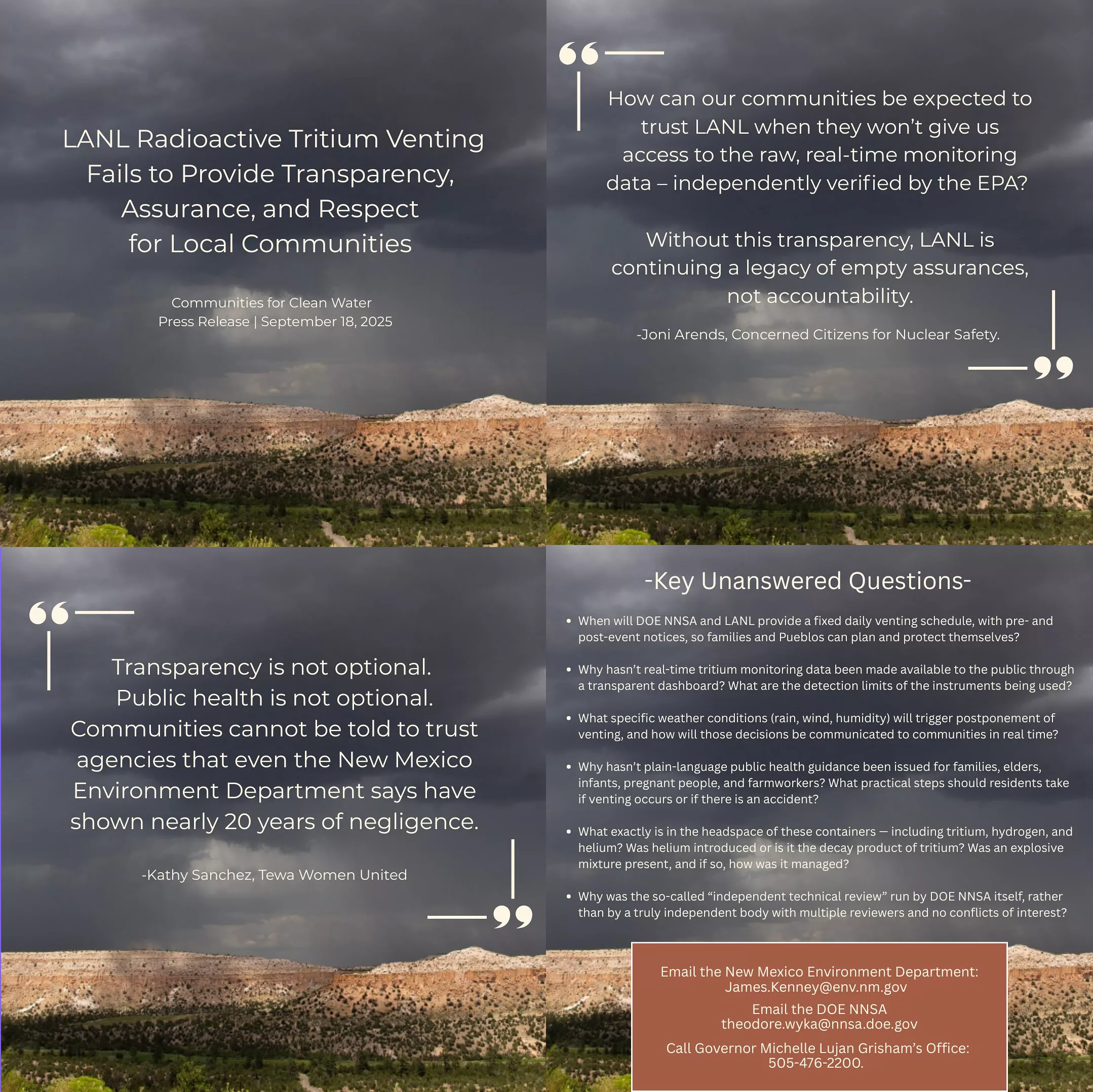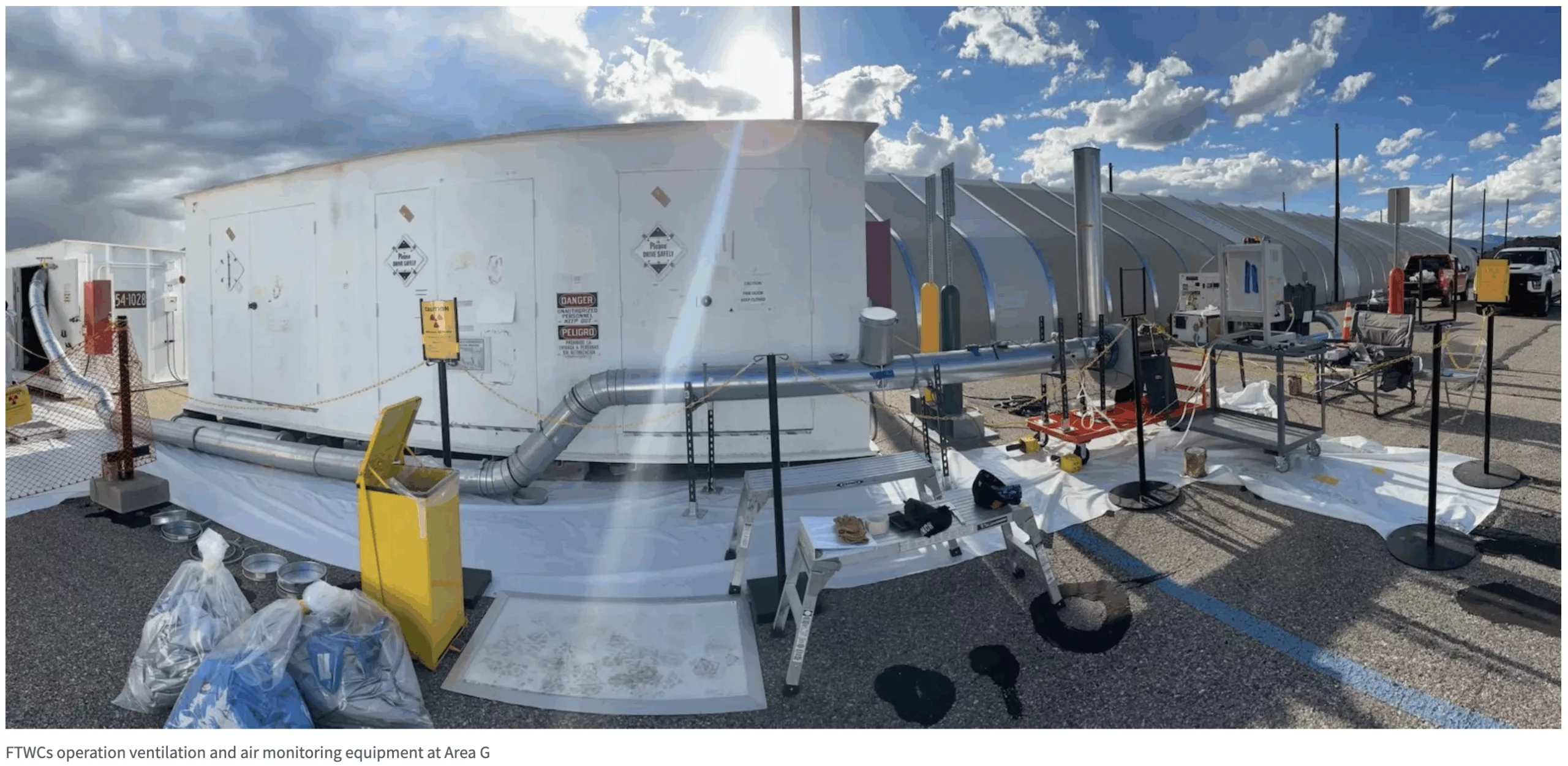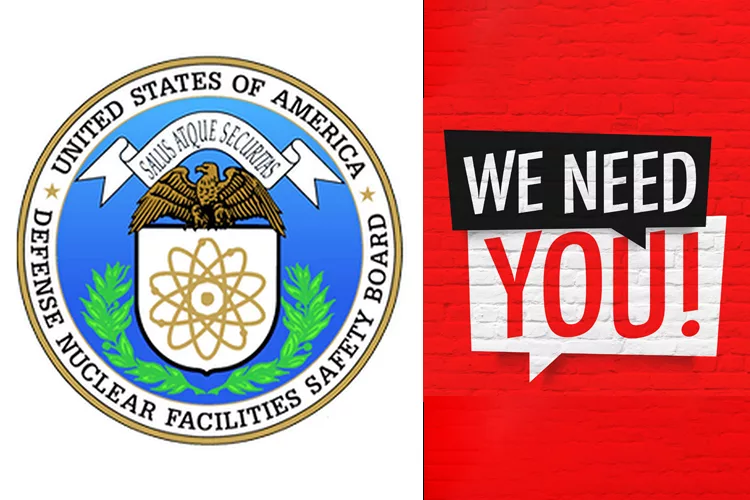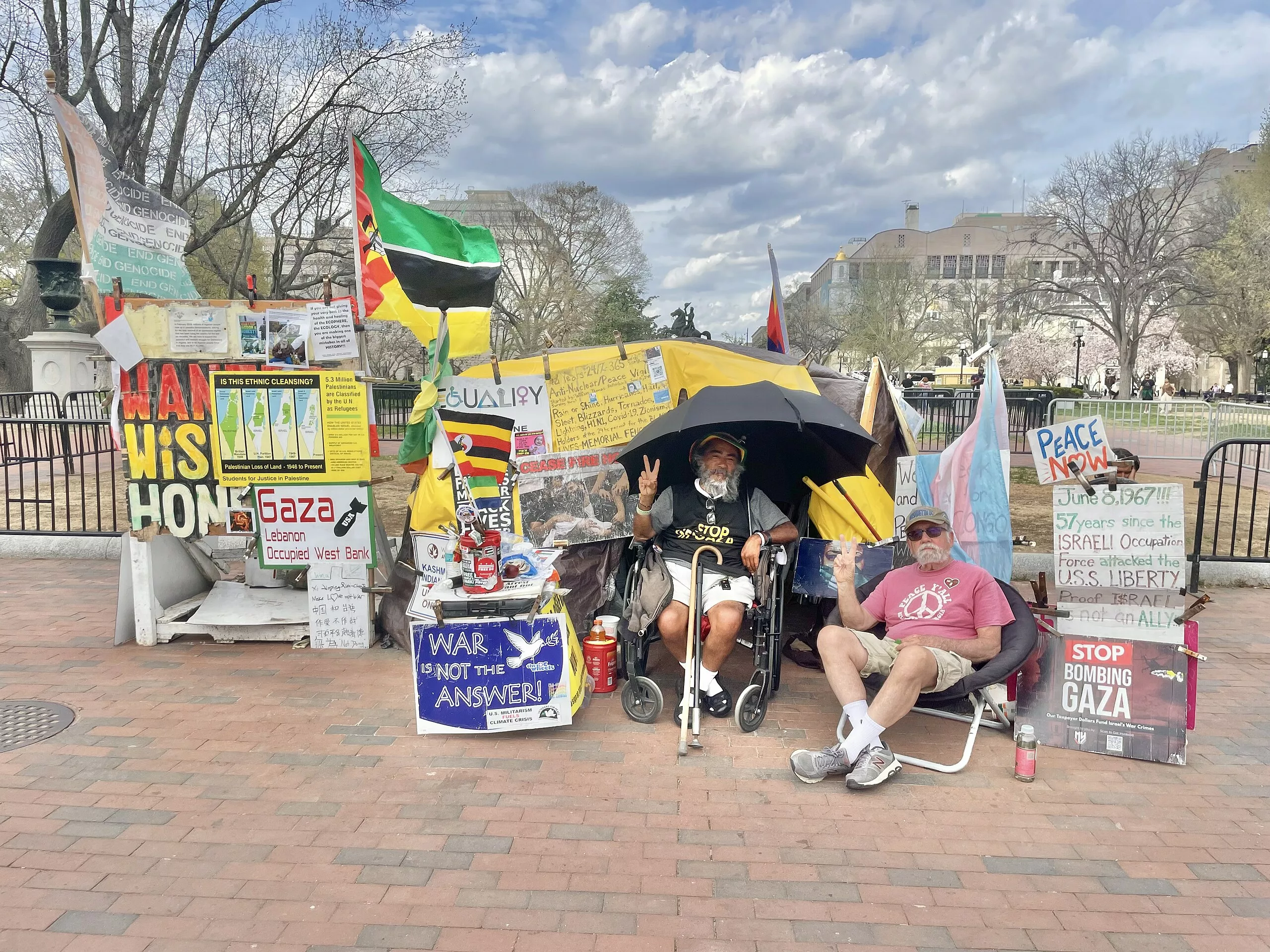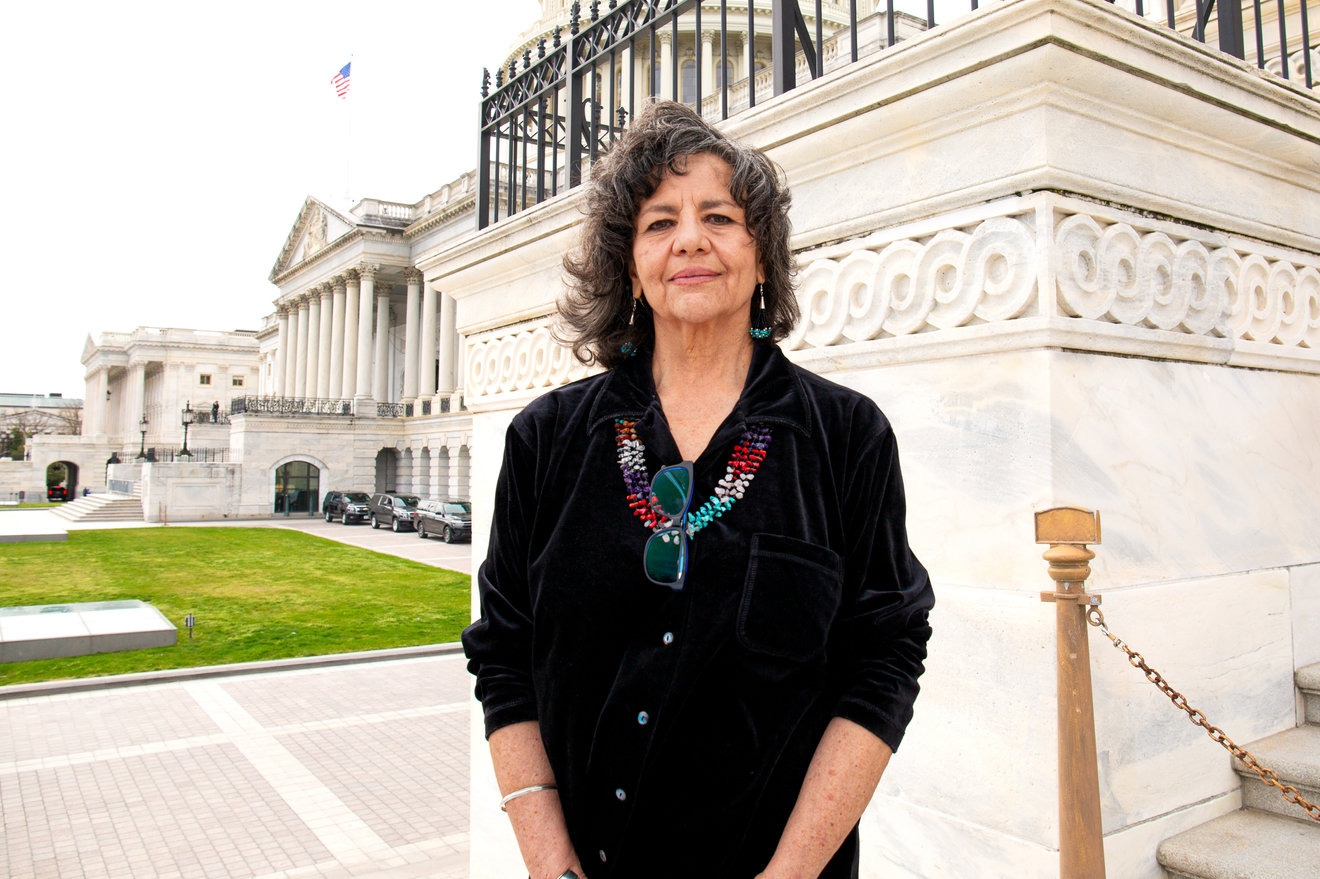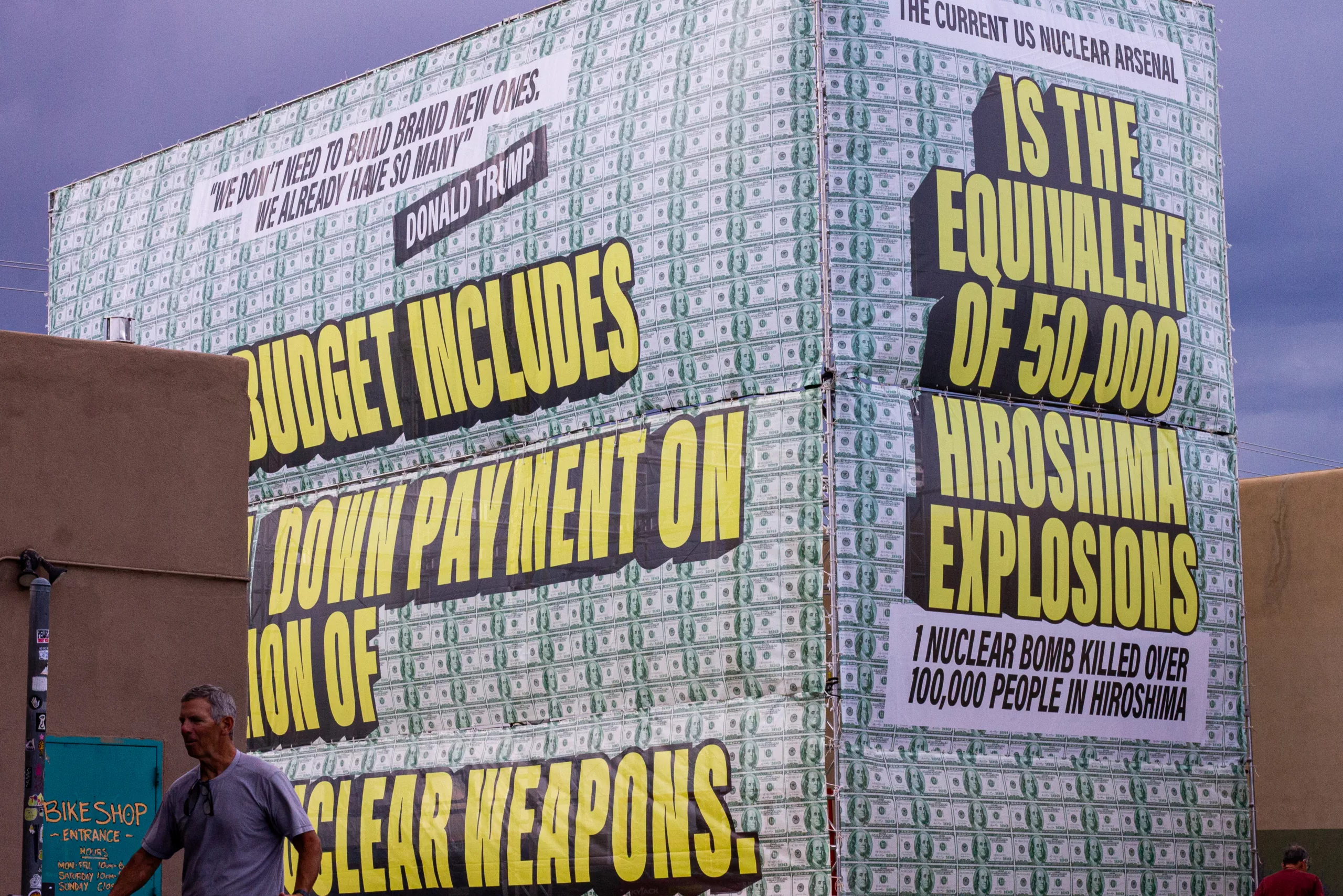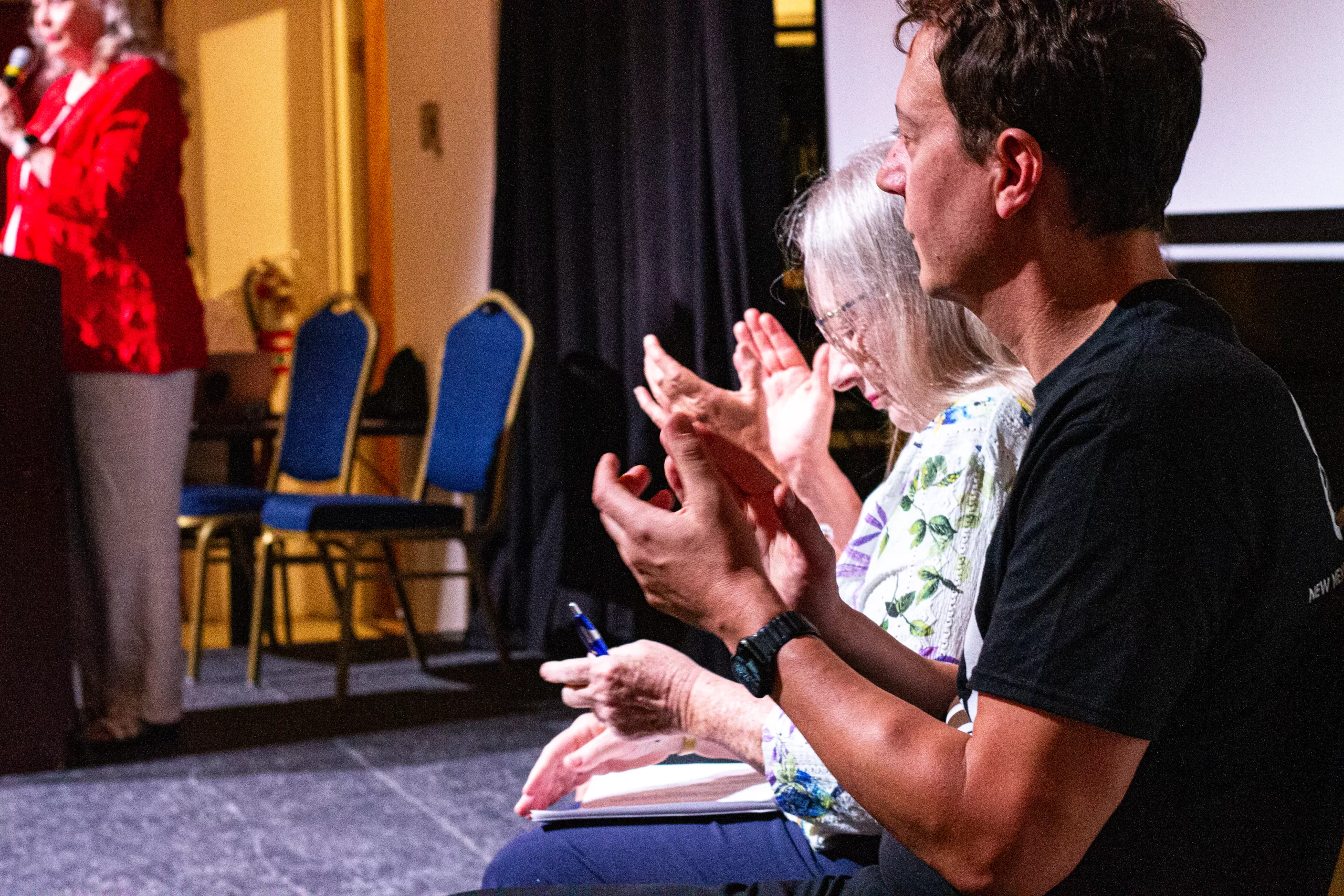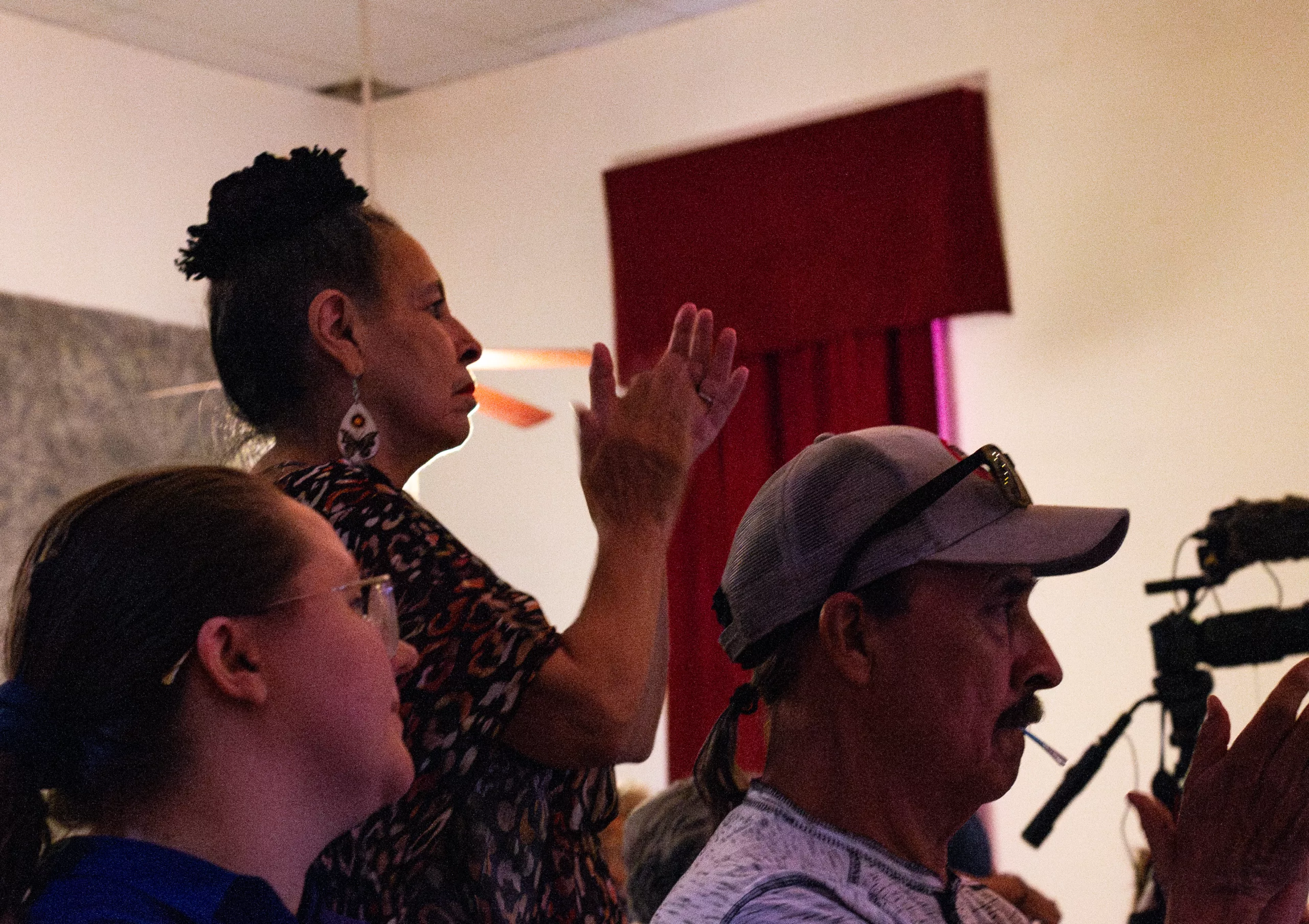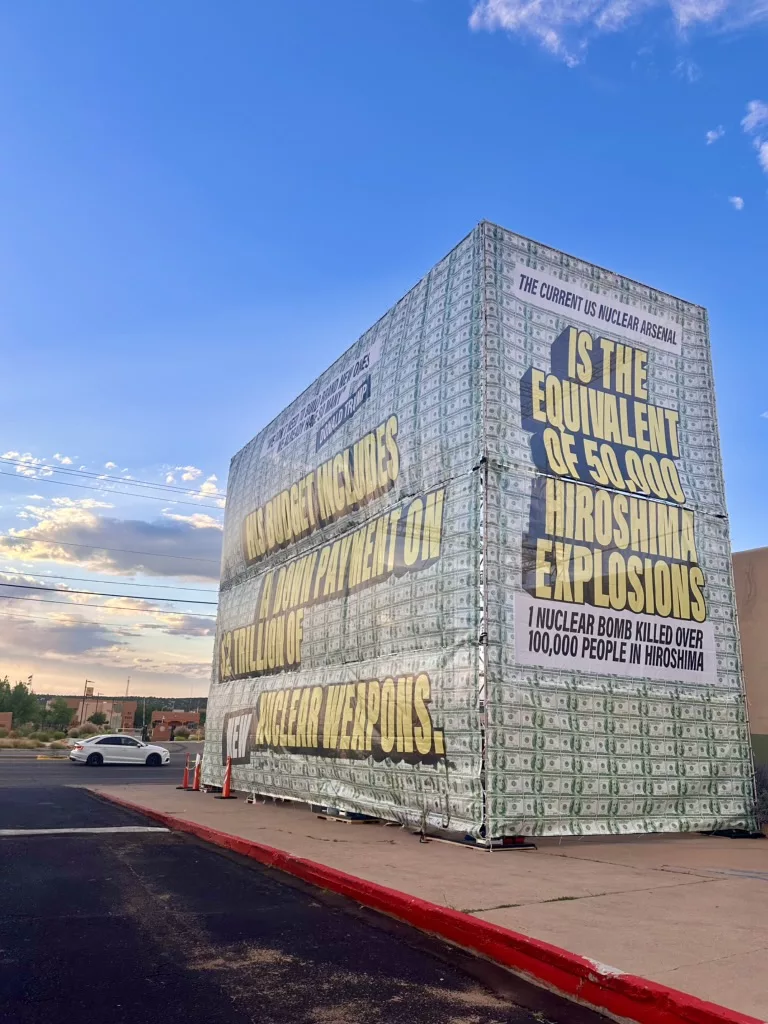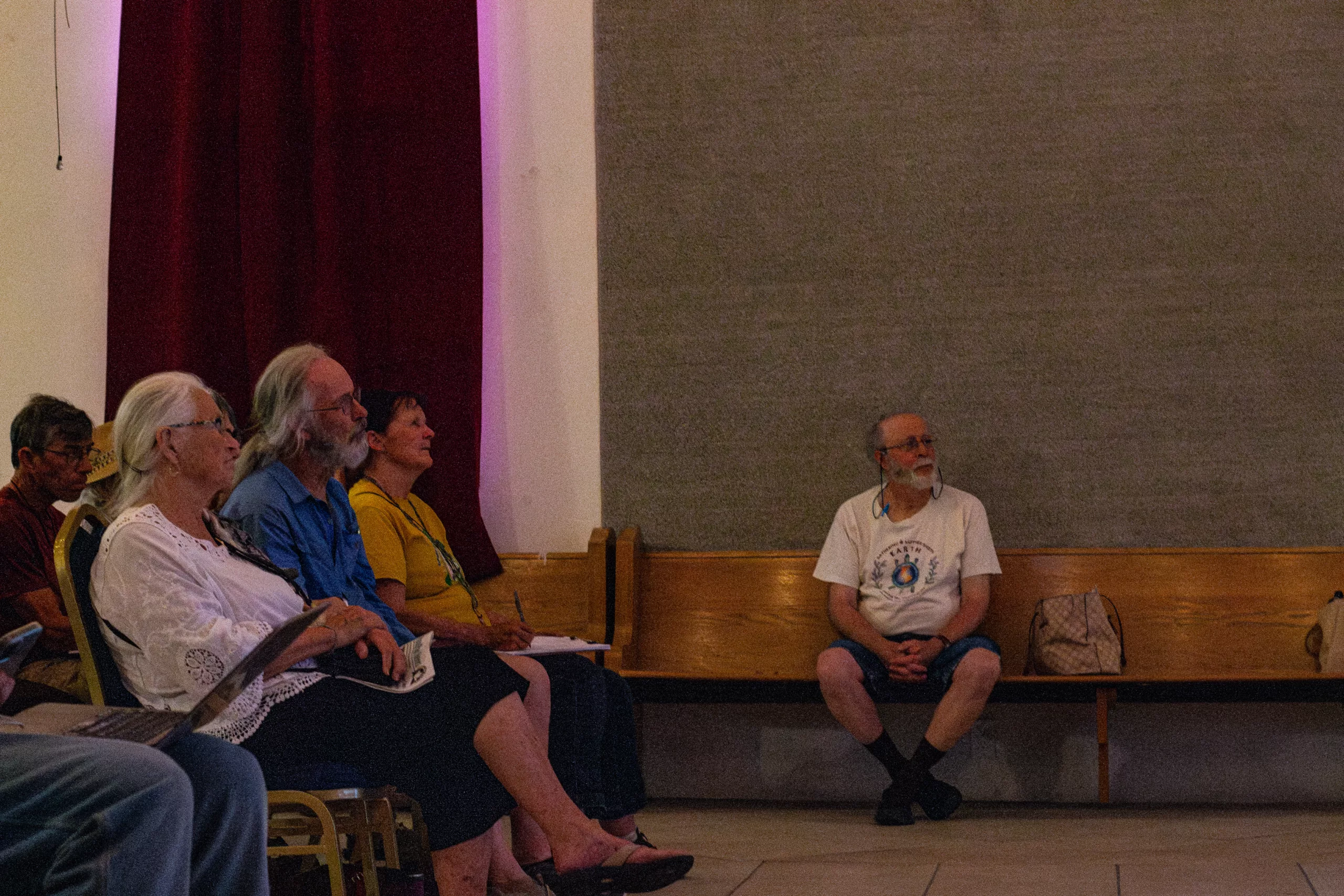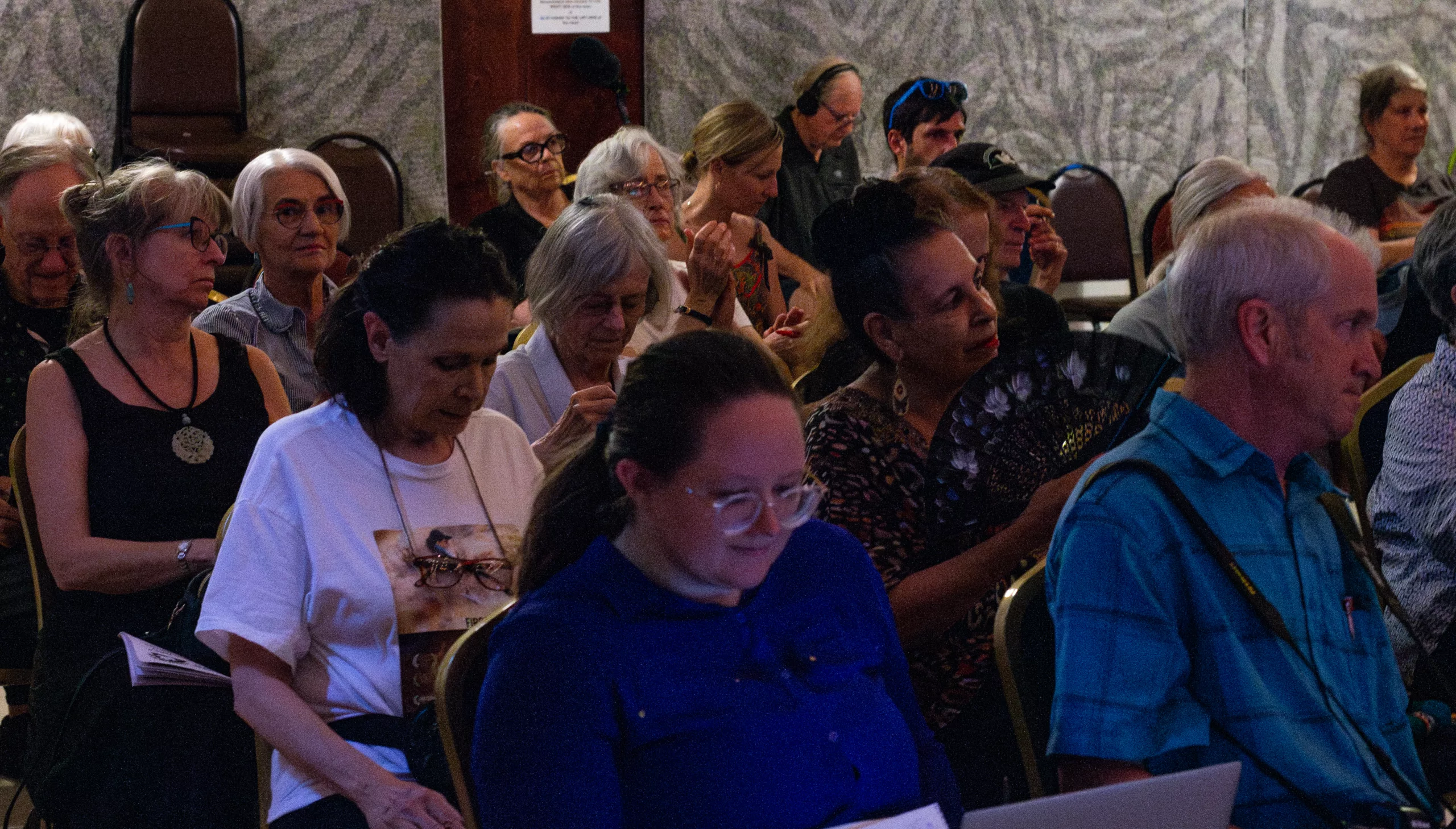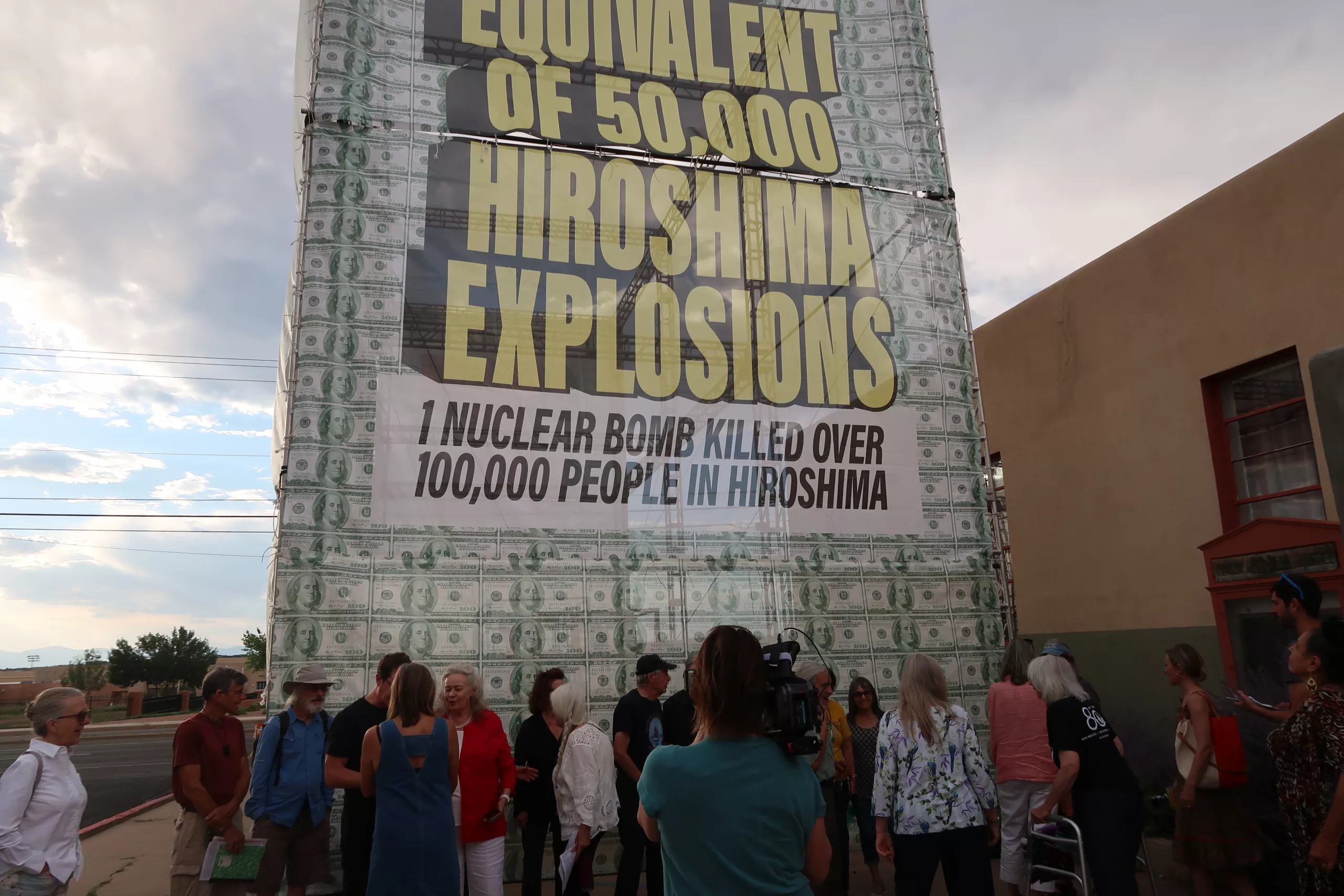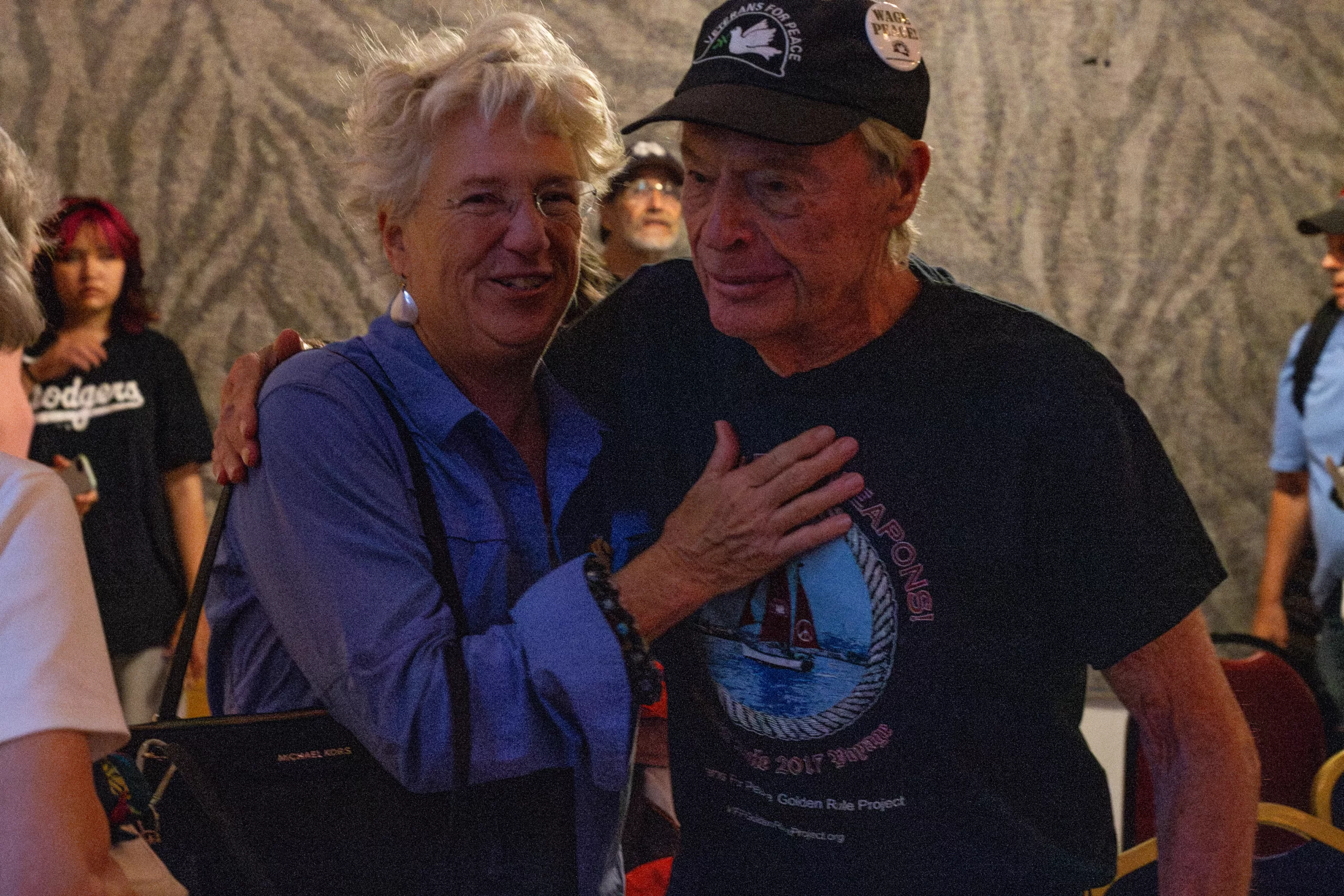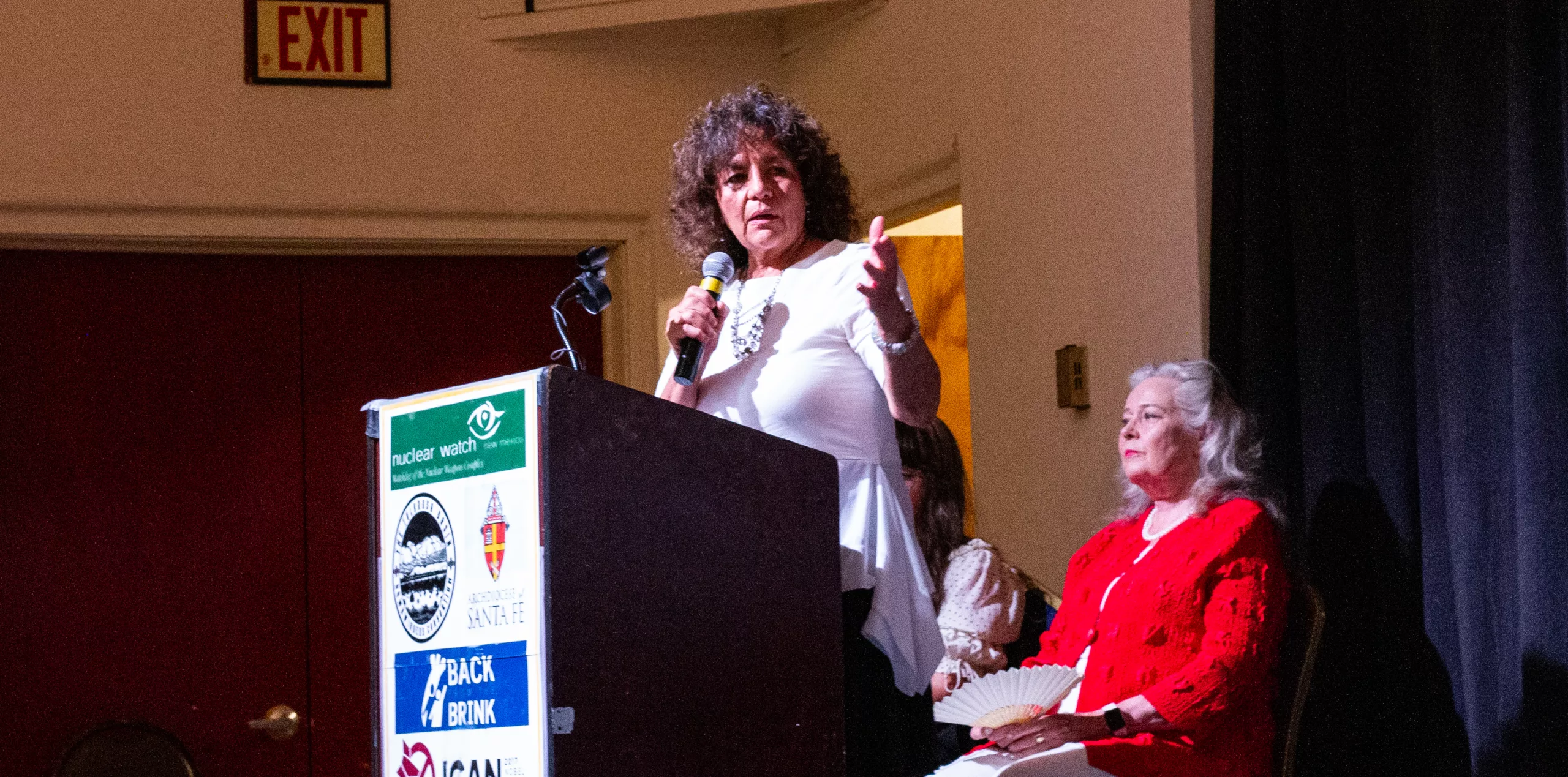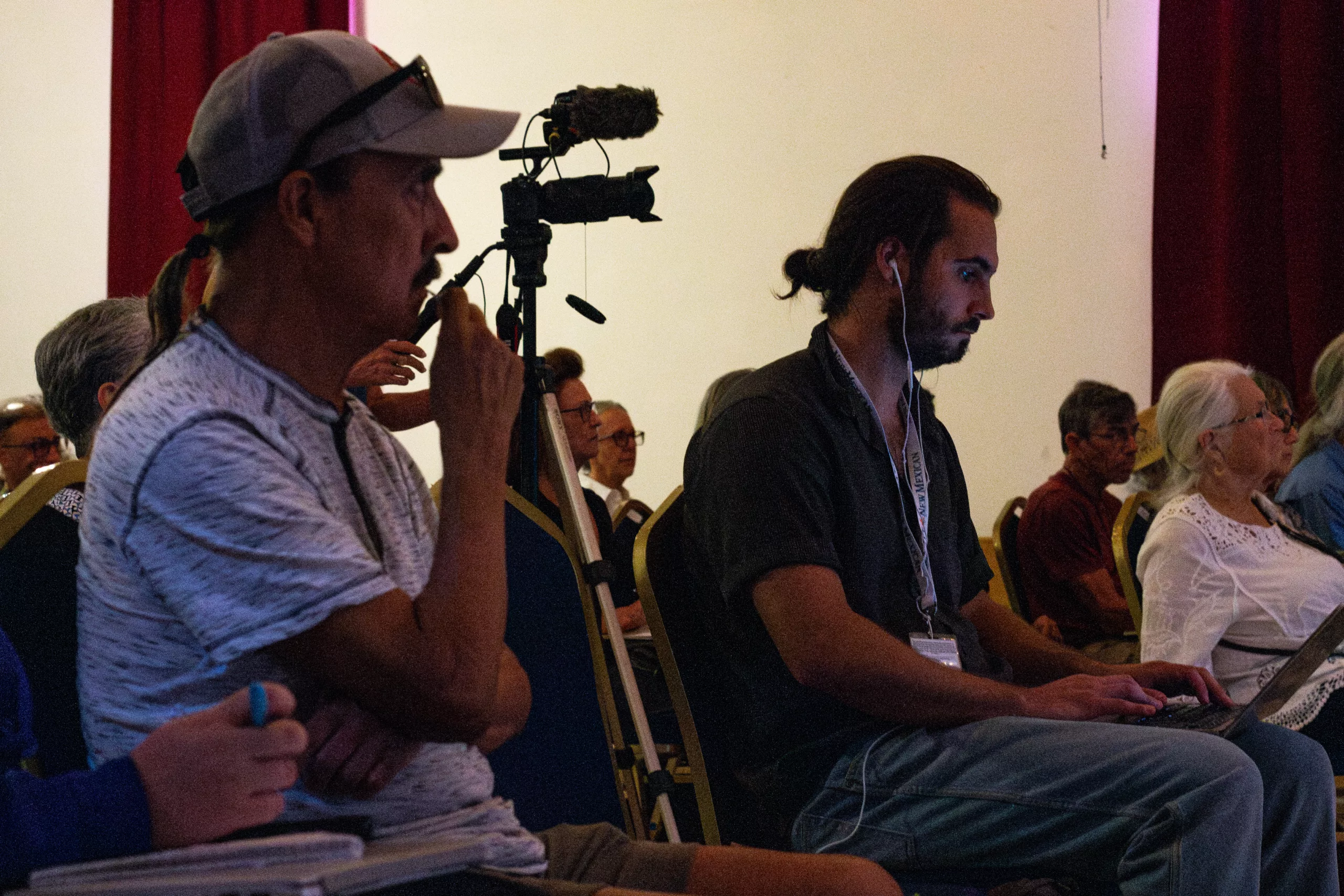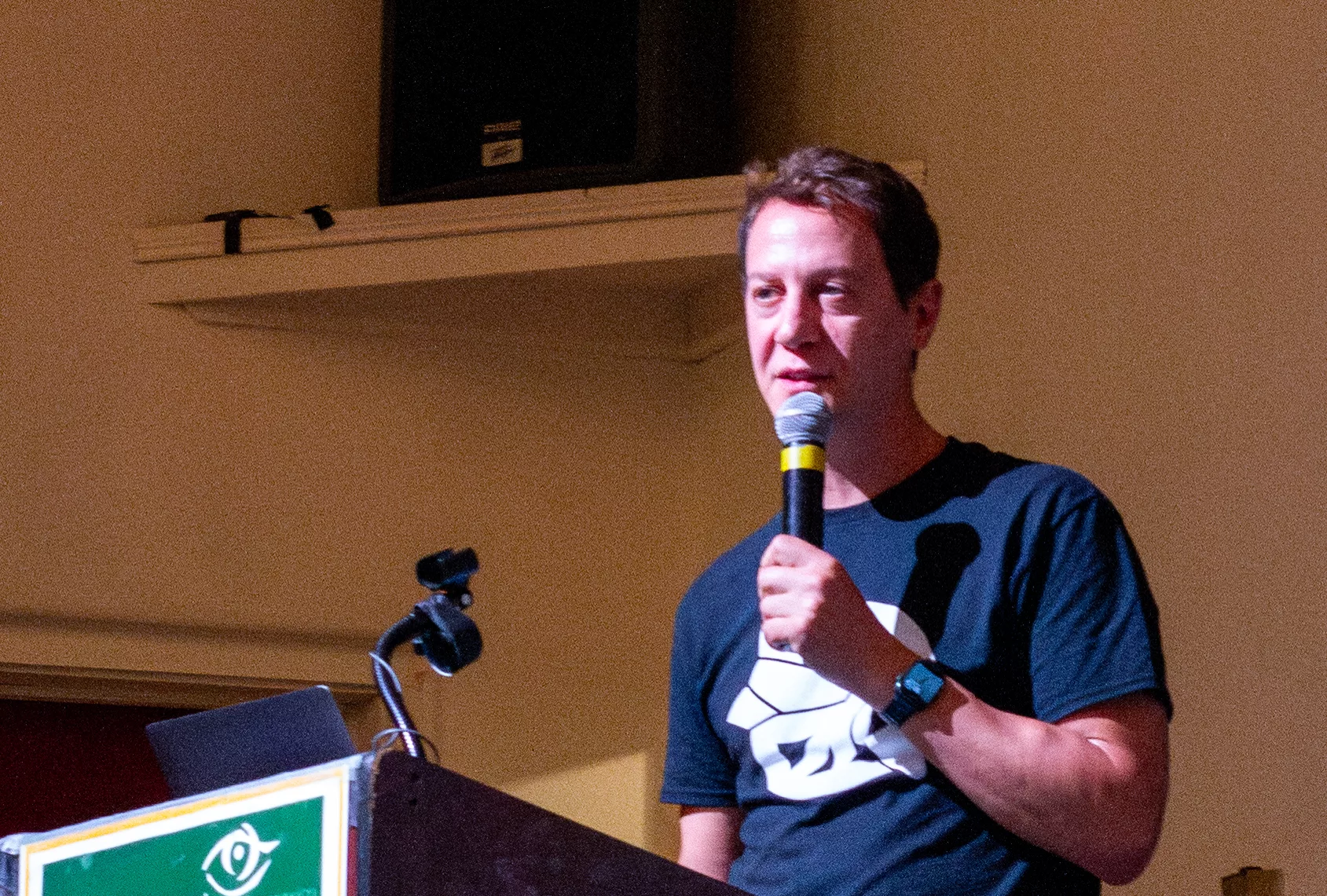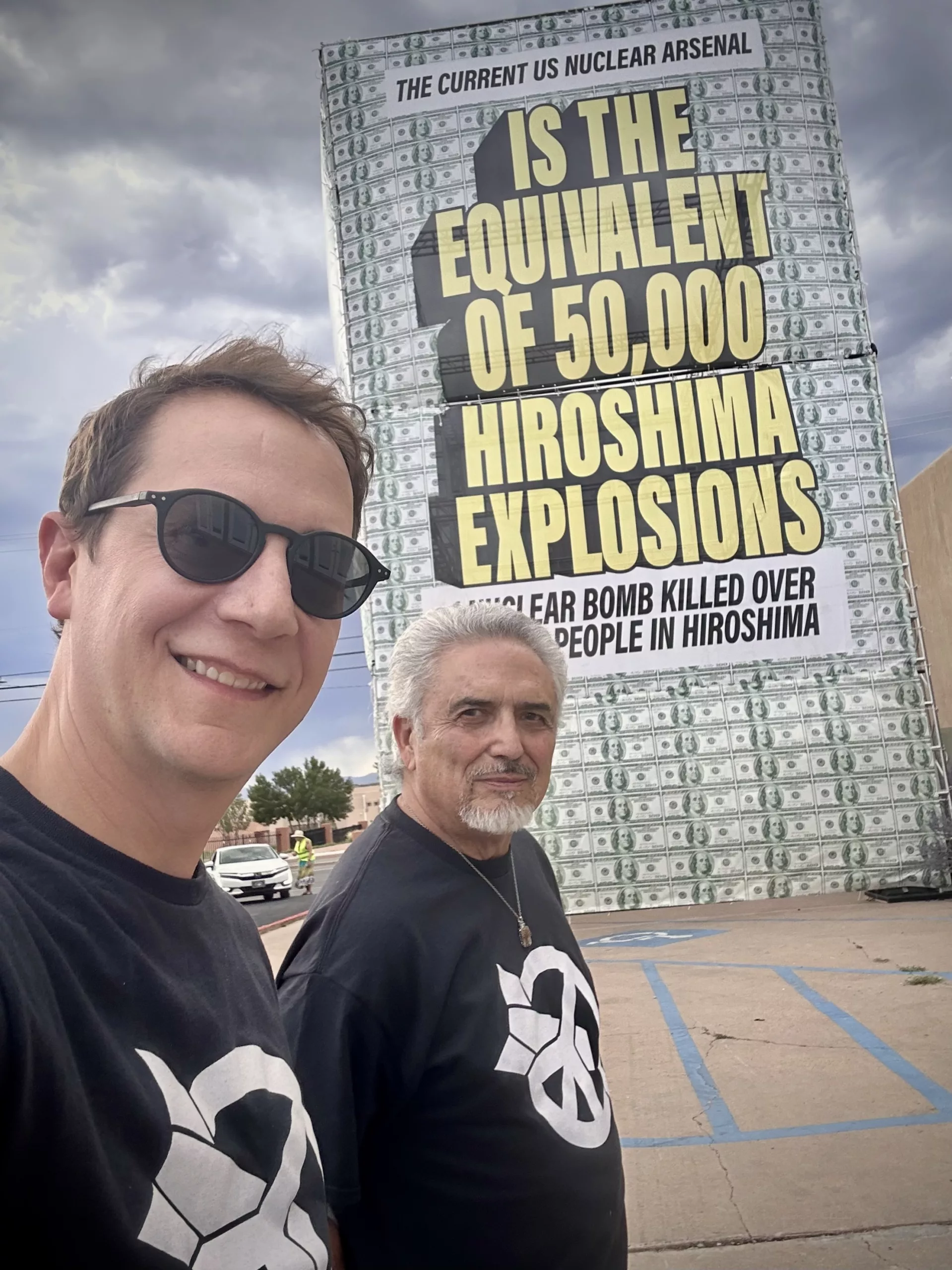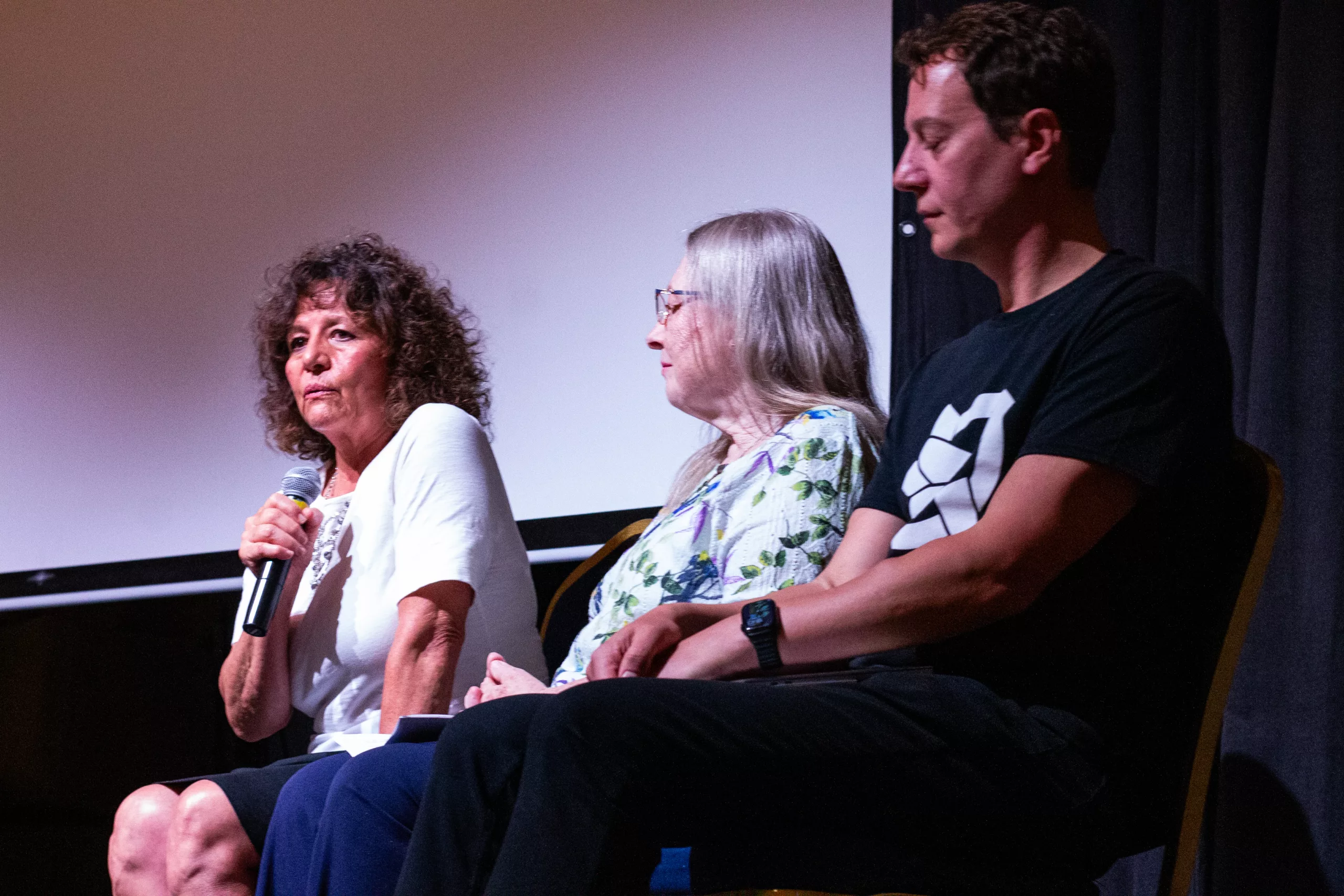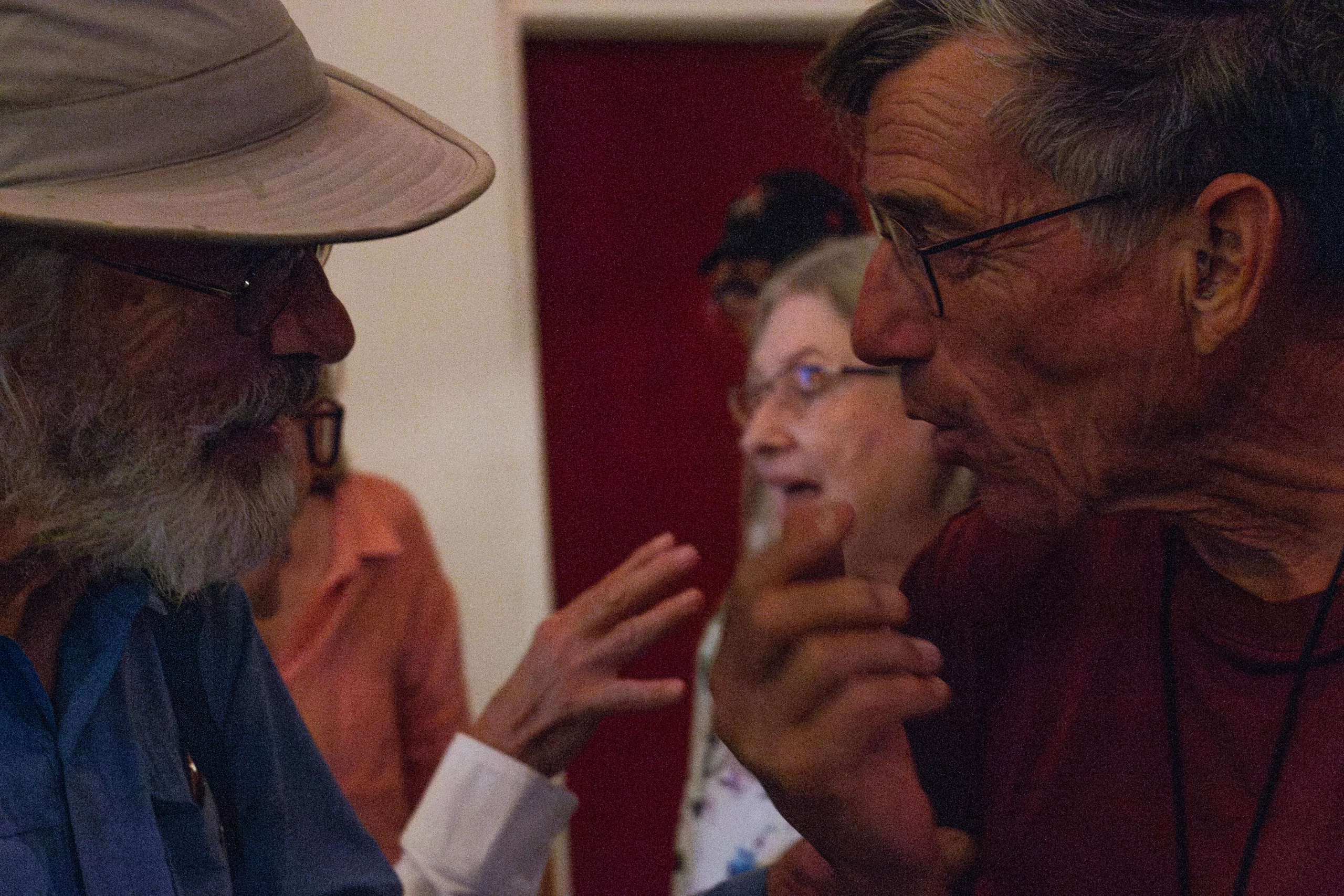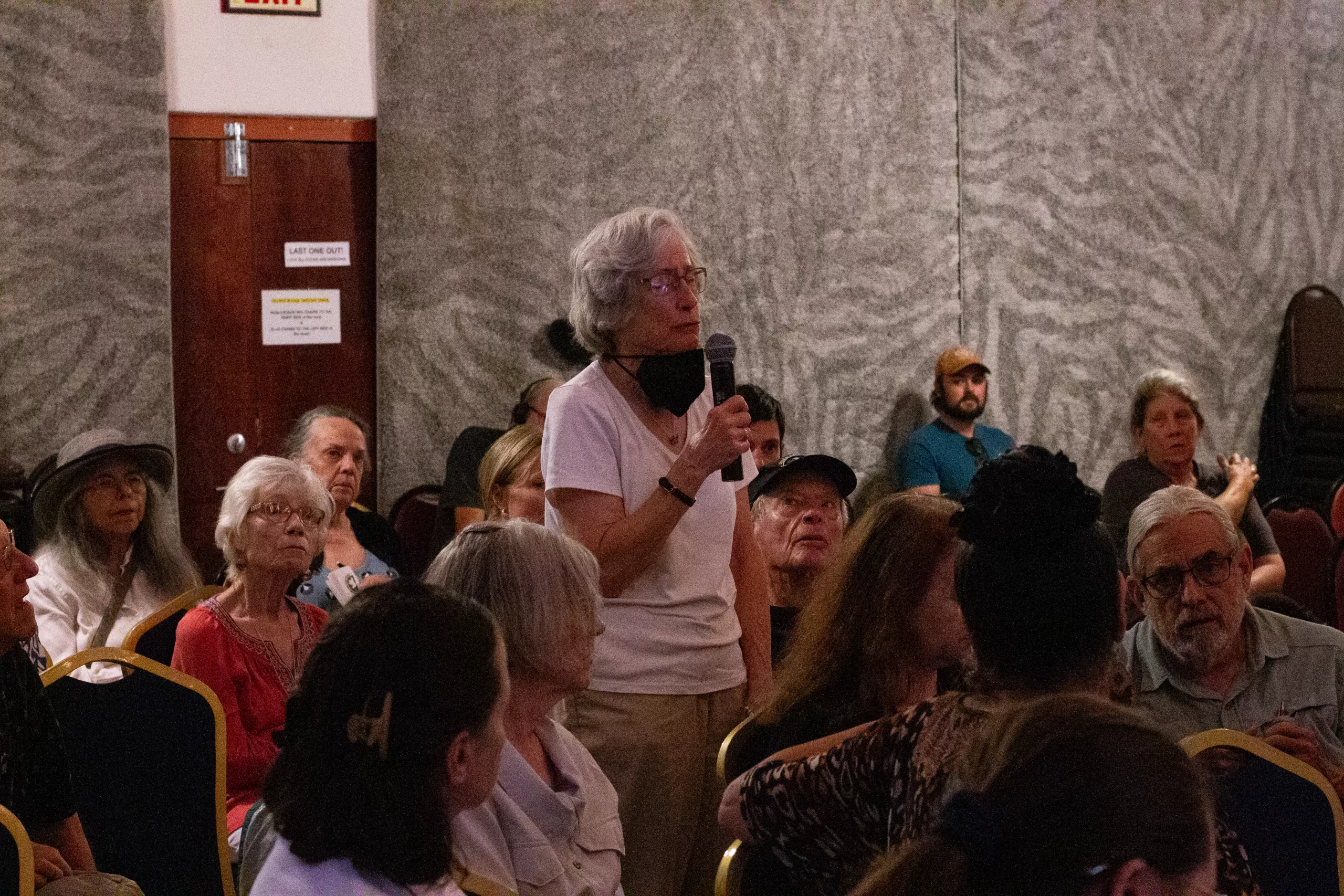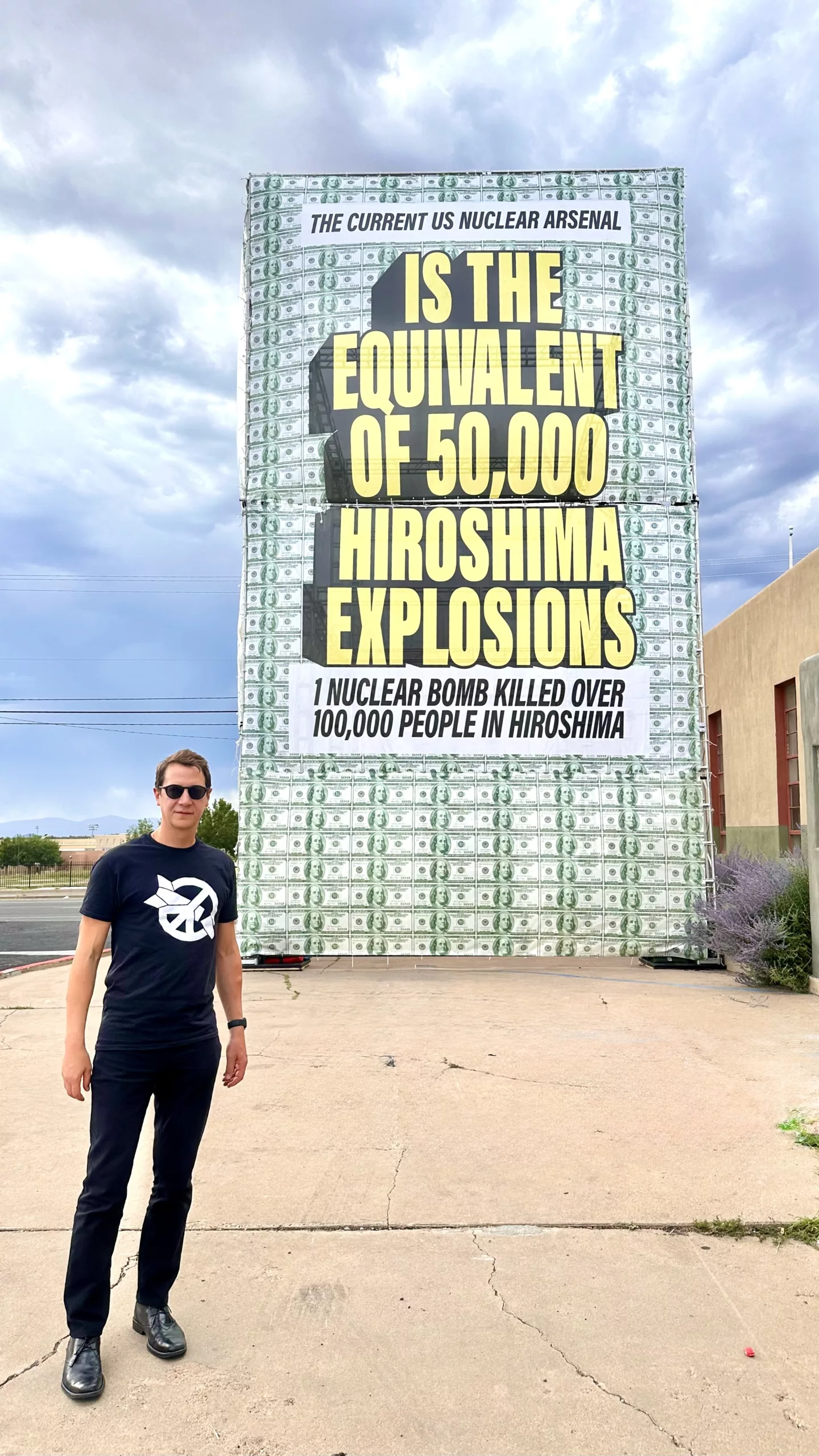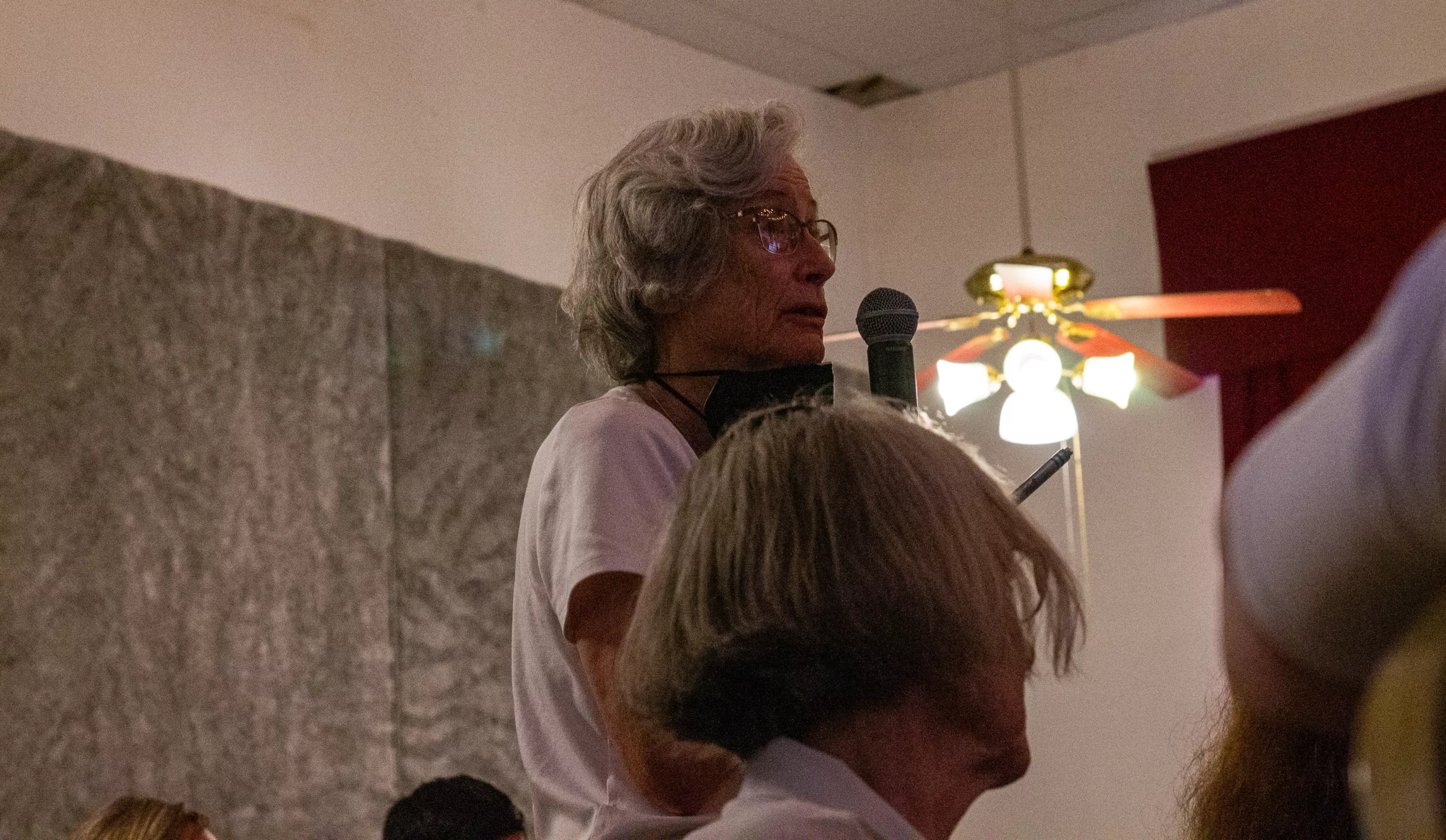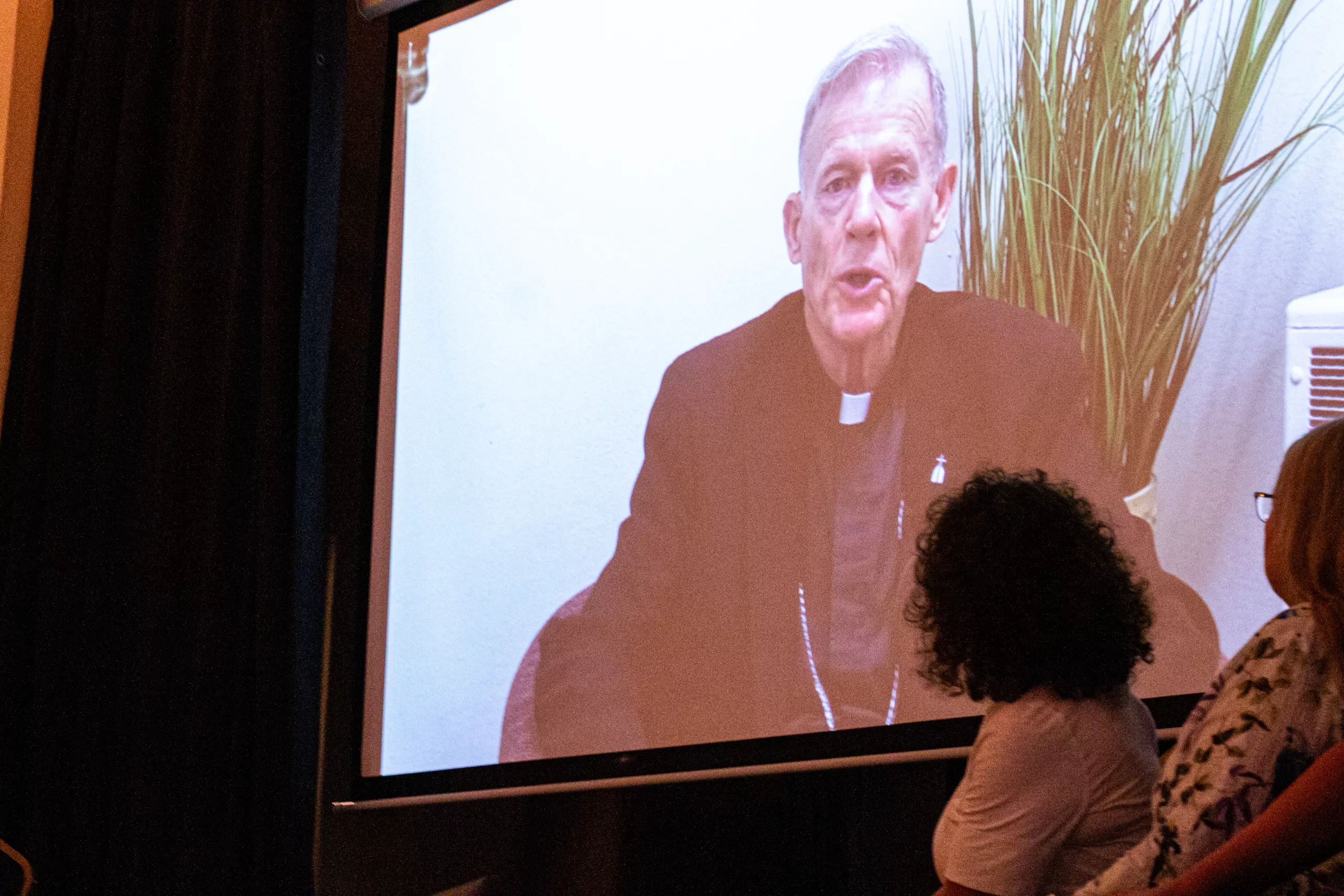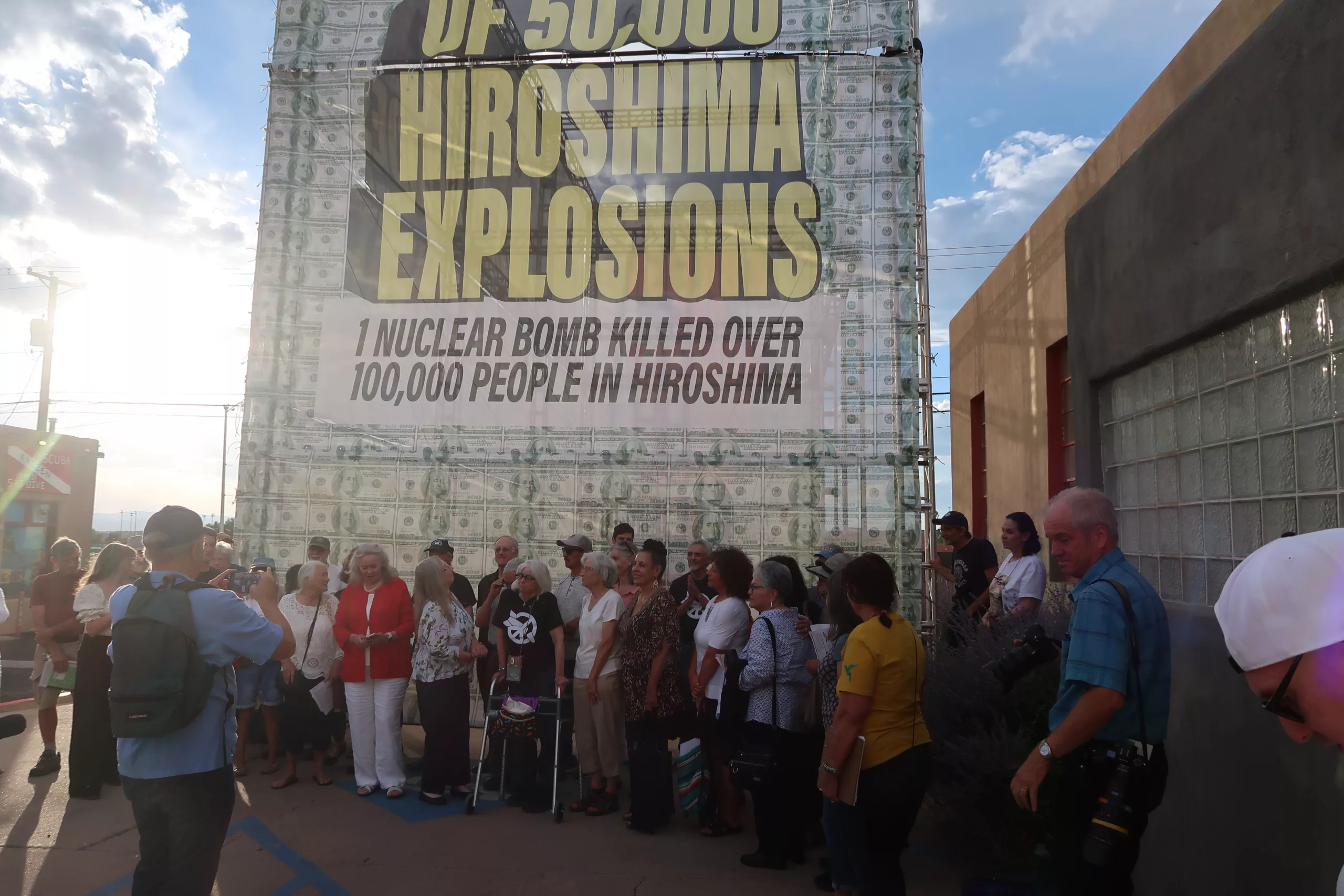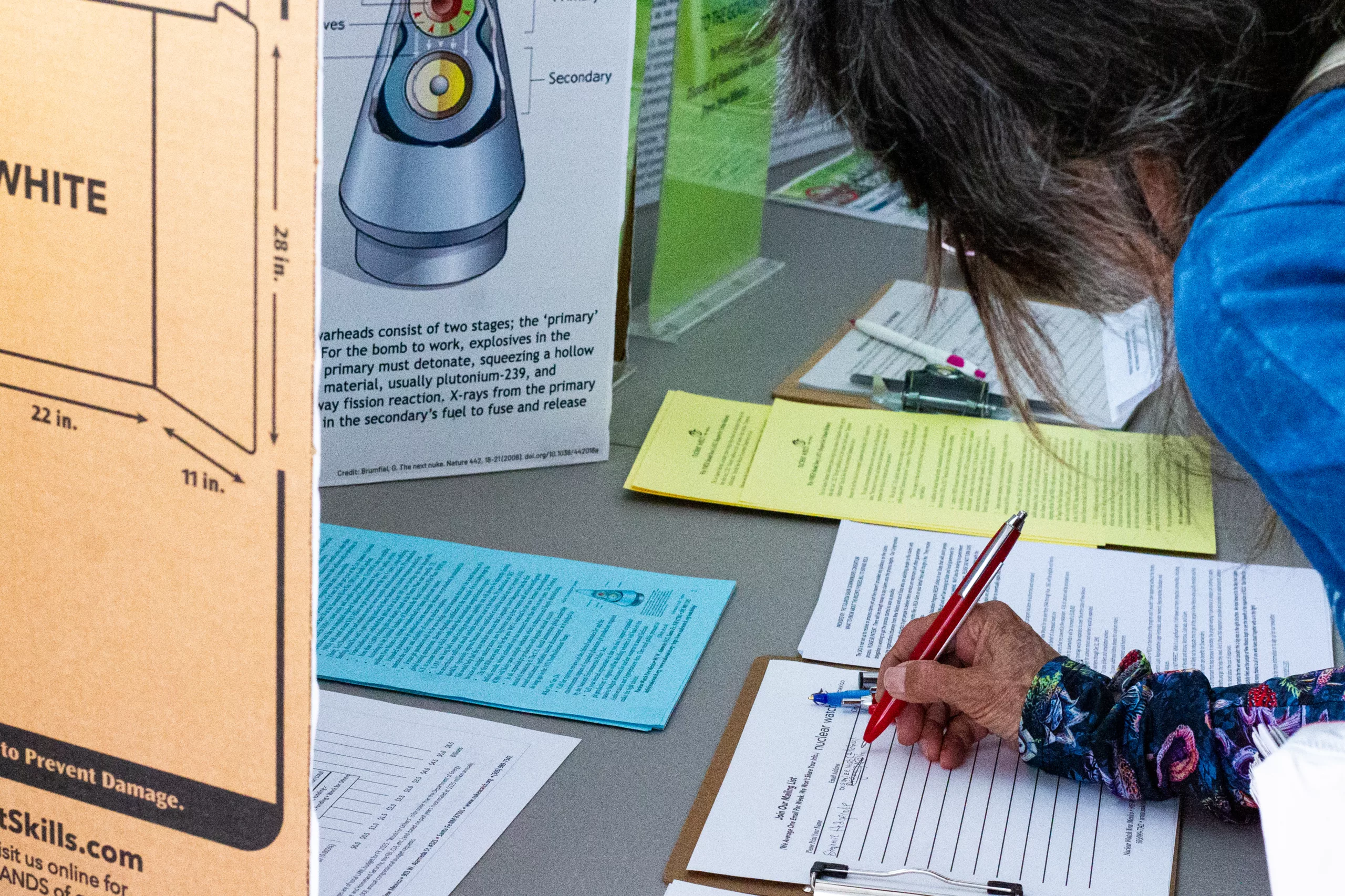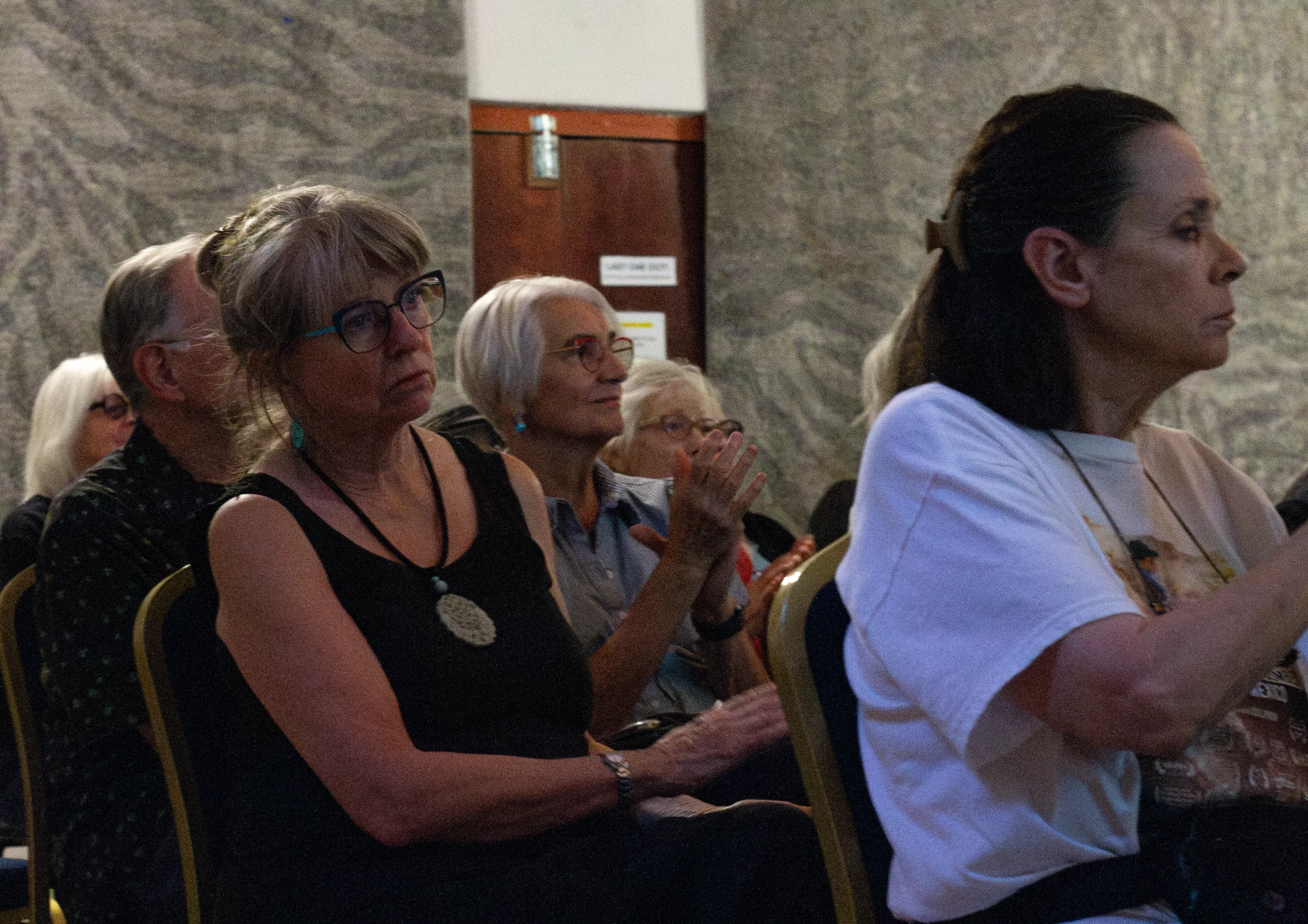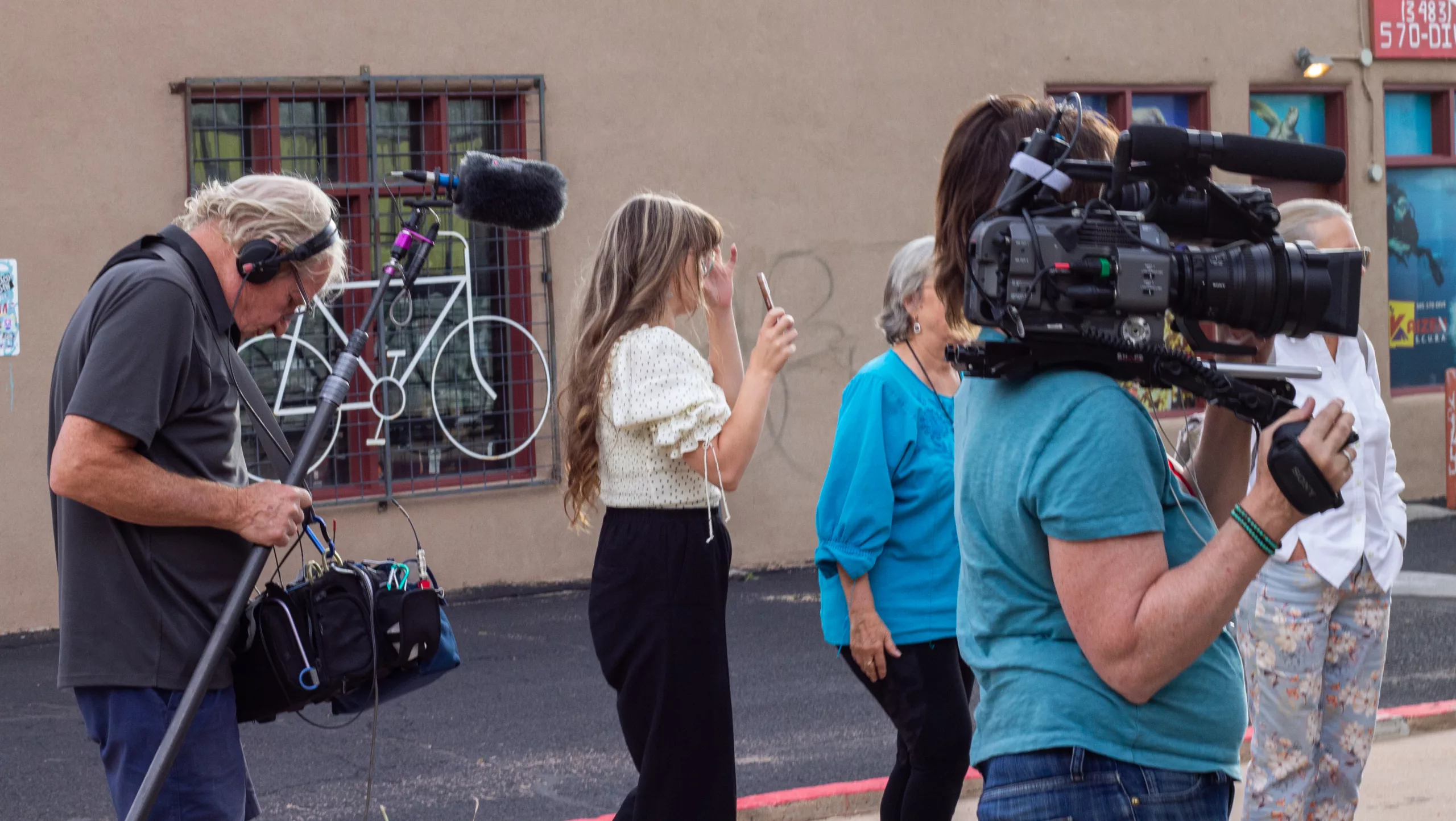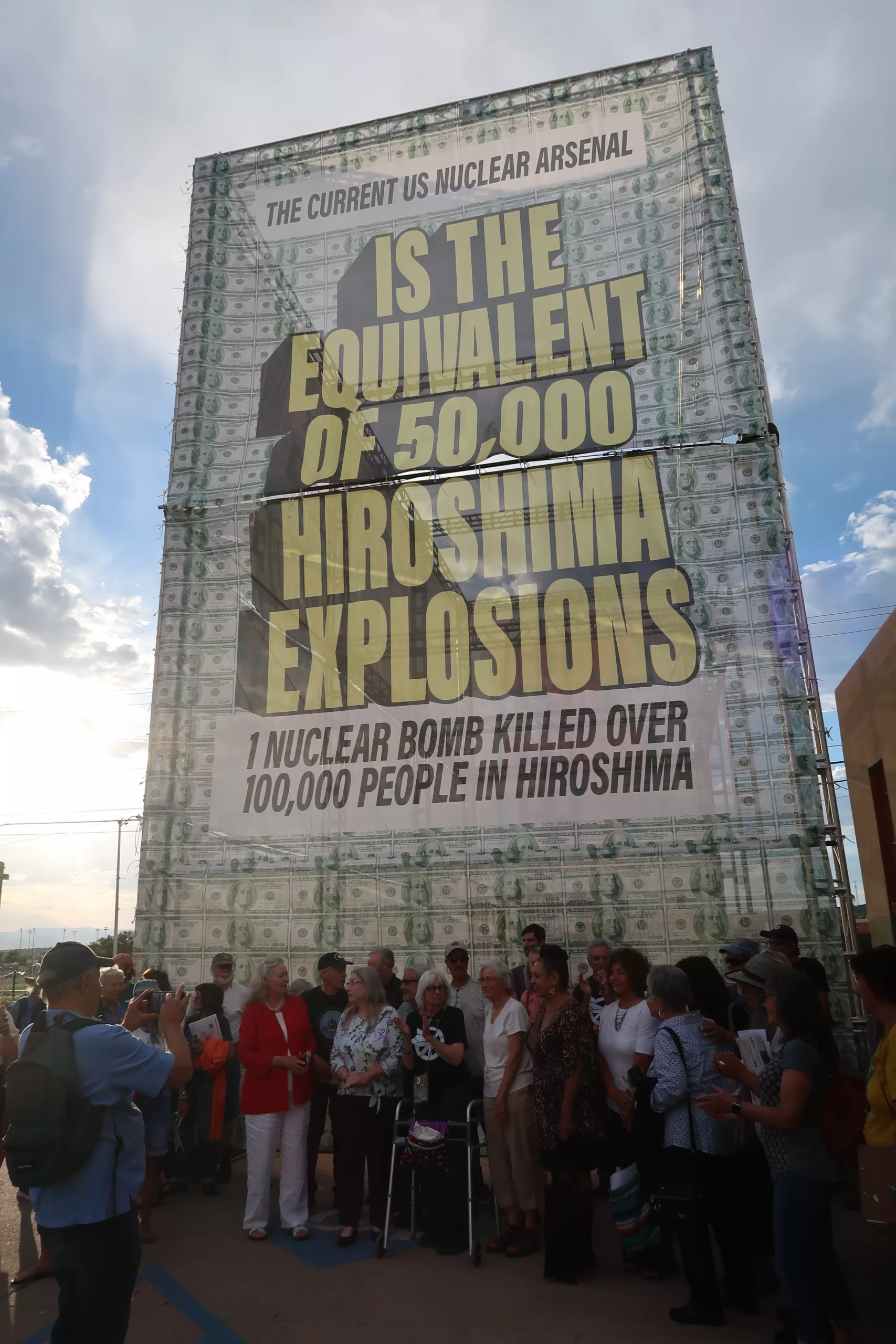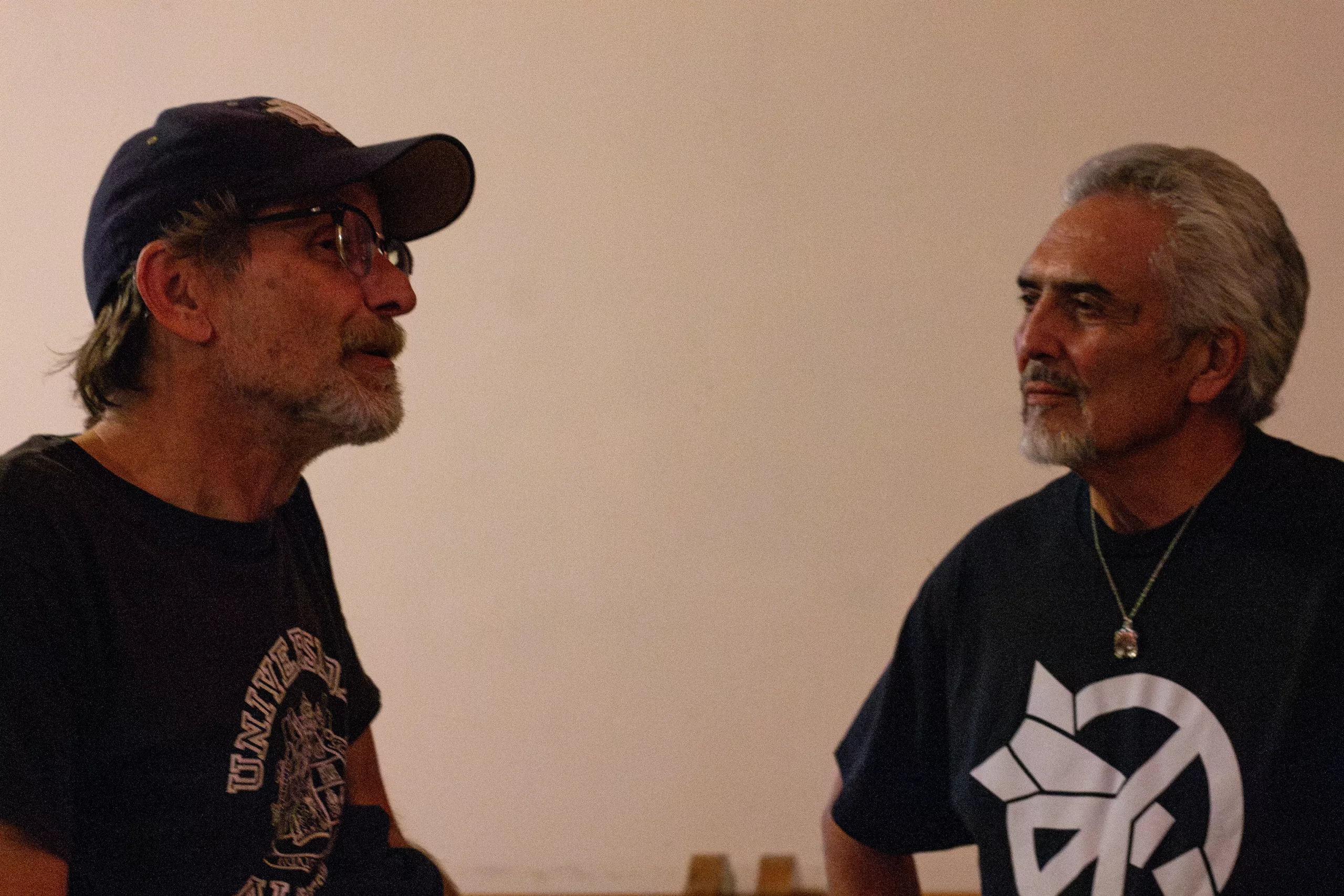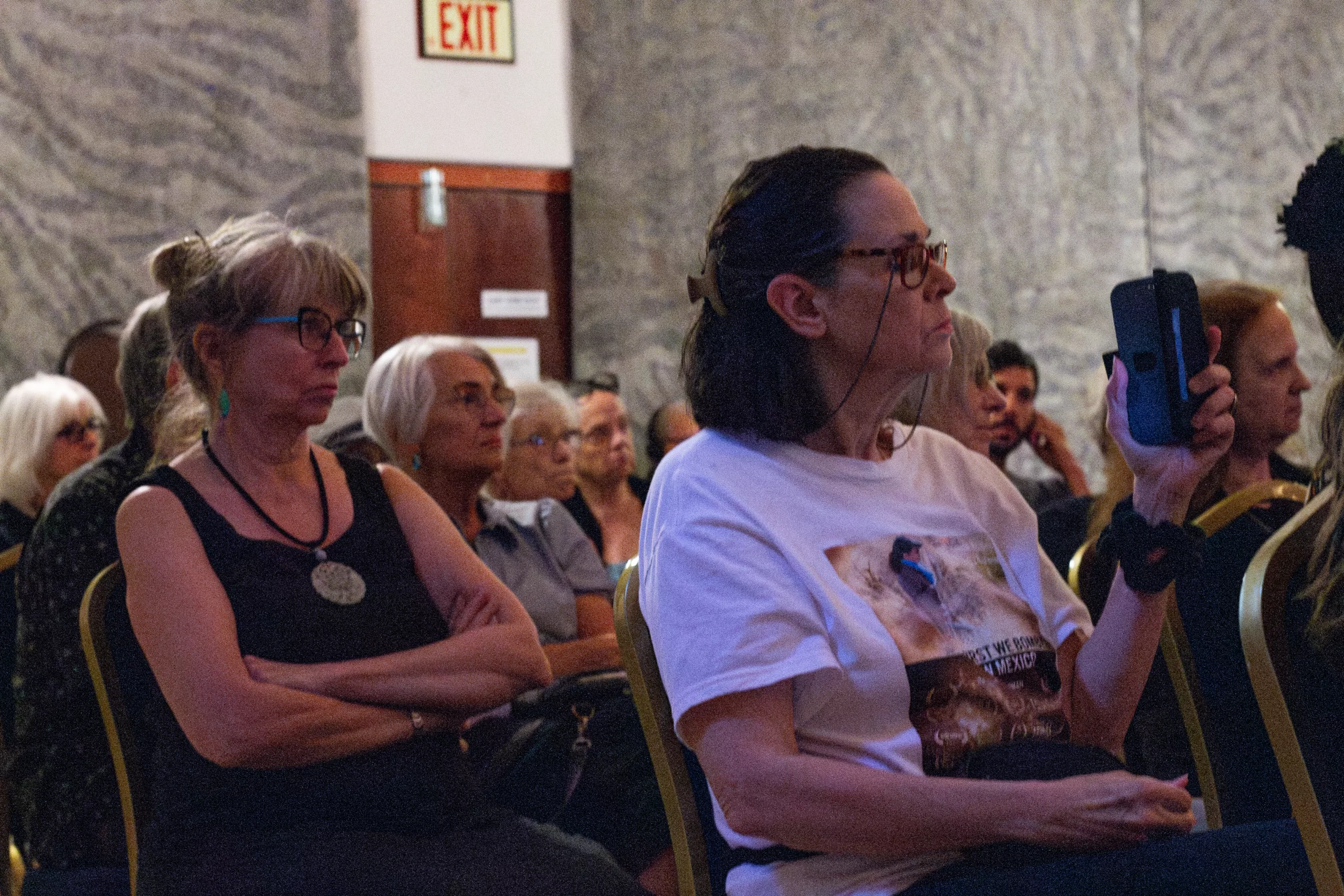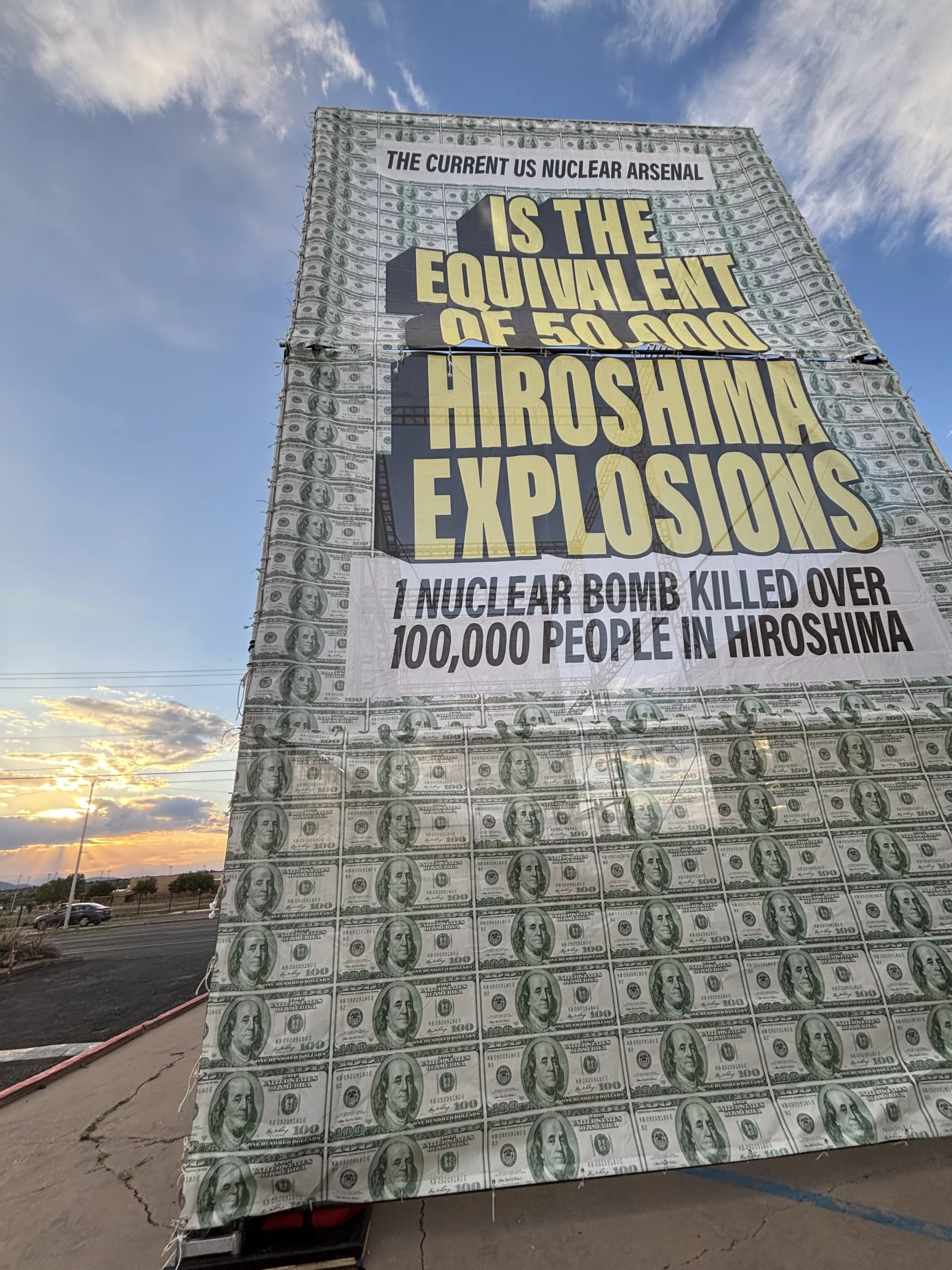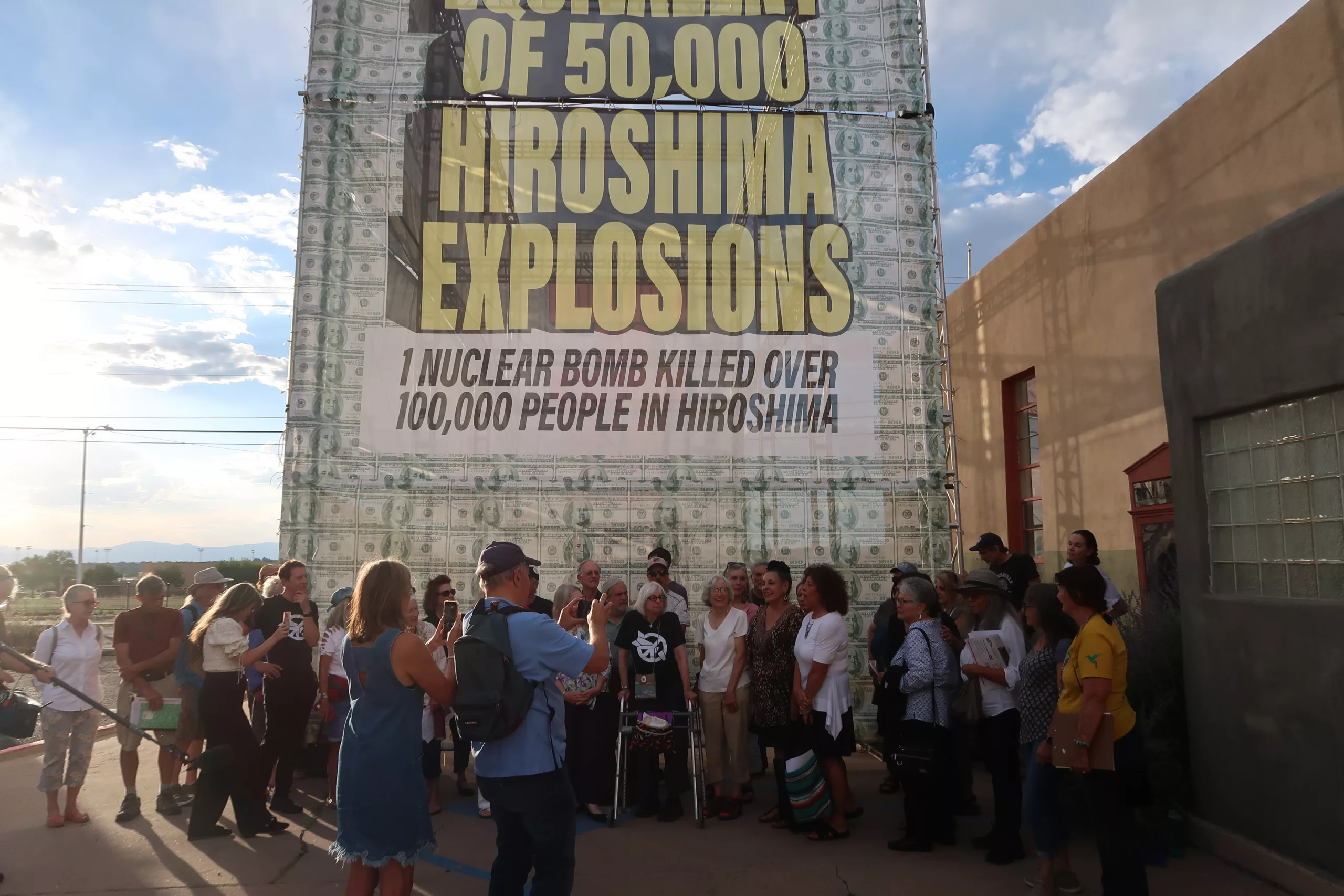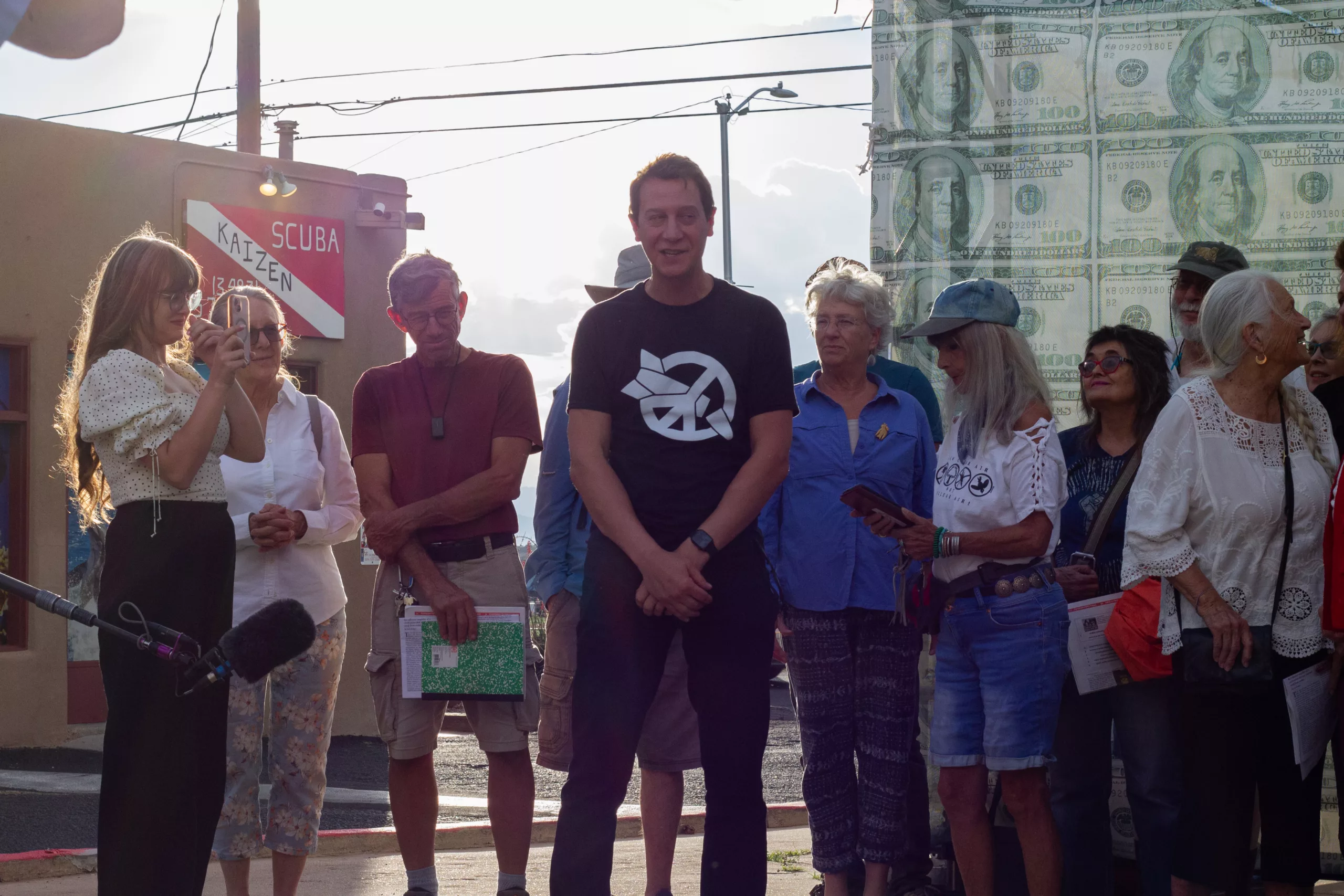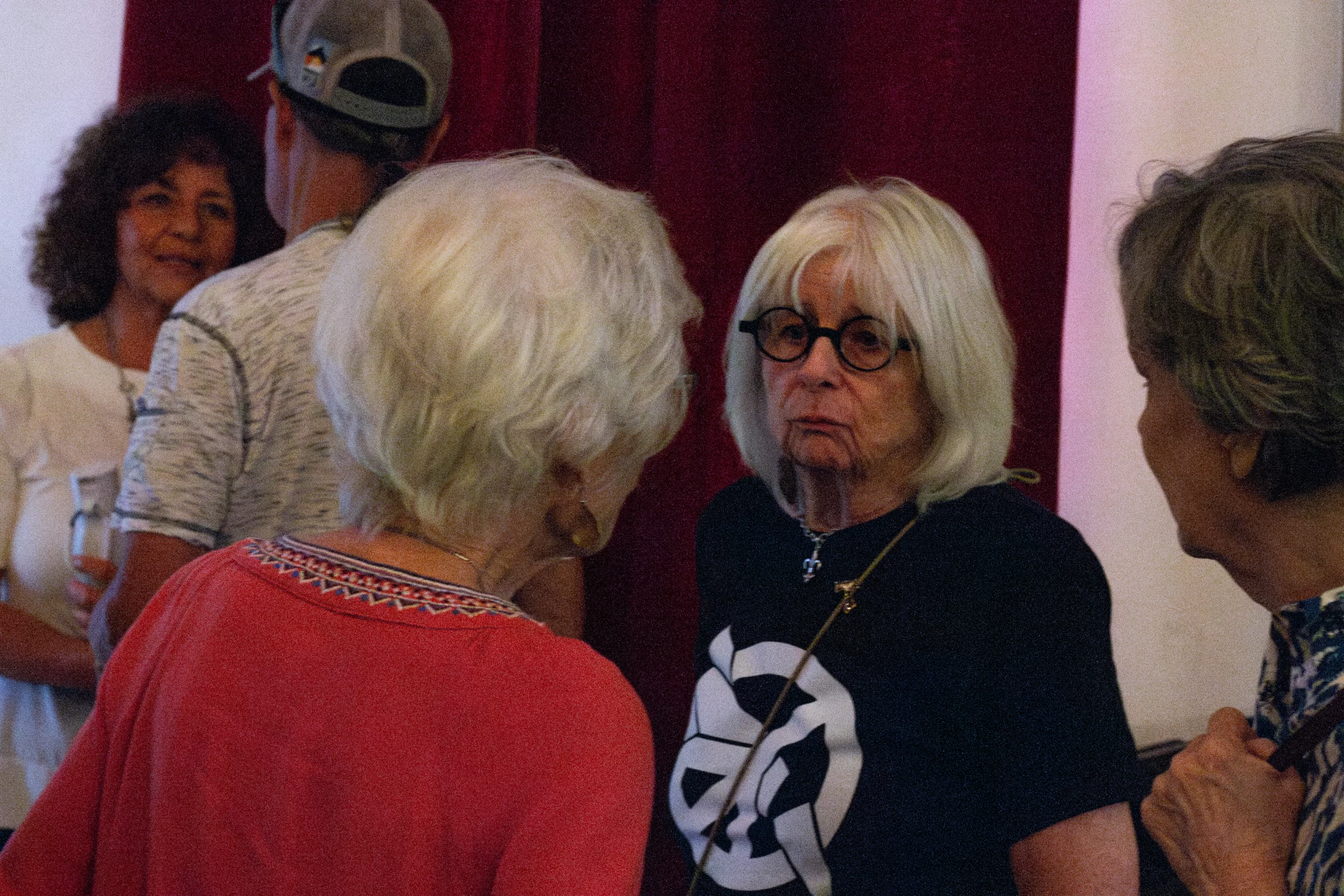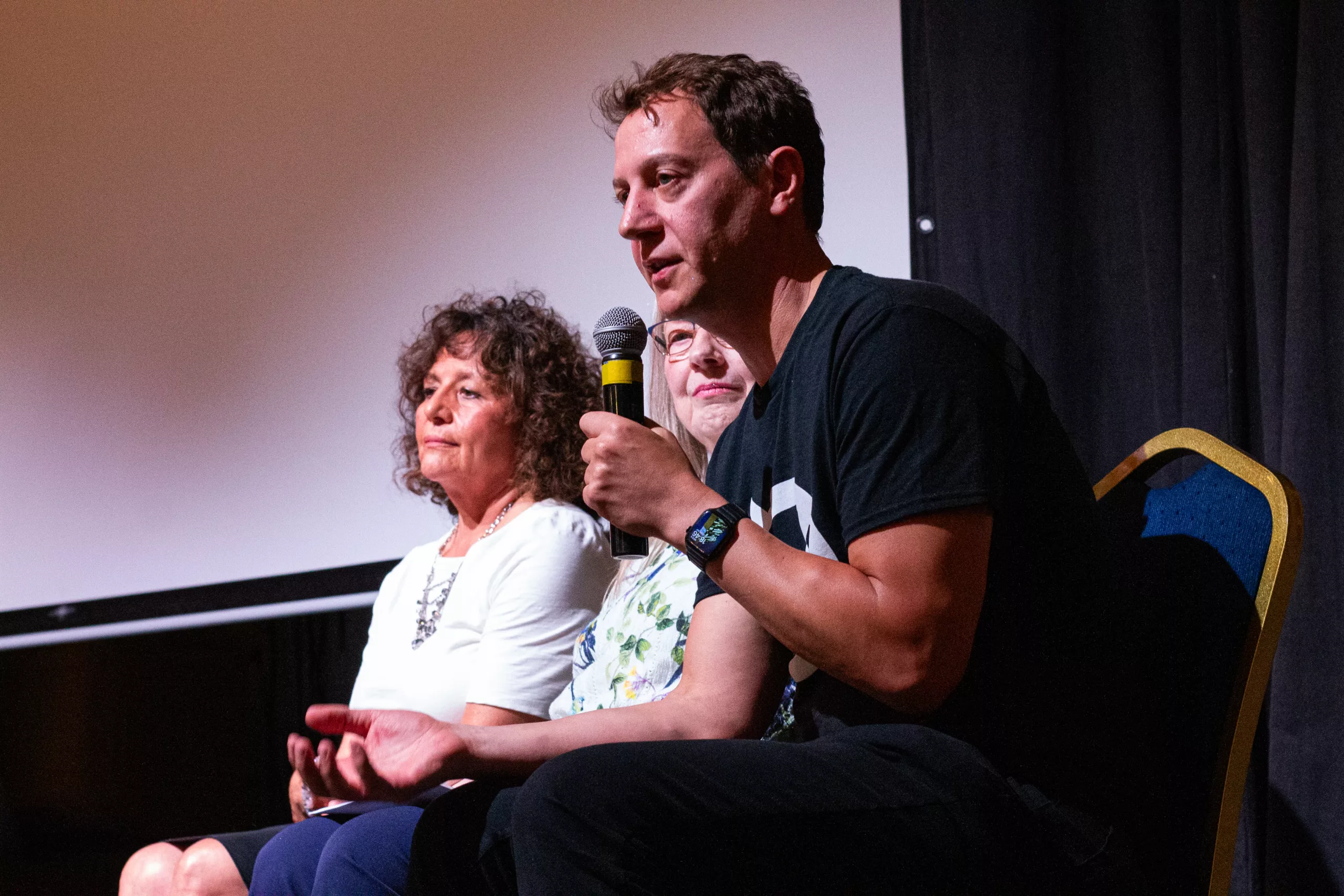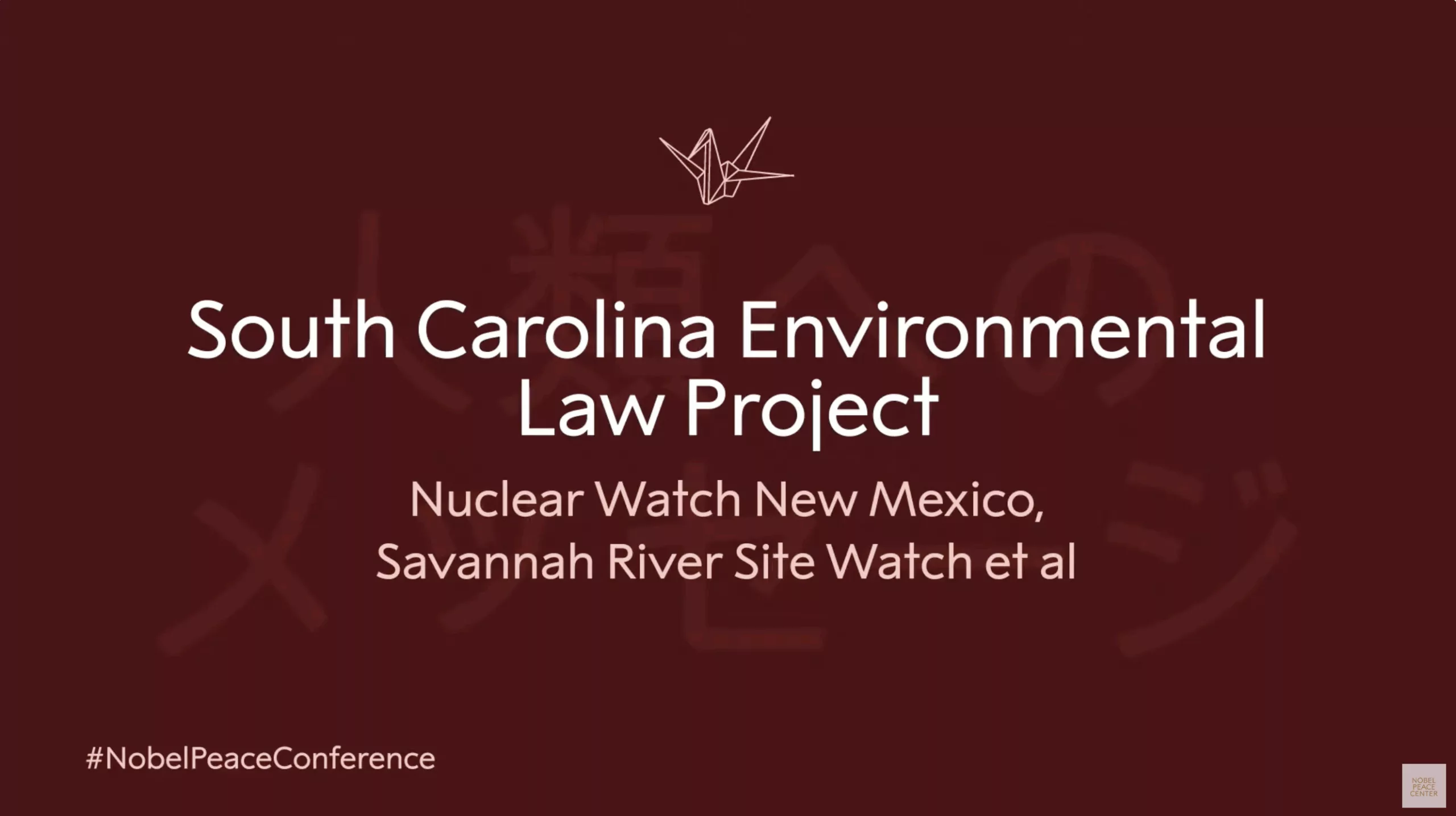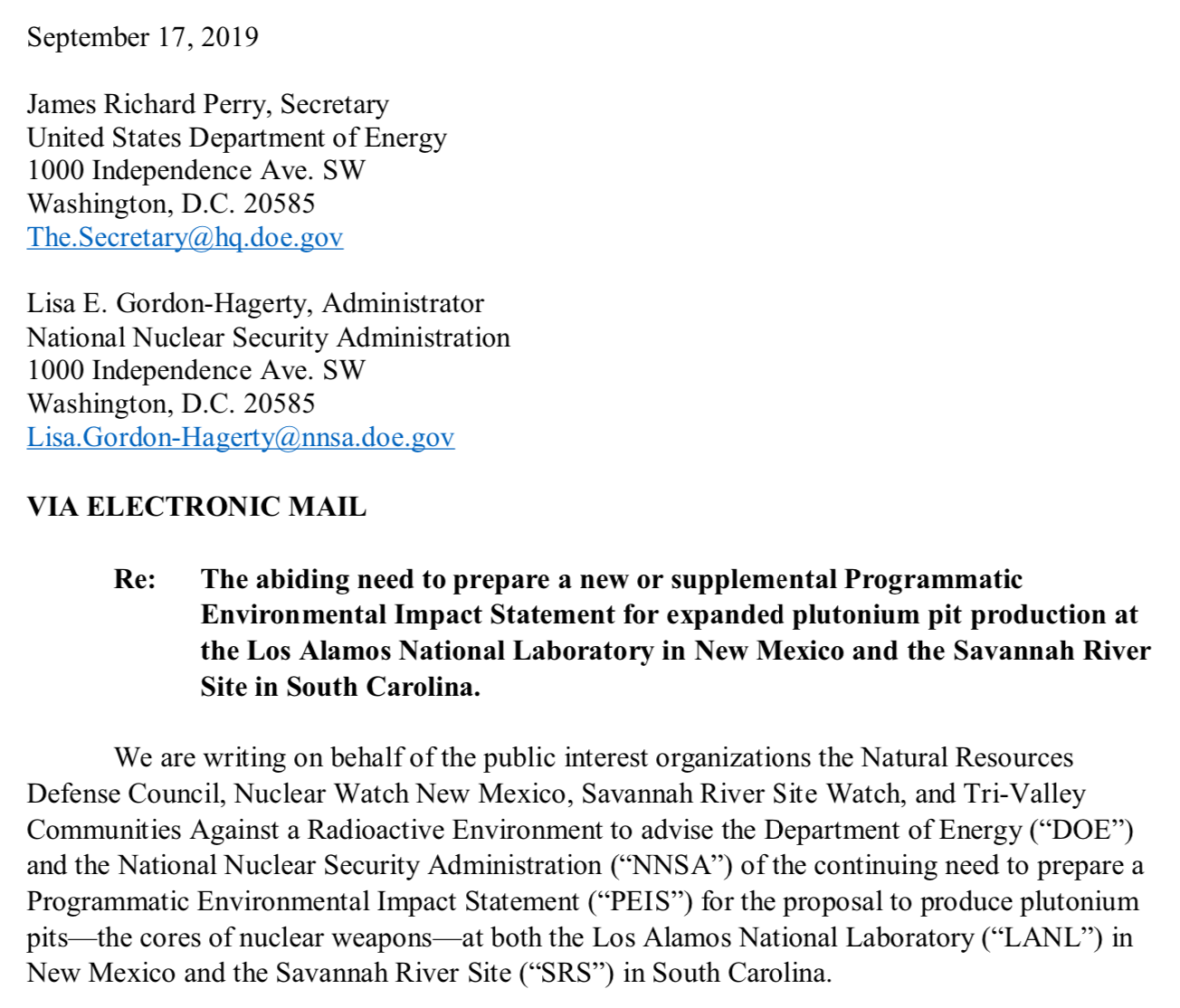Trump Orders Nuclear Weapons Testing for New Nuclear Arms Race
New Plutonium “Pit” Bomb Cores at Los Alamos Lab Could Make It Real
Just minutes before meeting with Chinese President Xi Jinping, Trump posted on his Truth Social media platform that “Because of other countries testing programs, I have instructed the Department of War to start testing our Nuclear Weapons on an equal basis. That process will begin immediately.” House Speaker Mike Johnson soon followed on CNN saying, “I think it is an obvious and logical thing to ensure that our weapons systems work.”
No other countries are currently testing nuclear weapons (the last was by North Korea in 2017). Further, any nuclear weapons tests by the U.S. would be performed by the Department of Energy (whose last test was in 1992), not the Department of War (until recently the Department of Defense). Trump was likely referring to Vladimir Putin’s recent claims of a new nuclear powered cruise missile and a tsunami-causing nuclear-armed torpedo that could threaten America’s coastal cities. In addition, China is dramatically expanding its own fleet of intercontinental ballistic missiles.
But central to all this is the U.S.’ own $2 trillion “modernization” program that will rebuild every nuclear warhead in the planned stockpile with new military capabilities and produce new-design nuclear weapons as well. This so-called modernization program will also build new nuclear weapons production facilities expected to be operational until ~2080, and buy new missiles, subs, and bombers from the usual rich defense contractors, all to keep nuclear weapons forever.
‘Nuclear weapons are blasphemous’: Archbishop Wester continues disarmament push with talk
This event was organized by the “Santa Fe Ecumenical Conversations Towards Nuclear Disarmament” group at the Santa Maria de la Paz parish near the Santa Fe Community College. They kindly invited NukeWatch to speak before Archbishop Wester for what turned out to be a wonderful event. The full recording can be viewed at https://www.youtube.com/@SMDLP/streams
By Cormac Dodd cdodd@sfnewmexican.com | October 28, 2025 santafenewmexican.com
Despite saying he has received a somewhat muted response from the local faithful, Santa Fe’s Catholic archbishop is still pushing nuclear disarmament as vital to humanity’s spiritual well-being and continued existence.
“I think nuclear weapons are blasphemous, because I think nuclear weapons are humanity’s attempt to build a Tower of Babel, an attempt to eat from the apple of the tree of the Garden of Eden, to become like God, to become gods,” Archbishop John C. Wester said in a roughly 30-minute address at Santa Maria de la Paz Catholic Church south of Santa Fe.
“In humility, we must avoid inventing anything that, in a matter of hours, can destroy what God has created,” the leader of the Archdiocese of Santa Fe continued. “The story of Adam and Eve is archetypal, I think: When human beings try to become as God, they lose the Garden of Eden and they must endure the cruel reality of paradise lost.”
The archbishop’s comments followed a journey he undertook to Japan on the 80th anniversary of the U.S. military’s decision to drop atomic bombs on Hiroshima and Nagasaki toward the end of World War II. He spoke in front of an audience of about 50 people — who gave Wester a standing ovation — at Monday’s event
In a Looming Nuclear Arms Race, Aging Los Alamos Faces a Major Test
The lab where Oppenheimer developed the atomic bomb is the linchpin in the United States’ effort to modernize its nuclear weapons. Yet the site has contended with contamination incidents, work disruptions and old infrastructure.
By Alicia Inez Guzmán | October 28, 2025 The New York Times nytimes.com
In a sprawling building atop a mesa in New Mexico, workers labor around the clock to fulfill a vital mission: producing America’s nuclear bomb cores.
The effort is uniquely challenging. Technicians at Los Alamos National Laboratory must handle hazardous plutonium to create the grapefruit-size cores, known as pits. They do so in a nearly 50-year-old building under renovation to address aging infrastructure and equipment breakdowns that have at times disrupted operations or spread radioactive contamination, The New York Times found.
Now, the laboratory is under increasing pressure to meet the federal government’s ambitions to upgrade the nation’s nuclear arsenal. The $1.7 trillion project includes everything from revitalizing missile silos burrowed deep in five states, to producing new warheads that contain the pits, to arming new land-based missiles, bomber jets and submarines.
But the overall modernization effort is years behind schedule, with costs ballooning by the billions, according to the Congressional Budget Office. In 2018, Congress charged Los Alamos with making an annual quota of 30 pits by 2026, but by last year it had produced just one approved for the nuclear stockpile. (Officials have not disclosed whether more have been made since then.)
*The featured image differs from the article photo due to usage rights.
Why Putin’s ‘invincible’ nuclear-powered missile is more likely to become a disastrous ‘flying Chernobyl’ for Russia
The US abandoned efforts to build nuclear-powered missile weapons during the 1950s arms race with the Soviet Union as a nuclear-powered missile would effectively be a huge radiation risk.
Jeffrey Lewis, a nuclear nonproliferation expert at Middlebury College, described it as a “tiny flying Chernobyl,” referencing the Soviet power plant that melted down and covered a 1,600-mile area with toxic radiation…While Lewis believes the Burevestnik is only capable of subsonic speed and easy to intercept, he warned that Russia’s ambition poses a return to the Cold War era.
“NATO aircraft could intercept it. The problem is that Burevestnik is yet another step in an arms race that offers no victory for either side,” he wrote on X.
By Ronny Reyes | October 28, 2025 nypost.com
Russian strongman Vladimir Putin’s latest threats that Moscow is preparing to deploy its new “invincible” nuclear-powered cruise missile has drawn a rebuke from President Trump and a reminder of America’s own nuclear might.
But experts say the Burevestnik missile could end up being more like a disastrous “flying Chernobyl” for Russia — and proves Putin is actually nervous about the possibility of the US giving Tomahawk cruise missiles to Ukraine.
George Barros, of the Washington-based Institute for the Study of War, described Putin’s ominous Sunday announcement as a form of fear mongering from a Kremlin afraid that the US could give Kyiv a much more conventional weapon — the tried and true Tomahawk.
Russia tested new nuclear-powered Burevestnik cruise missile
“For Trump, who has cast Russia as a “paper tiger” for failing to swiftly subdue Ukraine, the message is that Russia remains a global military competitor, especially on nuclear weapons, and that Moscow’s overtures on nuclear arms control should be acted on.”
By Guy Faulconbridge and Lidia Kelly Tim Balk | October 26, 2025 reuters.com
- Russia tests nuclear-capable Burevestnik missile
- Missile flew for 14,000 km, 15 hours
- Putin says it can pierce any missile defences
Trump Administration Providing Weapons Grade Plutonium to Sam Altman
“If there were adults in the room and I could trust the federal government to impose the right standards, it wouldn’t be such a great concern, but it just doesn’t seem feasible.”
By: Joe Wilkins | October 24, 2025 futurism.com
With the economy the way it is these days, it’s nice to have a little walking around money.
Donald Trump certainly thinks so. Since his return to the White House, the president has labeled 440 federal properties for possible sale, leased 13.1 million acres of public land for strip mining, and held a fire sale for satellites developed by NASA’s Jet Propulsion Lab.
In one of his wildest money moves to date, the Financial Times reports that Trump is now offering companies access to plutonium from America’s arsenal of cold war nuclear missiles.
On Tuesday, the US Department of Energy (DOE) launched an application for interested parties to apply for access to a maximum of 19 metric tonnes — a little under 42,000 pounds — of weapons-grade plutonium, which has long been a key resource undergirding the US nuclear arsenal.
One of the companies anticipated to receive shipments of the fissile isotope from the DOE is Oklo, a “nuclear startup” backed — and formerly chaired — by OpenAI CEO Sam Altman. Earlier in October, Oklo was one of four US companies chosen by the DOE to join a new pilot program meant to rush the testing and approval of experimental reactor designs.
As the FT reports, we won’t know for certain until December 31, when the DOE announces the companies selected to purchase the plutonium, but it’s likely Oklo will be among them. That’s stirring up plenty of anxiety throughout the scientific community, who say the relaxed approach to nuclear development is a major cause for alarm.
“If there were adults in the room and I could trust the federal government to impose the right standards, it wouldn’t be such a great concern, but it just doesn’t seem feasible,” Edwin Lyman, a physicist with the Union of Concerned Scientists told the FT.
U.S. Agency That Protects Nuclear Arsenal to Furlough Workers
Jay Coghlan, the executive director of Nuclear Watch New Mexico, a private group that monitors the agency, said it was unclear if the furloughs would have any immediate effect on nuclear safety. “As a baseline, the nuclear safety officers have always been understaffed. There is simply not enough federal oversight as is. And then you’re talking about furloughing more,” he added.
By Tim Balk | October 17, 2025 nytimes.com
![]() The National Nuclear Security Administration said 1,400 workers would be affected by Monday.
The National Nuclear Security Administration said 1,400 workers would be affected by Monday.
Nuclear weapons safety oversight in decline with Trump, Biden inaction
The lone independent federal agency responsible for ensuring safety at U.S. nuclear weapons sites — including Hanford in Washington state — will lose its ability to issue recommendations for safer work by January if the Trump administration doesn’t replenish its board, which this month dwindles to one member.
By Patrick Malone | October 15, 2025 seattletimes.com
The Defense Nuclear Facilities Safety Board ensures adequate public health and worker safety by scrutinizing hazardous work conducted by the U.S. Department of Energy and its contractors that produce and maintain the nuclear arsenal. If the Trump administration and Congress don’t move quickly to populate the board, it will be incapable of issuing formal safety recommendations to the Energy Department, according to a report last month from the Government Accountability Office, Congress’ investigative arm.
If the board is without a quorum of at least three members for a year, “the agency would essentially be able to offer only nonbinding advice to DOE,” according to the report.
“The whole idea of having the board in place is to provide the optics in addition to the substance,” Nathan Anderson, a Washington state-based director in the GAO’s natural resources division, told The Seattle Times.
The board does not have regulatory or enforcement authorities, but its advice carries significant weight and cannot be easily dismissed or disregarded, the GAO report states. The board’s recommendations to the U.S. secretary of energy are published for public comment, and the secretary must respond in writing. The board also reports each year to selected congressional committees on its recommendations to the Energy Department and any outstanding safety problems.
FULL ORIGINAL ARTICLE (SEATTLE TIMES)
YOU CAN HELP SAVE THE DNFSB TODAY:
Continue reading
New Article about “Participatory Democracy in Action” Describes WIPP Permit Negotiations
Thanks to our friends at Concerned Citizens for Nuclear Safety for this article:
In an essay for NYU’s Democracy Project, David F. Levi, a former federal judge and director emeritus of the Bolch Judicial Institute at Duke Law, reflected on the negotiations he facilitated in New Mexico about the renewal of the hazardous waste permit for the Waste Isolation Pilot Plant (WIPP), a deep geologic repository for plutonium-contaminated waste generated in the fabrication of nuclear weapons. Judge Levi’s essay is entitled “Participatory Democracy in Action.” He wrote:
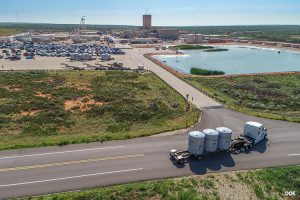 “A couple of years ago, I was asked to mediate a dispute between the U.S. Department of Energy (DOE) and the New Mexico Environment Department (NMED) concerning the renewal of a required state permit for DOE’s Waste Isolation Pilot Plant (WIPP), the nation’s only deep underground nuclear waste storage facility, located outside of Carlsbad, New Mexico. I thought I could help the two government entities but quickly came to realize that under the mediation procedures followed by New Mexico, the mediation would also involve citizen groups whose ultimate concurrence was essential to any complete resolution. This was entirely new to me.
“A couple of years ago, I was asked to mediate a dispute between the U.S. Department of Energy (DOE) and the New Mexico Environment Department (NMED) concerning the renewal of a required state permit for DOE’s Waste Isolation Pilot Plant (WIPP), the nation’s only deep underground nuclear waste storage facility, located outside of Carlsbad, New Mexico. I thought I could help the two government entities but quickly came to realize that under the mediation procedures followed by New Mexico, the mediation would also involve citizen groups whose ultimate concurrence was essential to any complete resolution. This was entirely new to me.
“In this case, there were seven such citizen groups entitled to participate and representing a variety of points of view. There was one group representing some of the government and business leaders of the town of Carlsbad who favored permit renewal on terms ensuring the continued long-term operation of WIPP. There were six groups expressing a variety of concerns about nuclear waste coming to New Mexico. They sought a more restrictive permit.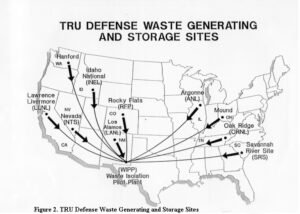
“To my astonishment, over the course of four full days, we worked through the multitude of issues and came to complete agreement. Something magical had happened. Thanks to the goodwill of the DOE and its contractor, the remarkable daily attendance and attentiveness of the NMED Secretary and the measured and well-informed way in which the various citizen groups made their points, we were able to find consensus and craft permit language that was acceptable to everyone.
“For me, as a former judge and mediator, the experience was thrilling. It was an experience of participatory democracy in action that made me proud of our fellow citizens and our government. Three aspects of the experience stand out. First, everyone in the room had taken responsibility for the way in which our nation’s only deep underground nuclear storage facility would be operated for the next 10 years. The citizen participants were not just making suggestions; they were assuming many of the attributes of decision makers. Second, all participants were advocating, compromising, and collaborating on behalf of what they saw as the public interest. These are the essential skills of democracy—the civic virtues so central to the Founders’ vision of what would make democracy work in America—and they require practice. Finally, over four days around a table, the citizens were able to take the measure of the DOE and NMED representatives. They came to realize, as I did, that these public servants, as well as the DOE contractor, were very well-informed, experienced, and intentioned. The government representatives had a similar experience of coming to appreciate the citizen questions and points of view. A government that relies on trust needs this kind of interaction to maintain that trust.
“It seems our democracy would be strengthened if we could extend the benefits of this kind of participatory structure to other areas of our legal and regulatory systems.”
“In Democracy in America, Alexis de Tocqueville made some of these points in reference to the jury trial in civil cases. He emphasized the importance of the civil jury trial as a free “public school” [https://contextus.org/Tocqueville,_Democracy_in_America_(1835),_Book_I,_Chapter_XVI_Causes_Mitigating_Tyranny_In_The_United_States_(Part_II).13?ven=Gutenberg&lang=en]  educating jurors in the democratic virtues and skills and teaching them to assume responsibility. In the same vein, every trial judge I know would attest to the importance of the jury experience for building confidence in the courts. After a trial, judges often hear words of gratitude from jurors who are deeply impressed by the legal process and are honored to have participated despite their initial dismay at being called to jury service. Sadly, the number of jury trials has diminished, particularly in federal court. Reversing that trend is a worthy goal, particularly for a branch of government that depends so heavily on public confidence.
educating jurors in the democratic virtues and skills and teaching them to assume responsibility. In the same vein, every trial judge I know would attest to the importance of the jury experience for building confidence in the courts. After a trial, judges often hear words of gratitude from jurors who are deeply impressed by the legal process and are honored to have participated despite their initial dismay at being called to jury service. Sadly, the number of jury trials has diminished, particularly in federal court. Reversing that trend is a worthy goal, particularly for a branch of government that depends so heavily on public confidence.
“As a final reflection: any persons involved as litigants will have an experience of the legal system. The experience can advance their sense of agency and participation, their ability to disagree civilly, and their trust in the courts. But how can these objectives be obtained when so many Americans cannot afford a lawyer? We can do so much better to provide understanding of and access to our justice system.”
The six New Mexico based non-governmental organizations were Citizens for Alternatives to Radioactive Dumping (CARD), Concerned Citizens for Nuclear Safety (CCNS), Conservation Voters New Mexico (CVNM), Nuclear Watch New Mexico, Southwest Alliance for a Safe Future (SAFE), and Southwest Research and Information Center (SRIC). The individual was Steve Zappe, a grandfather and former NMED WIPP Program Manager.
“A House of Dynamite” New Netflix Nuclear Catastrophe Film: Fiction, for Now
The reviews are rolling in for “A House of Dynamite,” which premiered in Europe earlier this month before coming to the U.S. on October 10th, with a full Netflix release scheduled for the 24th. Here’s the trailer, and see the schedule for Santa Fe theater showings here:
This Week! Santa Fe Theater Screenings for the Film “A House of Dynamite”
I attended one of these screenings last night, and I’ll let the professional critic reviews give the gist:
The Kathryn Bigelow thriller looks at what might happen if a ballistic missile were headed to the U.S. The director hopes the movie will start a conversation. New York Times: At Venice, ‘A House of Dynamite’ Is Scarier Than Most Horror Films
“The Netflix thriller captures from multiple perspectives the White House response to an unattributed missile launch headed for a major U.S. city in the harrowing 20 minutes until projected impact…”An unrelenting chokehold thriller so controlled, kinetic and unsettlingly immersive that you stagger out at the end of it wondering if the world will still be intact.” ‘A House of Dynamite’ Review: Idris Elba and Rebecca Ferguson in Kathryn Bigelow’s Precision-Tooled, Viscerally Unsettling Nail-Biter
“Told from the perspective of soldiers at a remote Alaskan missile base, staffers in the White House situation room, military officials at US Central Command (CENTCOM), and the president of the United States, the film weaves an overlapping timeline to show how the United States would respond to a missile attack…The film doesn’t want viewers to ask themselves how to thwart a nuclear attack on the United States. Rather, it wants the viewer to question the value of having nuclear weapons at all. ‘None of this makes sense,’ the President (Idris Elba) bemoans, ‘Making all these bombs and all these plans.'”
“A House of Dynamite is a terrifying examination of how terribly wrong things can go even with highly competent people in charge…But that’s also not necessarily the world we’re living in…The film shows why the worst can happen, even when competent, well-meaning people are trying to do the right thing.
But what if competence and decency are in short supply?” A House of Dynamite: Bigelow’s latest thriller shows why nuclear bombs are only part of the danger
This film left me reeling with tension and anxiety and exactly as the Times article titles it, is scarier than most horror films. Unlike ‘Oppenheimer,’ which largely glorified the invention of the atomic weapon, ‘A House of Dynamite’ makes it impossible to ignore the threat that nuclear weapons pose to our world. Working backwards from perspectives, and focused on how we can actually improve our odds of keeping this story a fictional one, here is what struck me most about this film:
-
-
Only one person decides what happens. But the real threat isn’t one reckless leader — it’s a reckless system. The final segment of the film features the “nuclear football” heavily, a briefcase containing launch procedures and options. In the United States, the president holds the sole and absolute authority to order the use of nuclear weapons. In the film, there are many voices in the President’s ear, but two primary perspectives quickly emerge after the defense fails and the ICBM remains inbound to its U.S. target: “One side advocates a retaliatory strike; the other, nothing. ‘It’s surrender or suicide,’ one adviser tells the President,” – thebulletin.org. The military aide carrying the nuclear football is tasked with providing the President the list of options if retaliation is chosen. An absolute must-read, Daniel Ellsberg’s book “The Doomsday Machine” breaks down many of the themes in the film with pure and terrifyingly honest account of Cold War-era nuclear strategy. In terms of launch authority, he describes how the inherent instability of the delegated command structure of the nuclear apparatus makes accidental or unwanted war an ever-present danger.
-
LANL tritium containers to head to Texas after last treatment
Four flanged tritium waste containers have been depressurized and transported to Los Alamos National Laboratory’s Weapons Engineering Tritium Facility, where they will be treated further before heading out-of-state for disposal.
By Alaina Mencinger amencinger@sfnewmexican.com | October 15, 2025 santafenewmexican.com
The containers’ final destination is Waste Control Specialists, a West Texas facility that handles the storage and disposal of radioactive waste.
The more than 1,300-acre facility in Andrews County is located on an approximately 14,000 acre property, which is sited on a thick clay formation which the company describes as “nearly impermeable.”
New documents have been added to the Los Alamos Legacy Cleanup Contract Electronic Public Reading Room.
All legacy cleanup documents required to be posted after April 30, 2018, are available on the site linked above.
For legacy cleanup documents that were posted prior to April 30, 2018, please visit the LANL electronic public reading room.
- Review, Notice of Completion of Off-Site Waste Shipments for Final Disposal, Activities 3.1.5, 3.1.8, and 3.3.4, Compliance Plan, Site Treatment Plan, Federal Facility Compliance Order Los Alamos National Laboratory [July 31, Aug. 21, 2025]
https://ext.em-la.doe.gov/GovFTPFiles/api/GetFiles/GetFile?fileName=EMID-703933_NMED_Review_STP_Shpmt_Jul_31_Aug_21_101525.pdf
Strong Political and Public Opposition Means Consolidated Interim Storage Facility (CISF) in NM “Impossible in the Near Future”
NEW UPDATE OCTOBER 10, 2025:
Holtec abandons plan to build New Mexico storage facility for spent nuclear fuel
This is excellent news. The Governor and state legislature (specifically Senator Jeff Steinborn and Representative McQueen) are to be commended for not allowing New Mexico to become the nation’s dumping ground for highly radioactive commercial spent fuel rods, especially when the Land of Enchantment has never had its own nuclear energy plant. Hard work from many New Mexicans made this happen.
So-called “interim” storage would never be interim when the federal government has failed for more than four decades to find a permanent repository for these lethal wastes. This also shows how hollow all the hype is about the claimed renaissance of nuclear power, when on the front end the industry can’t survive without taxpayer handouts, and on the back end can’t solve its radioactive waste problem.
Holtec’s quote that “New Mexico’s acquiescence is necessary” for interim storage to go forward is interesting, implying that we have to surrender as the nuclear colony that we are. Well, guess what, we didn’t surrender, and I predict you’ll see more of this. Moreover, whether you’re pro-nuclear or anti-nuclear, Holtec is an ethically questionable company, which is why the attorneys general of New Jersey and Massachusetts have sued it.
Adiós and good riddance, Holtec!
New York Times: Tax Break Scandal Leads to $5 Million Fine for N.J. Energy Company
SEE MORE:
Nuclear Weapons Issues & The Accelerating Arms Race: September 2025
Nuclear Weapons Update:
Putin has offered Trump a one-year extension of the numerical cap on strategic nuclear weapons in the new Strategic Arms Reduction Treaty which is 1,550 warheads (however, B52s are counted as one warhead while they can carry a dozen). New START expires in February 2026, which will be the first time the world will be without any nuclear arms control treaties since the mid-1970s. Trump has said it sounded like a good idea.
Note: New START ratification in 2010 provided the opportunity for Republicans in the Senate to attach the condition of $88 billion for nuclear weapons “modernization” that has since metastasized to ~$2 trillion. Nuclear disarmament must be prioritized as the ultimate goal over simply continued arms control.
A mere extension of the numerical cap would not involve Congressional ratification. The extension of New START’s numerical cap is in part to allow for a year in which to begin negotiations for a treaty replacement.
Plutonium Pit Production:
A draft plutonium pit production programmatic environmental impact statement is expected to be released next year in early 2026.
Accelerating Arms Race:
Is North Korea set to become world’s ‘fourth ICBM power’ after missile breakthrough? | Park Chan-kyong | South China Morning Post | September 11, 2025
A new era in North Korea’s missile programme may be dawning, as analysts warn of an imminent test launch of an intercontinental ballistic missile capable of carrying multiple warheads to the US mainland. Fresh from his appearance at China’s Victory Day parade in Beijing last week, North Korean leader Kim Jong-un personally oversaw the trial of a lighter, more robust solid-fuel ICBM engine, state media reported on Tuesday, touting the achievement as a “strategic” breakthrough.
Saudi Arabia signs a mutual defense pact with nuclear-armed Pakistan after Israel’s attack on Qatar | MUNIR AHMED & JON GAMBRELL | AP NEWS | September 18, 2025
DUBAI, United Arab Emirates (AP) — Pakistan’s defense minister says his nation’s nuclear program “will be made available” to Saudi Arabia if needed under the countries’ new defense pact, marking the first specific acknowledgment that Islamabad had put the kingdom under its nuclear umbrella.
Defense Minister Khawaja Mohammad Asif’s comments underline the importance of the pact struck this week between Pakistan and Saudi Arabia, which have had military ties for decades.
The move is seen by analysts as a signal to Israel, long believed to be the Middle East’s only nuclear-armed nation. It comes after Israel’s attack targeting Hamas leaders in Qatar last week killed six people and sparked new concerns among Gulf Arab nations about their safety as the Israel-Hamas war devastated the Gaza Strip and set the region on edge.
Russia suspected of helping North Korea build nuclear submarines, Seoul investigating | Park Chan-kyong | South China Morning Post | September 18, 2025
South Korea is investigating reports that Russia has supplied North Korea with nuclear submarine reactor modules, a move analysts see as highly plausible and one that could mark a breakthrough in Pyongyang’s decades-long push for a nuclear-powered navy… At the 8th Party Congress in January 2021, North Korea declared five core defence goals, including the development of nuclear-powered submarines and submarine-launched strategic nuclear weapons.
China Hardens Military Stance Against U.S. With Nuclear Weapons and Tough Talk | Brian Spegele | The Wall Street Journal| September 18, 2025
China played down its rapidly rising military might for years. In the past few weeks, Beijing has broadcast a steady drumbeat of firepower displays and muscular rhetoric, carrying an unmistakable warning for the U.S… Part of China’s confidence stems from the rapid growth of its firepower. The Pentagon estimates that China’s stockpile of nuclear warheads has more than doubled since 2020, alongside a growing array of options to launch those weapons, from mobile ground-launch systems to increasingly stealthy submarines.
Holtec Pulls Out of New Mexico Spent Nuclear Fuel Interim Storage Project
Holtec International has confirmed it is canceling plans to build a consolidated interim storage facility for spent nuclear fuel in southeastern New Mexico.
By Radwaste Solutions | October 9, 2025 ans.org
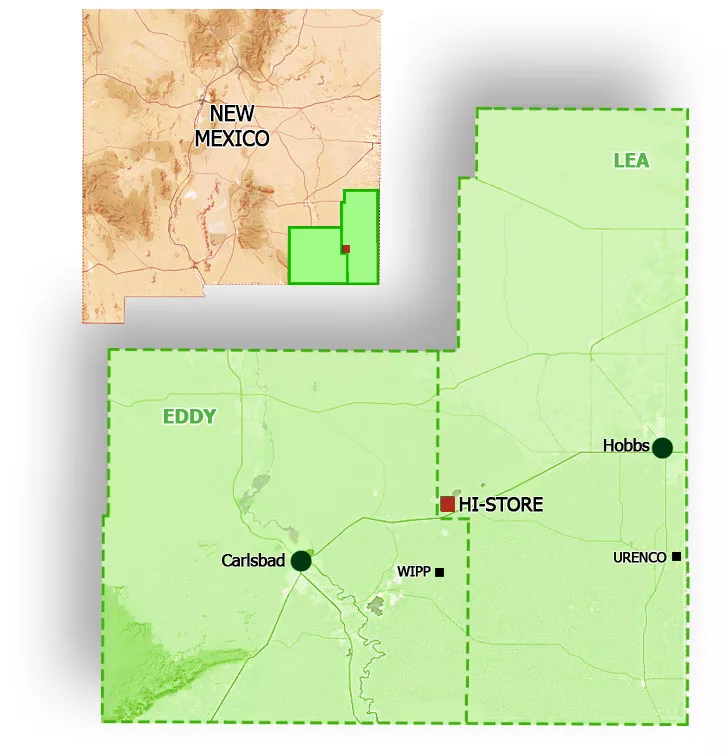
Named the HI-STORE CISF, the facility would have stored up to 10,000 canisters of commercial SNF on land owned by the Eddy-Lea Energy Alliance (ELEA) near the towns of Carlsbad and Hobbs.
“After discussions with our longtime partner in the HI-STORE project, the Eddy-Lea Energy Alliance, and due to the untenable path forward for used fuel storage in New Mexico, we mutually agreed upon canceling the agreement. This allows for ELEA to work to redevelop the property in a manner that fits their needs and allows Holtec to work with other states who are amenable to used fuel storage based on the recent DOE work on public education and outreach,” Holtec said in a statement (emphasis added).
Following the U.S. Supreme Court’s June ruling in NRC v. Texas, which found that petitioners did not have standing to challenge the Nuclear Regulatory Commission’s licensing of Interim Storage Partners’ CISF in Texas, Holtec said it expected to have its HI-STORE CISF license reinstated, allowing the company to move forward with the project. Holtec and ISP’s NRC licenses were vacated by the 5th Circuit Court of Appeals in a 2023 ruling.
Despite the court’s decision, New Mexico Gov. Michelle Lujan Grisham said she remained committed to preventing the HI-STORE CISF from being built. In 2023, New Mexico passed a bill barring the storage and disposal of high-level radioactive waste in New Mexico without the state’s explicit consent.
The AI Doomsday Machine Is Closer to Reality Than You Think
“Most troubling to experts on AI and nuclear weapons is that it’s getting harder and harder to keep decisions about targeting and escalation for nuclear weapons separate from decisions about conventional weapons.”
“There is no standing guidance, as far as we can tell, inside the Pentagon on whether and how AI should or should not be integrated into nuclear command and control and communications,” says Jon Wolfsthal, director of global risk at the Federation of American Scientists.
By Michael Hirsh | September 2, 2025 politico.com
Jacquelyn Schneider saw a disturbing pattern, and she didn’t know what to make of it.
Last year Schneider, director of the Hoover Wargaming and Crisis Simulation Initiative at Stanford University, began experimenting with war games that gave the latest generation of artificial intelligence the role of strategic decision-makers. In the games, five off-the-shelf large language models or LLMs — OpenAI’s GPT-3.5, GPT-4, and GPT-4-Base; Anthropic’s Claude 2; and Meta’s Llama-2 Chat — were confronted with fictional crisis situations that resembled Russia’s invasion of Ukraine or China’s threat to Taiwan.
Director Kathryn Bigelow is Sounding the Nuclear Alarm – Washington Post New Review
“A House of Dynamite” asks: How would the White House respond in the face of a nuclear attack?
By Max Boot | October 2, 2025 washingtonpost.com
VIEW MORE: “A House Of Dynamite” Q&A w/ Director Kathryn Bigelow, Tracy Letts, Jared Harris, And More At New York Film Fest —
80th Commemorations of Ban the Bomb – Trinity, Hiroshima & Nagasaki Remembrances in New Mexico
Exchange Monitor: DNFSB makes agency fixes, but needs members, GAO finds
The Defense Nuclear Facilities Safety Board (DNFSB) has tackled all but a few third-party recommendations to improve its culture over the past decade but suffers from a depleted board, according to a new report.
By ExchangeMonitor | September 5, 2025 santafenewmexican.com
Progress is tough with the five-person board probably…
China Hardens Military Stance Against U.S. With Nuclear Weapons and Tough Talk
Xi positions Beijing as powerful center of new global order as security forum convenes in capital
By Brian Spegele | September 18, 2025 wsj.com
BEIJING—China played down its rapidly rising military might for years. In the past few weeks, Beijing has broadcast a steady drumbeat of firepower displays and muscular rhetoric, carrying an unmistakable warning for the U.S….
Saudi Arabia signs a mutual defense pact with nuclear-armed Pakistan after Israel’s attack on Qatar
While not specifically discussing the bomb, the agreement states “any aggression against either country shall be considered an aggression against both,” according to statements issued by both Pakistan’s Foreign Affairs Ministry and the state-run Saudi Press Agency.
By MUNIR AHMED and JON GAMBRELL | September 18, 2025 apnews.com
ISLAMABAD (AP) — Saudi Arabia and nuclear-armed Pakistan have signed a mutual defense pact that defines any attack on either nation as an attack on both — a key accord in the wake of Israel’s strike on Qatar last week.
The kingdom has long had close economic, religious and security ties to Pakistan, including reportedly providing funding for Islamabad’s nuclear weapons program as it developed. Analysts — and Pakistani diplomats in at least one case — have suggested over the years that Saudi Arabia could be included under Islamabad’s nuclear umbrella, particularly as tensions have risen over Iran’s atomic program.
COMMUNITIES FOR CLEAN WATER: LANL Radioactive Tritium Venting Fails to Provide Transparency, Assurance, and Respect for Local Communities
FOR IMMEDIATE RELEASE: September 18, 2025
Santa Fe, NM — As NNSA and LANL continue operations to depressurize Flanged Tritium Waste Containers, Communities for Clean Water (CCW) calls out federal agencies for issuing vague assurances instead of transparent, verifiable data — and for dismissing community concerns with contradictory and incomplete statements that disregard what independent experts have found, the Department of Energy’s (DOE) own legal obligations, and the New Mexico Environment Department’s (NMED) acknowledgment that LANL has a long record of compliance failures.
“How can our communities be expected to trust LANL when they won’t give us access to the raw, real-time monitoring data – independently verified by the EPA,” asks Joni Arends with Concerned Citizens for Nuclear Safety. “Without this transparency, LANL is continuing a legacy of empty assurances, not accountability.”
Key Concerns:
-
Lack of real-time transparency – Since Friday (Sept. 12), the public has been forced to rely on NMED’s Facebook page for piecemeal updates. While LANL’s website provides very brief daily summaries, no near-real-time monitoring dashboard from DOE, NNSA, or LANL has been made available.
-
Vague assurances, not real information – NNSA’s updates claim “no tritium was released” while simultaneously telling the public to expect “very low levels of tritium” for subsequent venting. Without numbers, monitoring data, or detection thresholds, these phrases do not provide reassurance.
-
Weather risks – LANL has not disclosed thresholds for wind, rain, or humidity that would postpone venting. Communities watch weather shifts in real time but are left in the dark about how safety decisions are being made.
-
Dismissal of public health concerns – When asked for plain-language guidance that NMED stated LANL would provide, LANL responded only with “no offsite impact anticipated.” This is not meaningful and reassuring guidance, it’s a blanket dismissal that disregards independent expert findings and fails to meet DOE’s obligations to protect vulnerable populations.
-
Ignoring daily lifeways – Avoiding Pueblo Feast Days is not enough. This is harvest season, when outdoor cultural events, youth programs, and farming are in full swing. LANL’s scheduling continues to disregard these realities.
Unanswered Questions
Independent experts and community advocates have raised critical unanswered questions:
-
Unclear “depressurization” – LANL said “no internal pressure was found” in a container, but also claimed it was “depressurized.” If no pressure existed, what was released?
-
Unanswered helium questions – NMED stated helium was released, but LANL has not explained its origin. Was it introduced at sealing of the outer container, or a decay product of tritium?
-
Monitoring limits undisclosed – LANL has not disclosed the detection limits of its monitoring equipment. Readings “indistinguishable from zero” could still mask releases.
DOE NNSA Gives Misleading Statements on Native America Calling
On a recent Native America Calling program, DOE NNSA’s Los Alamos Field Office Deputy Director Pat Moss compared LANL venting to global natural tritium stocks. Independent expert Dr. Arjun Makhijani pointed out this comparison as misleading: “The problem is not global background, but local contamination. If venting occurs in rain and calm winds, local rainfall could exceed U.S. drinking water standards by hundreds to thousands of times.”
In their most recent public meeting, LANL admitted that infants could receive three times the radiation dose as adults. During the interview, Dr. Makhijani pressed this point – if adults are modeled at 6 mrem, that means infants could be at 18 mrem, nearly double the EPA’s 10 mrem compliance limit. Instead of addressing this directly, Mr. Moss provided a stock line, “We will be compliant with the regulatorily imposed release threshold and will be doing the calculations per the regulation.”
That is exactly the problem – hiding behind regulatory caps while ignoring clear evidence that infants, our most vulnerable, face exposures above legal limits.
DOE NNSA also pointed to the Defense Nuclear Facilities Safety Board (DNFSB) – an independent federal oversight body created by Congress – as if it had declared the tritium venting operation as “fully protective of the public”. That is misleading. First, the DNFSB has been operating without a quorum for months, limiting its ability to issue independent recommendations. Second, what the Board staff said in its July 2025 presentation was that the overall nuclear safety risk to the public is low if DOE’s proposed controls are followed. The DNFSB has also flagged ongoing safety concerns at LANL including deficiencies in Area G’s safety analysis and risk to workers.
First of four containers of tritium waste at LANL has been vented
The first of four flanged tritium waste containers awaiting removal from Los Alamos National Laboratory has been vented, the New Mexico Environment Department announced Tuesday afternoon.
By Alaina Mencinger amencinger@sfnewmexican.com | September 16, 2025 santafenewmexican.com
The container can now be moved for treatment at LANL and then, eventually, to an off-site disposal area.
No internal pressure was found in the first container, according to the National Nuclear Security Administration, suggesting the inner containers in the flanged tritium waste container hadn’t leaked. Air monitoring did not show an increase of tritium beyond background levels, the federal agency wrote.
No tritium emissions were released, the Environment Department wrote in its Tuesday post on X, formerly Twitter. Both the state agency and the U.S. Environmental Protection Agency are monitoring the process.
The depressurization of the containers is set to continue at 7 a.m. Wednesday, although the NNSA noted the schedule is subject to change due to weather. The four containers will be vented one at a time over an estimated two-week period.
*The featured image differs from the article photo due to usage rights.
New Mexicans Can Save the DNFSB; Contact Our Senators Today
From our friends at Concerned Citizens for Nuclear Safety:
The independent Defense Nuclear Facilities Safety Board has been dwindling from a five-member board to one member and may disappear if we, the People, do not raise our voices to support its essential nuclear safety work. The Safety Board needs at least two new members. And that needs to get done by Saturday, October 18th. https://www.dnfsb.gov/about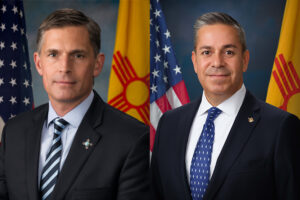
New Mexico U.S. Senators Heinrich and Lujan have key roles to play to ensure the Safety Board’s work continues unimpeded. https://www.heinrich.senate.gov/ and https://www.lujan.senate.gov/ Our voices of support are essential to ensure communities continue to receive the essential services of the Safety Board and its staff.
Right now members of the Safety Board’s staff are monitoring the venting of radioactive tritium from Area G at Los Alamos National Laboratory (LANL). Their expertise in the field of nuclear safety and their demonstrated competence and knowledge relevant to their independent investigative and oversight functions are an essential part of the process. They will be part of the follow-up once the venting of the four flanged tritium waste containers is completed. https://tewawomenunited.org/?s=tritium, https://www.ccwnewmexico.org/tritium, https://nuclearactive.org/
Not only does the Safety Board have staff at LANL, but also at Sandia National Laboratories in Albuquerque and at the Waste Isolation Pilot Plant, the burial site for plutonium contaminated nuclear weapons waste, near Carlsbad. https://ananuclear.org/facilities/
Russia suspected of helping North Korea build nuclear submarines, Seoul investigating
Analysts said such a technology transfer was plausible given Pyongyang’s support for Russia’s ongoing war in Ukraine
By Park Chan-kyong | September 18, 2025 scmp.com
South Korea is investigating reports that Russia has supplied North Korea with nuclear submarine reactor modules, a move analysts see as highly plausible and one that could mark a breakthrough in Pyongyang’s decades-long push for a nuclear powered navy…
Holy See tells nations at UN to end threat of nuclear weapons, even as deterrence
Amid a global arms race, ending the threat of nuclear war — and even the testing of nuclear weapons — is imperative, said the Holy See’s diplomat to the United Nations.
By Gina Christian, OSV News | September 8, 2025 catholicreview.org
Archbishop Gabriele G. Caccia, the Holy See’s U.N. permanent observer, shared his thoughts in a statement he delivered Sept. 4 at U.N. headquarters in New York, during the General Assembly High-level Plenary Meeting to Commemorate and Promote the International Day Against Nuclear Tests, observed that same day.
“The pursuit of a world free of nuclear weapons is not only a matter of strategic and vital necessity, but also a profound moral responsibility,” Archbishop Caccia in his remarks.
He pointed to the introduction of nuclear weapons — first detonated by the U.S. in 1945 over the Japanese cities of Hiroshima and Nagasaki, killing an estimated 110,000 to 210,000 people, during World War II — as unveiling to the world “an unprecedented destructive force.”
Historic peace vigil partially dismantled after Trump orders: ‘Take it down’
Law enforcement officials on Sunday removed parts of the White House Peace Vigil, which has sat just outside the White House for decades.
By Marissa J. Lang, The Washington Post | September 8, 2025 washingtonpost.com
But over the past week, it faced a new threat as Trump turned his attention to the vigil and federal officers picked apart the structure that shields protesters and their signs from the elements. The vigil is maintained by a rotating cast of volunteers who keep the protest going 24 hours a day, seven days a week.
On Friday, Brian Glenn, a correspondent for the conservative network Real America’s Voice, told the president during a gathering with reporters that there was “a blue tent” in front of the White House that was “an eyesore.” Trump initially said he was unaware of it, but he then quickly ordered its removal.
Photo by Sig. Chiocciola, Creative Commons: The White House Peace Vigil on March 30, 2025 staffed by volunteers, Philipos Melaku-Bello (left) and Joe Brown (right).
For 80 years, nuclear weapons have been the unused threat
Amid a global arms race, ending the threat of nuclear war — and even the testing of nuclear weapons — is imperative, said the Holy See’s diplomat to the United Nations.
By Matt Kelly, mkelly@virginia.edu, September 3, 2025 news.virginia.edu
In the 80 years since World War II, which ended with the use of two atomic bombs, the world has maintained a tenuous relationship with nuclear weapons.
Philip Potter, professor of public policy at the University of Virginia’s Frank Batten School of Leadership and Public Policy and director of the National Security Data and Policy Institute, said he worries about the current delicate nuclear balance.
“Eighty years of non-use is the product of both good diplomacy and a recognition of the potential consequences,” Potter said. “The fearsome power of nuclear weapons causes countries pause before they use them, but a great deal of work has also gone into nonproliferation and the management of crises to keep them away from the nuclear brink. In some ways the dynamics of the Cold War made managing the potential for nuclear confrontation easier.”
It’s a very different strategic scenario now, where there are nine nuclear powers and less capacity to manage them.
A House of Dynamite review – Kathryn Bigelow’s nuclear endgame thriller is a terrifying, white-knuckle comeback
★★★★★: Amid a global arms race, ending the threat of nuclear war — and even the testing of nuclear weapons — is imperative, said the Holy See’s diplomat to the United Nations.
By Peter Bradshaw, The Guardian | September 2, 2025 theguardian.com
Kathryn Bigelow has reopened the subject that we all tacitly agree not to discuss or imagine, in the movies or anywhere else: the subject of an actual nuclear strike. It’s the subject which tests narrative forms and thinkability levels.
Maybe this is why we prefer to see it as something for absurdism and satire – a way of not staring into the sun – to remember Kubrick’s (brilliant) black comedy Dr Strangelove, with no fighting in the war room etc, rather than Lumet’s deadly serious Fail Safe.
NEW UPDATED INFORMATION: MUST READ!!! PROVIDED BY: THE TULAROSA BASIN DOWNWINDERS CONSORTIUM — WHAT TO KNOW ABOUT THE COMPENSATION AVAILABLE THROUGH THE RECA PROGRAM
 SEEKING JUSTICE FOR THE UNKNOWING, UNWILLING, AND UNCOMPENSATED INNOCENT VICTIMS OF THE JULY 16, 1945 TRINITY BOMB
SEEKING JUSTICE FOR THE UNKNOWING, UNWILLING, AND UNCOMPENSATED INNOCENT VICTIMS OF THE JULY 16, 1945 TRINITY BOMB
A Message From Tina
The DOJ is now accepting claims and has provided guidance on the claims process. They will only accept mail in claims at this time. They have indicated that an electronic process will be implemented by the end of the year. For more information you can go to the DOJ website at: https://www.justice.gov/civil/reca
Please be careful when supplying documentation via the regular mail. If you decide to file this way you may want to send the documents via certified mail. Once the electronic process begins it will be easier to assure that your documents are safe and being handled properly with little to no risk.
There are organizations/attorneys who are soliciting people to file claims with them. They use all sorts of tactics to get people to believe their services are necessary and often guarantee results. Please be aware that if an entity files a RECA claim on your behalf they will charge a fee. They receive the check, deduct their fee, and then pay you.
There will be Radiation Exposure Screening and Education Program (RESEP) clinics in our State that will assist people with claims. The claims process is not necessarily difficult and we’ll be training people to assist with the application process when needed. We’ll also be looking to government agencies to cooperate in locating necessary documentation for the application process. PLEASE DO NOT TURN OVER YOUR RECORDS TO ANYONE THAT YOU ARE NOT SURE ABOUT. You can remain updated about the application process, the training we’re going to organize or other questions you might have by going to our website at: www.trinitydownwinders.com
What does the expansion of RECA do?
The Radiation Exposure Compensation Act program has been re-authorized and extended through Dec 31, 2028 but the application deadline is Dec 31, 2027.
Downwinders who lived in New Mexico for one year from 1944 through Nov. 1962 will be eligible and family members can apply on behalf of a deceased loved one.
There are 19 cancers that are covered by the expansion.
The cancers covered are:
Leukemia (except chronic lymphocytic Leukemia); Lymphoma (other than Hodgkins); Primary cancers of the Thyroid, Breast, Esophagus, Stomach, Pharynx, Small Intestine, Pancreas, Bile Duct, Gall Bladder, Salivary Gland, Urinary, Bladder, Brain, Colon, Ovary, Liver (unless cirrhosis/Hepatitis B present), and Lung.
Compensation for downwinders will be increased to $100,000 and Downwind coverage is expanded to cover the entire state of New Mexico
Coverage for uranium miners and workers would be expanded:
To workers through Dec 31, 1990
To core drillers and remediation workers
To cover additional kidney disease for uranium miners
To allow for combined work histories
What does this mean?
This is the biggest expansion of RECA in the history of the program and it wouldn’t have happened without the tireless advocacy of Senator Lujan, Representative Leger Fernandez, Senator Heinrich, Representative Stansbury and Representative Vasquez.
While it is a significant win, it still leaves out many impacted communities, including the parts of Nevada and Arizona not previously covered, along with Montana, Colorado, and Guam.
The 2-year extension will likely not be adequate time to get all the people in New Mexico who qualify enrolled and this bill does not have health care benefits for Downwinders. We will continue to fight for a longer extension and the addition of healthcare benefits. This is an important first step because it reinstates the program keeping it operational so people can continue to apply for benefits and get the help they need, and it shows that expansion is possible and provides an opportunity to address concerns raised about the cost of expansion.
We are grateful for the win and consider this a big step in the right direction. We look forward to the day that claims are successfully filed and the people of New Mexico begin to see the benefit of the expansion of RECA. Stay tuned for updates and many thanks to all of you who have stood together with us in this fight!Continue reading
Threads cast and crew suffered ‘trauma’ after film
The creators of a documentary about the making of nuclear apocalypse film Threads say many of the cast and crew had “suffered with the trauma of being involved”.
By Chloe Aslett, BBC News | August 29, 2025 bbc.com
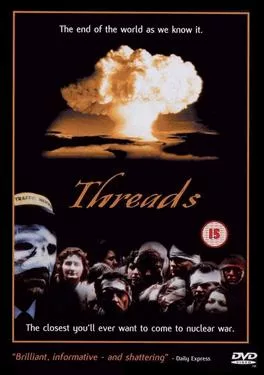
Threads, which tracks the aftermath of a nuclear attack on Sheffield, was first screened on the BBC on 23 September 1984 and fast became a cult classic.
Now filmmakers Craig Ian Mann and Rob Nevitt have spoken to more than 50 people involved in the making of the film for their documentary Survivors: The Spectre of Threads.
Mr Mann said: “[Threads] is a film that more than any I can think of everybody who worked on it it has impacted their lives in some way or another. Sometimes very positively and sometimes somewhat negatively.”
“There are people who have suffered the trauma of having been in and seen Threads,” he told BBC Radio Sheffield.
“There’s one participant in the documentary who has become a Doomsday prepper.
“He lives in America and has a bunker and canned food and weapons and he is prepared for the end of the world at any moment and that’s because he was in and saw Threads.”
Trump wants to stop nuclear proliferation. STRATCOM could play a major role.
Henry Sokolski, executive director of the Nonproliferation Policy Education Center, argues that the US needs to carry a new “big stick.”
By Henry Sokolski, Breaking Defense | August 29, 2025 breakingdefense.com

Last Monday, President Donald Trump pronounced, “We can’t let nuclear weapons proliferate.” Two days later, Secretary of State Rubio met with International Atomic Energy Agency (IAEA) Director General Rafael Mariano Grossi and recommitted the United States to preventing the proliferation of nuclear weapons.
After America’s bombing of Iran’s suspect nuclear sites, there’s cause to take these commitments seriously, but only if it’s more than a one off.
Emphasizing consistency is essential. Historically, America has backed nonproliferation in fits and starts. Under Presidents Gerald Ford and Jimmy Carter, the United States opposed the recycling of plutonium for commercial use because it was too close to bombmaking. It blocked reprocessing activities in South Korea, Taiwan, and Brazil.
Full Event Recording: Press Conference & Commemoration – Hiroshima Atomic Bombing 80th Anniversary Event (August 6, 2025)
DOE and LANL Silence Public and Tribal Community Member Voices While Pushing Radioactive Tritium Venting
For Immediate Release: August 22, 2025
Contact: Kalyn Mae Finnell, Coordinator, Communities for Clean Water
Los Alamos, NM — This week’s so-called “public meeting” regarding Los Alamos National Laboratory’s (LANL) proposal to vent radioactive tritium emphasized the persistence of the Department of Energy (DOE) National Nuclear Security Administration (NNSA) and LANL to disregard communities concerns while prioritizing nuclear weapons projects.
In-person attendees were allotted three minutes to make statements about their concerns. Over 100 online participants—including many Pueblo community members who could not attend the meeting in Los Alamos in-person due to health, distance, or work commitments—were surprised to find that they were not permitted to provide verbal comments and restricted to submitting only one emailed question. DOE/NNSA and LANL gave no prior notice of this change. “This is not meaningful participation. It is exclusion,” said Marissa Naranjo with Honor Our Pueblo Existence.
The stakes are at an all time high. Tritium — produced in the development of nuclear weapons as triated water — is a radioactive isotope of hydrogen that travels quickly through air, water, soil, and food. When exposed to the human body, it can cause cancer, genetic damage, cross the placental barrier, and cause health impacts across generations. DOE/NNSA insists venting is the sole safe option moving forward—however, their own “independent” technical review revealed significant issues with this assertion. The review acknowledged significant deficiencies: the absence of real-time monitoring, a lack of container-specific risk analysis, and insufficient examination of safer alternatives such as filtration or storage until decay occurs. Community members are also asking: How can a review be independent when DOE managed the process, designated the reviewer, and defined the scope? This does not represent independence—it signifies a conflict of interest.
“This is the same broken pattern we’ve seen for decades,” said Joni Arends with Concerned Citizens for Nuclear Safety. “LANL creates the danger, then tells us radioactive releases are our only option. They force the public and Pueblo communities into what NMED itself has called ‘untenable situations.'”
Local community leaders also noted that DOE has consistently overlooked reports by Tewa Women United, Communities for Clean Water, and scientific experts regarding the risks associated with tritium. These technical reports documented exposure pathways unique to Pueblo communities, including impacts on women, children, and traditional farming lifeways. By sidelining this research, DOE has once again dismissed Indigenous voices and lived experiences—further diminishing trust and perpetuating environmental racism.
“If our gathering here today is to mean anything, it must mean that in fidelity to all those whose lives were destroyed or savagely damaged on August 6, 80 years ago, we refuse to live in such a world of nuclear proliferation and risk-taking. We will resist, we will organize, we will pray, we will not cease, until the world’s nuclear arsenals have been destroyed.”
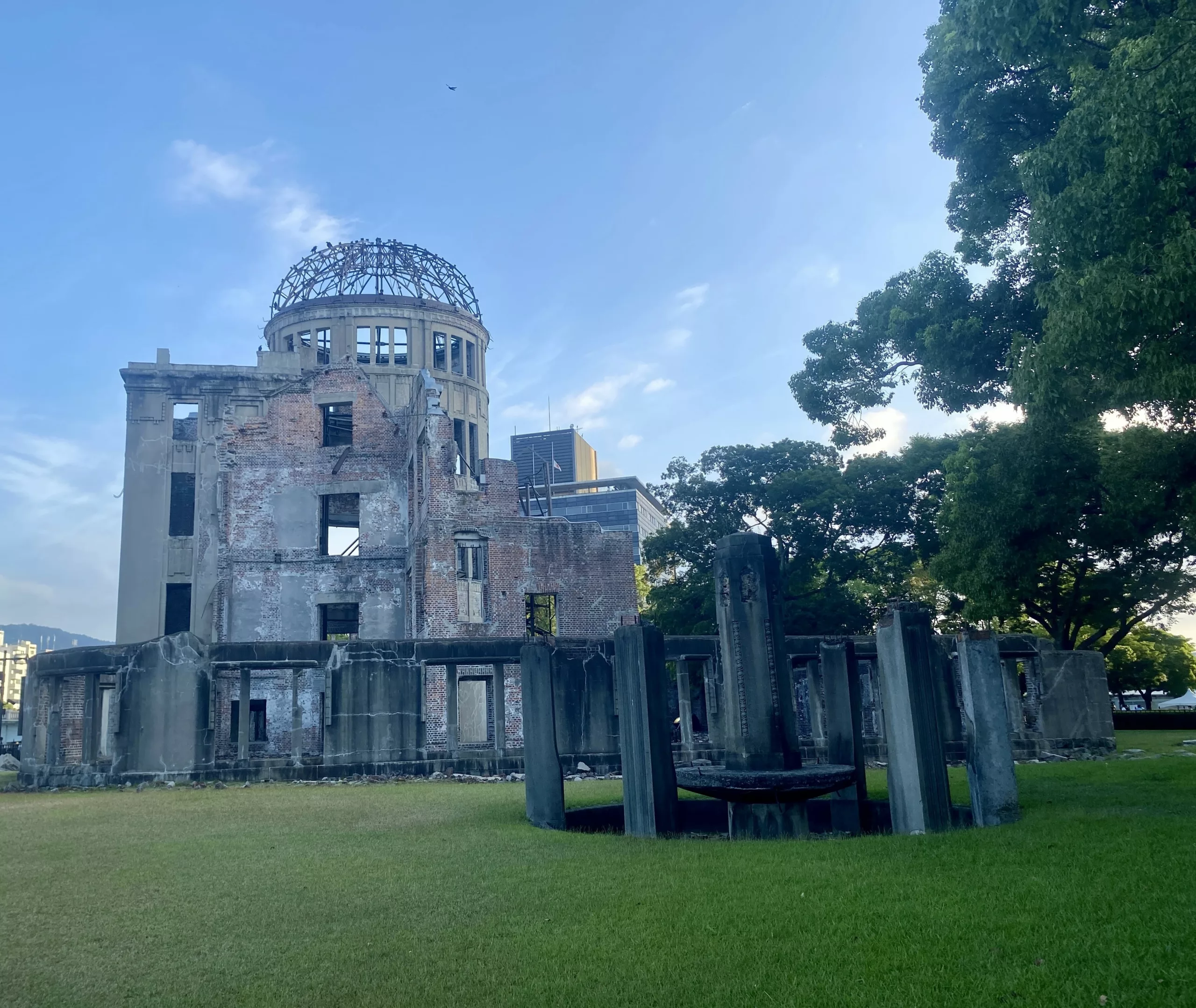 — Cardinal Bob McElroy of Washington, DC, August 5, 2025, at the World Peace Memorial Cathedral in Hiroshima, Japan.
— Cardinal Bob McElroy of Washington, DC, August 5, 2025, at the World Peace Memorial Cathedral in Hiroshima, Japan.
Nuclear Weapons Issues & The Accelerating Arms Race: August 2025
Nuclear Weapons Budget:
• NNSA’s detailed budget was finally released, the latest ever. $2.8 billion is for “plutonium modernization” (i.e., pit production) projects, of which $1.8 billion for LANL. The Lab’s nuclear weapons programs are having a full billion dollars added to them for FY 2026 (which begins this October 1) on top of the $4 billion they already have. The Lab’s $6 billion FY 2026 budget is now 84% nuclear weapons. Meanwhile cleanup and nonproliferation programs are being cut by 5% and renewable energy research completely eliminated.
• Over for the next four years the “reconciliation” bill adds another $750 million for plutonium modernization (mostly at SRS) and $1 billion “to accelerate the construction of National Nuclear Security Administration facilities.”Continue reading
August 6th U.S. Atomic Bombing of Hiroshima Commemoration in Santa Fe
Eighty Years Later, it is Beyond Time to Get Rid of Nuclear Weapons.
Last week on August 6, 2025, the 80th anniversary of the U.S. atomic bombing of Hiroshima, community members gathered at the Center for Progress and Justice on Cerrillos Road in Santa Fe to honor the solemn occasion and demand an end to the ongoing nuclear weapons harm and destruction that first began here in New Mexico.
The event was organized by Nuclear Watch New Mexico in collaboration with the Up in Arms campaign by Ben Cohen, co-founder of Ben & Jerry's, to reduce military and nuclear weapons spending, the International Campaign to Abolish Nuclear Weapons (winners of the 2017 Nobel Peace Prize), the Santa Fe Archdiocese, the Back from the Brink New Mexico Hub, and the Tularosa Basin Downwinders Consortium. It centered around a massive public art installation from Up in Arms of a towering cubic structure framed by messages on top of images of $100 bills. The structure is sized to literally hold $100 billion of those bills, respresenting what the U.S. spends every year on nuclear weapons (the total cost of nuclear weapons "modernization" is up to $2 trillion). Visible to thousands of drivers each day, the large installation pressures viewers to reckon with the scale of this cost and to imagine what else those resources could make possible. A prominent message on one of the four sides quotes the president in saying, "'We don't need to build brand new ones. We already have so many,' — Donald Trump" and below it, "His budget includes a down payment of $2 trillion of nuclear weapons." Another side reads, "The current U.S. nuclear arsenal is the equivalent of 50,00 Hiroshima explosions. One nuclear bomb killed over 100,000 people in Hiroshima."
The installation will remain on display for the foreseeable future, GO SEE IT NOW! 1420 Cerrillos Road, Santa Fe, NM 87505.
During the event, speakers Archbishop John C. Wester (by video from Japan), Tina Cordova of the Tularosa Basin Downwinders, Sophie Stroud from Nuclear Watch New Mexico, Anne Pierce-Jones from Back from the Brink, Ben Cohen representing Up in Arms, and Seth Shelden from ICAN all gave concrete steps and actions that concerned citizens can take to help promote a safer world. The speakers were presented by former Santa Fe County Commissioner Anna Hansen, who stated, “Disarmament is the only answer. I have spent my life working to end the nuclear cycle, as many have, and most of us in this room have never known a world without nuclear weapons.”
Speakers drew connections between the devastation in Hiroshima and the continued production of plutonium pits at LANL. At Los Alamos National Lab alone, five billion dollars will be poured into nuclear weapons programs in Fiscal Year 2026, starting this October. One billion dollars was added to last year’s budget, which includes a 42% increase for nuclear warheads. At the same time, nonproliferation programs are being cut, the science budget sliced in half, and funds for renewable energy zeroed out and gone completely. The push for "modernization" of the US’s nuclear arsenal is directly linked to plutonium pit production at Los Alamos, specifically expanding plutonium pit production. LANL will receive $1.7 billion in direct costs for pit production in 2026. Add in the indirect costs, and it’s roughly double that. All of this future pit production is exorbitantly expensive, yet the National Nuclear Security Administration still has no credible cost estimate for these plans.
WHAT YOU NEED TO KNOW: New plutonium pits are not needed to maintain the existing stockpile - it is all for future, new designs. And these new weapons cannot be tested because of the testing moratorium - or conversely could pressure the US to resume testing. In 2006, independent experts concluded that existing plutonium pits last at least a century. Their average age now is about 43 years. A new pit aging study is expected this year. Expansion plans should stop until then.
The U.S.’s $2 trillion “modernization” program is a plan to keep nuclear weapons forever. It is claimed to be essential for “deterrence.” But deterrence relies upon the flawed assumption that all actors will behave rationally, and that accidents or miscalculations will never occur. History says otherwise. Moreover, the U.S. and Russia have always rejected minimal deterrence in favor of nuclear warfighting capabilities that could end civilization overnight. That is why we have 1,000s of nuclear weapons and are funneling billions of dollars into mass death machines, even though everybody knows that a nuclear war must never be fought and can never be won.
See more on the myth of deterrance here:
Deterrence is the Threat: NukeWatch Presentation for Western New Mexico University – April 1, 2025
Media coverage of the event includes the Santa Fe New Mexican articles below:
New Mexico reckons with its role in Japan’s atomic devastation on 80th anniversary of Hiroshima
‘End the nuclear cycle’: Antinuclear New Mexicans speak out 80 years after Hiroshima bombing
View the full event recording - Click HERE or below:
Nobel Peace Conference: A Message to Humanity – Featuring a Video with Nuclear Watch New Mexico on Our Plutonium Pit Federal Lawsuit to Show What Citizen Action on the Legal Front Can Accomplish for Nuclear Disarmament
The video above shows the entire conference (but begins playing at our portion); to view our video alone on YouTube CLICK HERE or watch below!
Santa Fe New Mexican MY VIEW – 80 years on: The immorality of nuclear weapons
By John C. Wester, SANTA FE NEW MEXICAN | August 5, 2024 santafenewmexican.com
Greetings New Mexicans. The lord’s blessings upon you. I am writing to you from Hiroshima, Japan, on the 80th anniversary of its horrific atomic bombing. All wars are against Christ’s teachings. Two wrongs (including Japanese atrocities in World War II) never make a right.
I am here with Cardinal Blase Cupich of Chicago, Cardinal Robert McElroy of Washington, D.C., Archbishop Paul Etienne of Seattle and our brother Japanese bishops to commemorate the dead and to honor the living Hibakusha (the aging atomic survivors). We especially congratulate the Hibakusha organization, Nihon Hidankyo, for winning the 2024 Nobel Peace Prize.Continue reading
‘End the nuclear cycle’: Antinuclear New Mexicans speak out 80 years after Hiroshima bombing
Organized by Nuclear Watch New Mexico, the event featured speakers from the international campaign — which won the Nobel Peace Prize in 2017 — the Back from the Brink New Mexico Hub and the Tularosa Basin Downwinders Consortium, a group that advocates for “downwinders” in New Mexico who say they were sickened by fallout from the 1945 Trinity Test southeast of Socorro.
By Cormac Dodd cdodd@sfnewmexican.com, The Santa Fe New Mexican | August 6, 2025 santafenewmexican.com
The face of Archbishop John C. Wester played over the screen as the Catholic leader, on the same day surreal moments of horror unfolded during the bombing of Hiroshima 80 years ago, pleaded for nuclear disarmament.
“Do we pull back from the brink and choose life, or do we continue to play with fire, hoping our luck will hold out?” the leader of the Archdiocese of Santa Fe said in a video, recently recorded before he traveled to Japan with a delegation of U.S. bishops.
Wester has made antinuclear advocacy a central part of his tenure since he was appointed to the post in 2015. A group of about 50 people entered the Center for Progress and Justice on Cerrillos Road on Wednesday evening to commemorate the nuclear bombing of Hiroshima and Nagasaki toward the end of World War II.
New Mexico reckons with its role in Japan’s atomic devastation on 80th anniversary of Hiroshima
At a Wednesday evening event organized by Nuclear Watch New Mexico, Archbishop John C. Wester of the Archdiocese of Santa Fe, long an outspoken advocate of nuclear disarmament, is set to celebrate Mass in Japan for victims with some other U.S. Catholic bishops and will participate in commemoration services. The event will be played by video at an event in Santa Fe.
By Cormac Dodd cdodd@sfnewmexican.com, The Santa Fe New Mexican | August 5, 2025 santafenewmexican.com
Wesley Burris remembers waking to a morning of potent, white light and panic as the planet’s first atomic bomb went off in a test in the Jornada del Muerto desert near his family’s Southern New Mexico home in July 1945.
He does not recall, however, hearing the news from Hiroshima and Nagasaki in Japan over the radio just weeks later. In fact, because the U.S. government did not tell his family what it was they saw that July, it was years before Burris realized how the Trinity Test he witnessed as a child served as a prelude to the world-altering bombings of Japan on Aug. 6 and Aug. 9, 1945.
Eighty years ago, the U.S. dropped a nuclear bomb on Hiroshima near the end of World War II, unleashing immediate death on a sweeping scale and rendering vast corridors in the southwestern Japanese city charred and fragmented, with buildings reduced to rubble with harrowing speed.
Nuclear News Archive – 2022
Sens. Warren, Sanders, Markey call on defense leaders to chill pit production push
Two Democratic presidential candidates believe there is no reason to produce 80 plutonium pits per year, as is planned, and have urged congressional defense leaders to step back and reconsider related legislation, according to a missive reviewed recently by the Aiken Standard.
September 23, 2019 | BY COLIN DEMAREST | aikenstandard.com
In a Sept. 13 letter, U.S. Sens. Bernie Sanders of Vermont and Elizabeth Warren and Ed Markey of Massachusetts described a significantly bolstered pit production mission as “unnecessary, unachievable and ill-advised,” citing an independent analysis that earlier this year cast serious skepticism on the National Nuclear Security Administration’s and U.S. Department of Defense’s recommended path forward.
That report, handled by the Institute for Defense Analyses, listed three cautionary findings in its publicly available summary: Reaching 80 pits per year is possible, but “extremely challenging”; no available option will likely satisfy the demand by deadline; and further risk assessment is needed.
A Congressional Budget Office study released earlier this year very roughly estimated pit production to cost $9 billion over the next decade.
Groups threaten to sue over nuclear weapons work at US labs
Copyright 2019 The Associated Press. All rights reserved.
LOS ALAMOS, N.M. — Nuclear watchdog groups say they will sue if the U.S. government doesn’t conduct a nationwide programmatic environmental review of its plans to expand production of key components for the nation’s nuclear arsenal.
Lawyers for the Natural Resources Defense Council, Nuclear Watch New Mexico, Savannah River Site Watch and Tri-Valley Communities Against a Radioactive Environment threatened legal action in a letter sent this week to officials.
In June, the National Nuclear Security Administration said it would prepare an environmental impact statement on pit-making at Savannah River. A less extensive review was planned for Los Alamos.
In Memoriam: Peter Stockton
“Stockton spent his life fighting The Man, and The Man in his sights was government corruption. Once he sank his teeth into an investigation he wouldn’t let go.”
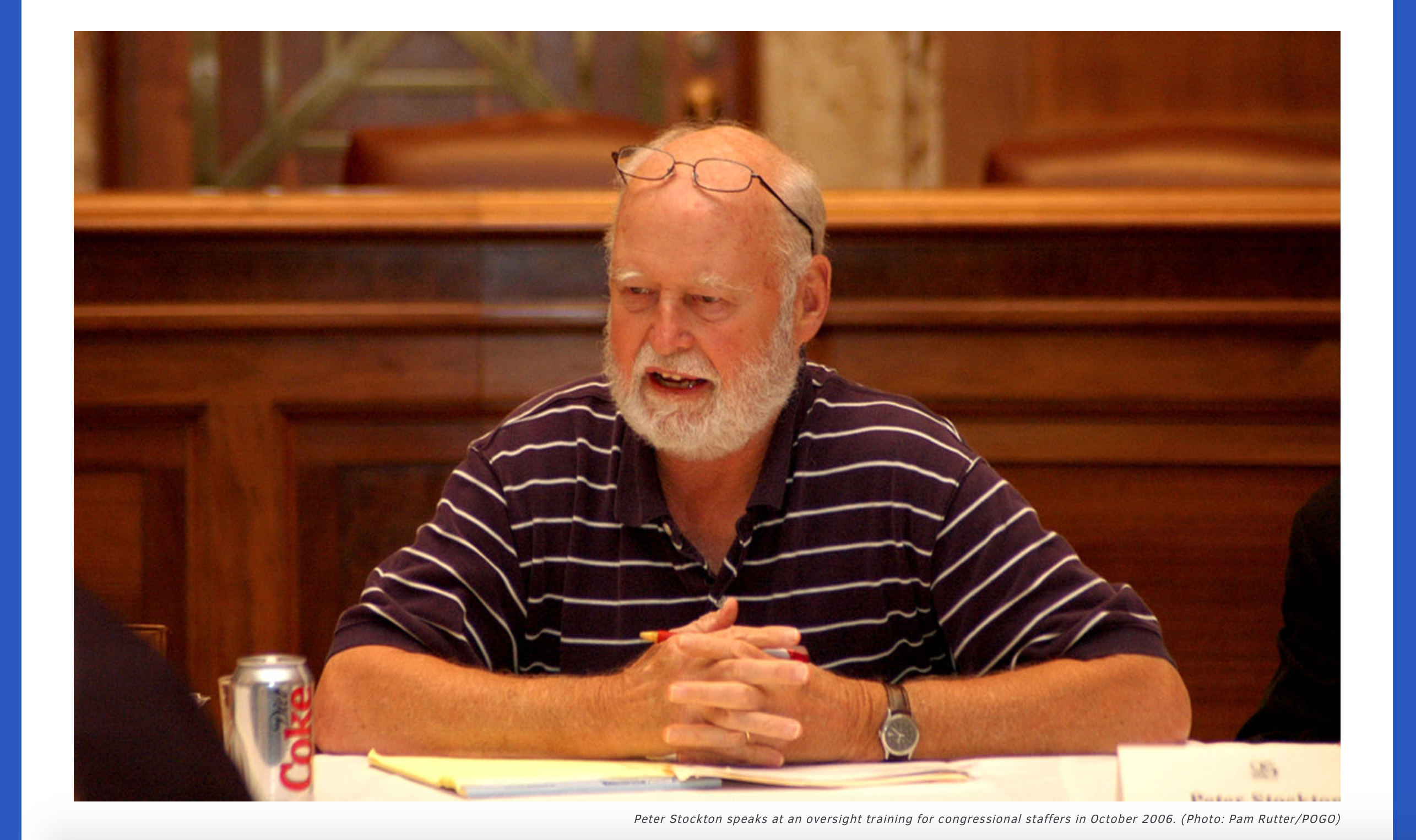
WRITTEN BY: KEITH RUTTER pogo.org
When it comes to mononymous people in government oversight, “Stockton!” was at the top of the list. But he also had a first name. Peter Stockton, age 80, passed away Sunday, September 8. He is survived by, as he would say, “6 1/2 children and 10 grandchildren.”
I knew Peter for about 30 years. Let’s be honest—Peter Stockton was an acquired taste. He was blunt and gruff. “Stockton!” was usually followed by an expletive in many corners of DC, even by his friends. But he was a true champion of the nation’s taxpayers, and we will be poorer for the loss.
For over 30 years Stockton worked in government attempting to expose corruption (22 years of which were as a staffer for Representative John Dingell). In the 1970s, he investigated most of the major defense contractors and oil companies, the diversion of bomb-grade uranium to Israel, and the death of Karen Silkwood. His investigation into the construction and operation of the Alaskan Pipeline spanned from the 1970s into the 1990s. In the 1980s and early 1990s, he probed the security and effectiveness of the nuclear weapons production program and defense contractor fraud.
Senate panel wants probe into nuclear weapon glitches
Panel is concerned that problems might reflect fundamental oversight shortcomings that have broader implications
September 18, 2019 | BY JOHN M. DONNELLY | rollcall.com
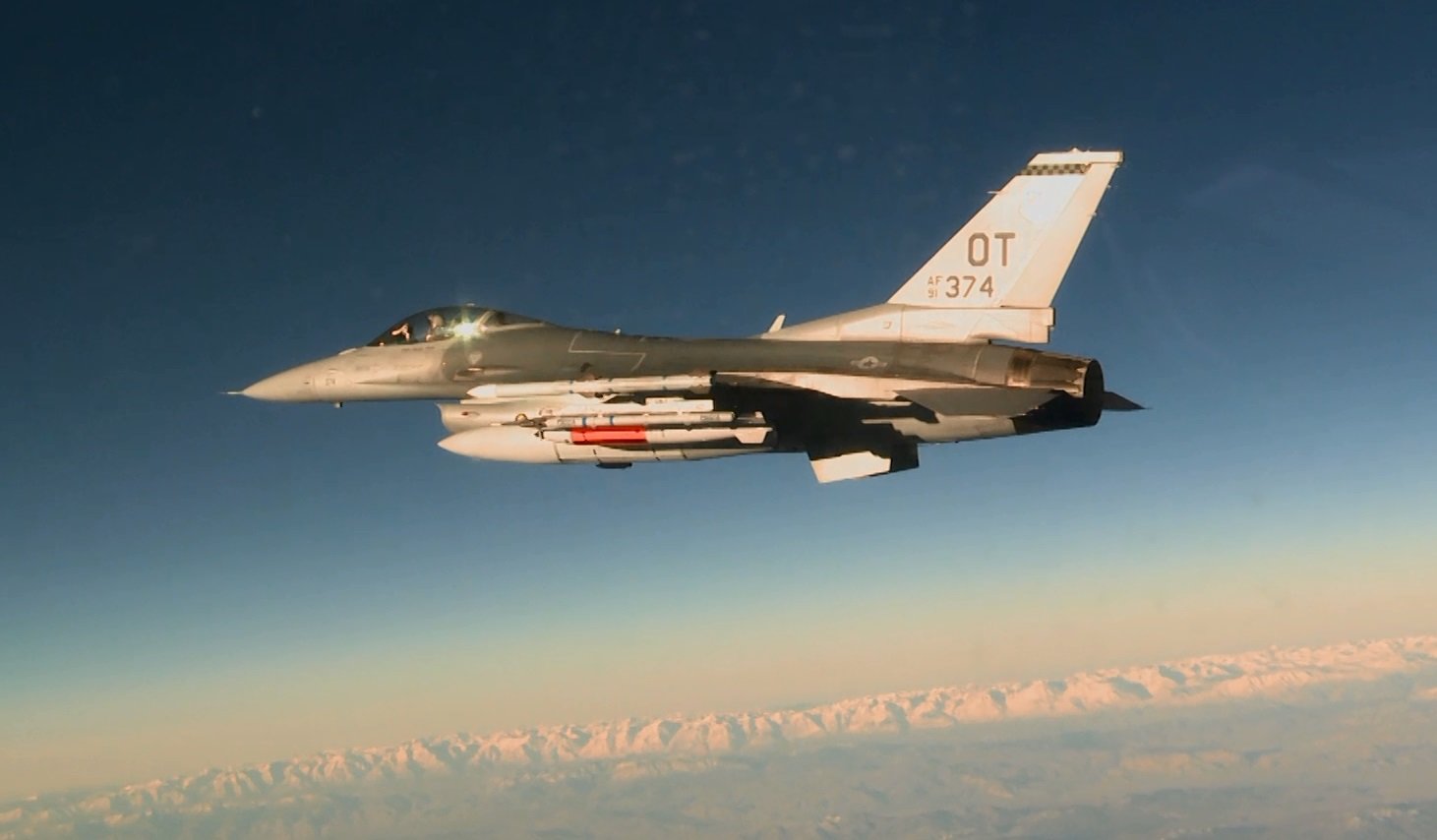
The Senate Appropriations Committee wants to order the Energy Department to launch an investigation into technical problems that have recently plagued U.S. nuclear weapons programs.
The committee’s mandate is buried deep inside the report accompanying the $48.9 billion Energy-Water spending bill (S 2470) for fiscal 2020 that the committee approved on Sept. 12.
Watchdogs Issue Second Demand to NNSA for Nation-Wide Environmental Review of Expanded Plutonium Pit Production
Public Interest Groups Challenge Plans to Fabricate Plutonium Pits for New, Unjustified Nuclear Weapons, at Los Alamos National Lab and Savannah River Site
COLUMBIA, SC, USA, September 17, 2019 /EINPresswire.com/
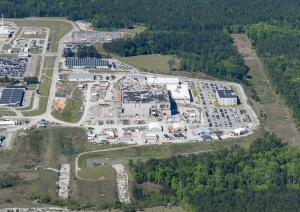
Today, lawyers for the Natural Resources Defense Council, Nuclear Watch New Mexico, Savannah River Site Watchand Tri-Valley Communities Against a Radioactive Environment sent a second letter to Department of Energy (DOE) Secretary Rick Perry and Lisa Gordon-Hagerty, the head of the semi-autonomous National Nuclear Security Administration (NNSA). The letter demands a nation-wide programmatic environmental impact statement (PEIS) for the agencies’ proposed expanded production of plutonium pits, the fissile cores or “triggers” of nuclear weapons.
Jay Coghlan, Nuclear Watch New Mexico director, noted, “The Los Alamos Lab has a long track record of nuclear safety problems that must be resolved before expanded plutonium pit production is even considered. The government’s claimed need for expanded production needs to be critically examined in a new nation-wide supplemental PEIS for its environmental impacts, costs and potentially adverse national security impacts. Following that, given the massive changes proposed for LANL due to expanded pit production, NNSA will also have to prepare a new site-specific site-wide environmental impact statement for the Los Alamos Lab.”
Pelosi Names Conferees to National Defense Authorization Act Conference
Washington, D.C. – Speaker Nancy Pelosi today named House Democrats to serve on a conference committee of the House and Senate versions of the FY 2020 National Defense Authorization Act (NDAA):
September 17, 2019 | Press Release Link: https://www.speaker.gov/newsroom/91719-1
“Democrats have always stood for a strong and smart national defense,” said Speaker Nancy Pelosi. “In July, House Democrats were proud to pass a responsible NDAA that keeps our nation safe while reducing wasteful spending, maintaining a tough stance on Russia, solidifying Congress’s oversight role over defense initiatives and advancing our bedrock American values. Our skilled Democratic Conferees will bring their expertise to ensure that the FY 2020 NDAA maintains key Democratic priorities, including a critical pay raise for our brave men and women in uniform, lifesaving support for veterans and military families and prohibiting any defense funds from being used to build the President’s wasteful, ineffective border wall. Guided by the leadership and vision of our Conferees, House Democrats will never waver from our responsibility to support those who serve and defend our country.”
September 17 War Hawk Down: A deep dive with into the firing of John Bolton, his record of failure, and how his core beliefs and worldview are deeply indicative of the way that Washington thinks about national security.
Special Guest: Trita Parsi. “In The Silo” explores at Chain Reaction, our annual fundraising gala. This year featured a tribute to Lew Butler, the founding Chair of the Board of Directors. News summary with Mary Kaszynski, Joe Cirincione, and Michelle Dover. Joe answers a question from Ben in Scotland.
Listen, Subscribe and Share on iTunes · Spotify · SoundCloud · YouTube · Google Play · Sticher
Also available on ploughshares.org/pressthebutton
A terrifying new animation shows how 1 ‘tactical’ nuclear weapon could trigger a US-Russia war that kills 34 million people in 5 hours
- A new simulation called “ Plan A,” by researchers at Princeton’s Program on Science and Global Security, shows how the use of one so-called tactical or low-yield nuclear weapon could lead to a terrifying worldwide conflict.
- In the roughly four-minute video, a Russian “nuclear warning shot” at a US-NATO coalition leads to a global nuclear war that leads to 91.5 million deaths and injuries.
- Under President Trump, the US is ramping up production of tactical nuclear weapons, ostensibly to target troops and munitions supplies. While advocates say these weapons would keep wars from escalating, the simulation finds the opposite outcome.
- The dissolution of the INF treaty in August raised the stakes for nuclear war, as both the US and Russia were free to develop weapons previously banned under the treaty.
- “The risk of nuclear war has increased dramatically in the past two years,” the project states. Nuclear strikes are an extremely remote possibility, but their chances are rising experts warn.
More than 91 million people in Russia, the US, and NATO-allied countries might be killed or injured within three hours following a single “nuclear warning shot,” according to a terrifying new simulation.
European Leadership Network Group Statement on Nuclear Arms Control
Ahead of the 74th session of the United Nations General Assembly, over 100 members of the European Leadership Network’s network of political, diplomatic and military figures call on leaders at UNGA to address rising nuclear risk, and renew commitments to international nuclear diplomacy and arms control.
The full statement and list of signatories is reproduced in English below, and is also available in French, German, Italian, and Russian. ************
As world leaders prepare to meet this month at the United Nations in New York, we call on them to take urgent steps to reduce the risks of nuclear confrontation. We join a growing number of international leaders in raising the alarm over new nuclear dangers.
Last month we witnessed the end of the landmark US-Russia Intermediate Nuclear Forces Treaty (INF). Today, there are grave doubts over the future of the only remaining agreement that limits and regulates Washington and Moscow’s strategic nuclear weapons, the New Strategic Arms Reduction Treaty (START). And new challenges confront the Comprehensive Nuclear-Test-Ban Treaty (CTBT).
Stability is eroding and risks are rising. North Korea has grown its nuclear weapon stockpile, tests missiles, and continues to feel threatened. The fate of inter-Korean and US-DPRK dialogue remains uncertain. Tensions are flaring between nuclear rivals India and Pakistan. And, following Washington’s unilateral breach and resumed sanctions, Iran may walk away from the nuclear deal that constrains its ability to develop nuclear weapons.
Moreover, new military technologies threaten to destabilise global and regional nuclear confrontations. These technologies are rapidly evolving and entirely uncontrolled.
The risks of nuclear accident, misjudgement or miscalculation have not been higher since the Cuban Missile Crisis. Complacency should not be an option. It is not only European security at stake.
The Catastrophic Tenure Of John Bolton
“The national security adviser’s principal responsibility has traditionally been to oversee a disciplined policymaking process that includes the State Department, the Pentagon and intelligence agencies, and to tee up big decisions for the president,” editorialized The Washington Post the night of Bolton’s firing, “Mr. Bolton didn’t do that.”
BY JOE CIRINCIONE | lobelog.com Sep. 11, 2019
Seventeen months ago, before Bolton became Donald Trump’s third national security advisor, the United States still had a deal that had stopped Iran’s nuclear program in its tracks. More, it had rolled it back to a fraction of its original size and boxed it into the most intrusive inspection regime ever negotiated. It was a deal for the ages. All of Trump’s military, intelligence and security advisors and our closest allies urged Trump to stay in the accord. Bolton destroyed it in two months, pushing Trump to violate it and impose draconian sanctions on Iran.
“Withdrawing from the Iran Nuclear Deal should be a top Donald Trump administration priority,” Bolton tweeted in July 2017, months before his appointment. “The declared policy of the United States should be the overthrow of the mullahs’ regime in Tehran,” he shouted at an MEK rally in July 2017, promising them that they would all celebrate in Tehran “before 2019.”
Today, Iran is slowly pealing away from the deal, too, taking baby steps towards restarting capabilities that someday could allow it to make the material for a bomb, should it decide to do so. No new deal. No better deal. No regime change. No celebration in Tehran. “Trump has spent years making a mess of Iran policy for no reason other than right wing politics and incompetence,” tweeted former Deputy National Security Advisor Ben Rhodes as news of Bolton’s sacking spread.
California lawmaker aims to stop closure of Diablo Canyon nuclear plant
Assemblyman Jordan Cunningham, R-Templeton (San Luis Obispo County), on Wednesday proposed a state constitutional amendment that would designate nuclear power as a source of renewable energy.
BY J.D. MORRIS | sfchronicle.com Sep. 4, 2019
Cunningham and two pro-nuclear organizations who support his amendment think its passage would make Diablo Canyon worth as much as $3.6 billion. A statement from Cunningham’s office said prolonging the life of Diablo Canyon would help the state fulfill its climate goals and “provide ratepayers with a cheap and constant source of energy for decades to come.”
But John Geesman, an attorney for the Alliance for Nuclear Responsibility, an anti-nuclear nonprofit, viewed the amendment as an attempt to prop up Diablo Canyon’s finances and said it had little chance of garnering the support it needs in the Legislature and electorate.
“That’s two mountains they’re probably incapable of climbing, realistically,” Geesman said. “The public just doesn’t want this stuff.”
PG&E spokeswoman Lynsey Paulo said the company would review the proposed amendment.
Trump fires John Bolton
Washington (CNN) President Donald Trump abruptly announced in a tweet Tuesday that he has asked national security adviser John Bolton to resign, noting that he “strongly disagreed with many” of Bolton’s suggestions “as did others in the administration.”
….I asked John for his resignation, which was given to me this morning. I thank John very much for his service. I will be naming a new National Security Advisor next week.
— Donald J. Trump (@realDonaldTrump) September 10, 2019
September 10 Hans Kristensen of the Federation of American Scientists joins Joe Cirincione to discuss Chinese and Russian nuclear modernization plans, and the state of nuclear arsenals around the world.
Leon Ratz joins Early Warning to discuss Iran’s latest announcement about its nuclear program, Russia’s plans to produce new weapons, and Congress’s return to Washington. Joe Cirincione and Michelle Dover answer a question from Gerrard on how citizens can influence their leaders to support nuclear weapons prohibition.
Listen, Subscribe and Share on iTunes · Spotify · SoundCloud · YouTube · Google Play · Sticher
Also available on ploughshares.org/pressthebutton
Radioactive Barges Are Killing the Vibe on This Russian Beach After Deadly Missile Blast
A pair of pontoon barges suspected of being doused in radioactivity during a deadly nuclear missile accident in Russia washed up on a local beach three weeks ago, where they’ve reportedly been leaking radiation into the sea and sand ever since.
BY GREG WALTERS | vice.com
They landed near the mouth of the Verkhovka river, and have been sitting there with no official warning signs beyond a dirty red shirt stretched between two wooden poles, according local Russian media.
Radiation measurements as high as eight times normal background levels were taken on Aug. 31 from a distance of 150 meters, while earlier tests soon after the pontoons arrived peaked as high as 38 times normal, the outlet said. Those levels are still well short of life-threatening, but measurements closer to the barges haven’t been made.
“No idiots could be found to check the levels on the pontoons themselves without protection,” the local TV presenter deadpanned during a broadcast Monday.
One of the two barges washed up at the mouth of the Verkhovka River a day after the explosion, on Aug. 9. The other was left there by tugboats four days later, Belomorkanal reported.
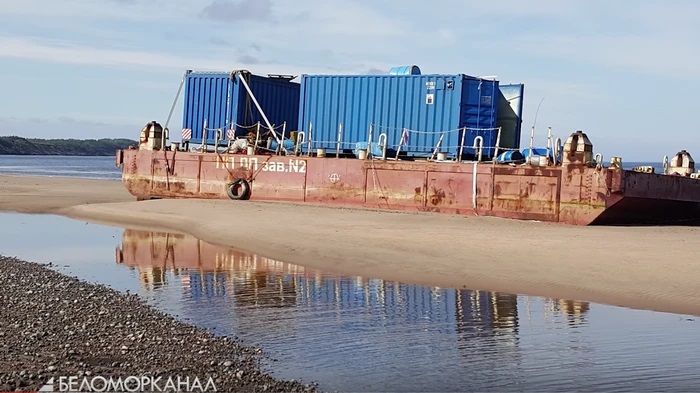
Readings taken on Saturday, Aug. 31 measured from 70 to 186 microroentgen per hour. Earlier measurements in August peaked at 750 microroentgen per hour. Normal local background levels in the area are closer to 20 microroentgen per hour, according to Greenpeace.
There’s not enough data yet to know what the levels are like on the barges themselves.

Nuclear Weapons Build-Up Insanity, Los Alamos Lab so-called “Clean-Up” – Jay Coghlan, Nukewatch NM – NH #428
Nuclear weapons – a reminder of what they look like and what they can do.
LISTEN HERE:
Nuclear weapons – their design, engineering, chances for implementation – that’s the topic we explore with Jay Coghlan, Executive Director of Nukewatch NM. Jay goes over the division of responsibility for nuclear weapons of mass destruction between Los Alamos National Laboratory(LANL), Sandia Laboratory, and California’s Lawrence Livermore Lab. He then rips into Department of Energy for the lies and “theatre” surrounding claims of a “more-than-halfway-completed” so-called “clean-up” of LANL that ignores the vast majority of radioactive contamination… and ultimately is funding the new nuclear arms race.
9 LANL waste containers denied shipment to WIPP
Barrels filled with transuranic waste fail inspection, remain at lab’s Plutonium Facility
BY TRIS DEROMA | lamonitor.com
DNSFB reports: https://www.dnfsb.gov/sites/default/files/document/18696/Los%20Alamos%20Week%20Ending%20July%2026%202019.pdf
Nine containers full of transuranic waste are stuck at the Los Alamos National Laboratory’s Plutonium Facility after the Carlsbad Waste Isolation Pilot Plant refused to take them in back in July.
The containers, which hold waste items such as gloves, tools and other items that have come into contact with radiological materials, were scheduled to be shipped to WIPP during the week of July 26.
The Department of Energy’s contractor N3B that operates WIPP inspected the drums at LANL prior to the shipping date and determined that the drums contained materials that could combust.
N3B Spokesman Todd Nelson said that there was never a chance the containers would have made it to WIPP in the condition they were in.
September 3 Barbara Slavin, Director of the Future of Iran Initiative at the Atlantic Council, joins Joe Cirincione to discuss increasing tensions in the Middle East and the effects of Trump administration’s ‘maximum pressure’ campaign toward Iran.
Michelle Dover hosts Early Warning with Joe Cirincione and Tom Collina on the anniversary of the USSR’s first nuclear test. Michelle Dover and Joe Cirincione answer a question from Patrick about who in the US government is taking current nuclear weapons risks seriously.
Listen, Subscribe and Share on iTunes · Spotify · SoundCloud · YouTube · Google Play · Sticher
Also available on ploughshares.org/pressthebutton
Younger retiring as director of Sandia Labs
Sandia National Laboratories Director Steve Younger is retiring after two years on the job.
BY SCOTT TURNER / JOURNAL STAFF WRITER | abqjournal.com August 27, 2019
Copyright © 2019 Albuquerque JournalYounger told employees at the labs in an email Monday, saying he informed the National Technology and Engineering Solutions Board of Managers of his intent to retire on Dec. 31.
“The Board is actively engaged in a systematic search for my successor,” he said in the email.
Younger, 67, took the helm at Sandia on May 1, 2017, as the lab changed management for only the second time in its history. Younger has led the management entity NTESS of Sandia, a wholly owned subsidiary of Honeywell International, which took over from Lockheed Martin.
“Since arriving at the laboratories, I have been truly impressed with the impact that you have on the security of our nation and the world,” Younger told employees.
Younger said his role as a nuclear weapons researcher has made him keenly aware of the need to understand conflict avoidance.
The New Nuclear Arms Race Is Here. And Russia’s Already Paying the Price.
Meet 4 new nuclear weapons systems the Kremlin is testing — right now.
BY GREG WALTERS | vice.com
Russian President Vladimir Putin, right, listens to President of National Research Center “Kurchatov Institute” Mikhail Kovalchuk, as he visits Kurchatov Institute of Atomic Energy, the home of the Soviet nuclear weapons program and later Soviet and Russian non-military nuclear technologies in Moscow, Russia, Tuesday, April 10, 2018. (Alexei Nikolsky, Sputnik, Kremlin Pool Photo via AP)At the funeral for 14 Russian sailors, Captain Sergei Pavlov hailed the “blameless heroes” for dousing the fire that broke out on their nuclear spy submarine, called the Losharik, during a secret mission last month.
“At the cost of their lives,” Pavlov said, “they prevented a catastrophe on a planetary scale.”
But as Russia tests and deploys an array of exotic new nuclear weapons, fears are mounting that the next nuclear mishap may not be so easily contained.
This summer alone, Russia has suffered some two-dozen casualties in accidents related to exotic nuclear hardware, including the mysterious explosion linked to the Skyfall missile program that killed seven and sent local radiation levels spiking in a nearby city.
The deadly incidents are stoking fears of a return to Cold War-style runaway nuclear arms development, accompanied by dangerous accidents and Soviet-style cover-ups.
“We need to acknowledge that the Russians are engaged in wacky programs,” said Aaron Stein, a nuclear nonproliferation expert at the Foreign Policy Research Institute. “It’s indicative of an arms complex that has been cut loose to pursue exotic, silly projects. And it’s dangerous.”
You can blame the renewed U.S.-Russian arms race, which nuclear experts warn is driving Russia to recklessly experiment with “absurd” new ideas.
On 29 August, the International Day against Nuclear Tests, Kazakhstan deposited its instrument of ratification for the Treaty on the Prohibition of Nuclear Weapons, becoming the 26th state party.
From 1949 to 1989, an estimated 456 Soviet nuclear tests — including 116 atmospheric tests — were carried out at the Semipalatinsk test site in Kazakhstan, with devastating long-term consequences for human health and the environment.
Upon the break-up of the Soviet Union, Kazakhstan inherited approximately 1,400 nuclear warheads, which it subsequently gave up — recognizing that its security was best achieved through disarmament.
The date of 29 August 2019 has special significance for Kazakhstan. It marks 70 years since the first Soviet nuclear test at the Semipalatinsk site and 28 years since the formal closure of that site.
We congratulate Kazakhstan on its ratification and we acknowledge the persistent efforts of Alimzhan Akhmetov, of the Center for International Security and Policy in Kazakhstan, to encourage the Kazakh government to take this important step.
Pakistan ups nuclear rhetoric, carries out launch of ballistic missile
BY AJAY BANERJEE | tribuneindia.com Tribune News Service New Delhi August 29, 2019
Pakistan has successfully test-fired surface-to-surface ballistic missile ‘Ghaznavi’, capable of delivering multiple warheads up to 290 km, the Army said on Thursday, amid fresh Indo-Pak tensions after India revoked Jammu and Kashmir’s special status.
Pakistan on Wednesday closed three aviation routes of the Karachi airspace till August 31, which had promoted speculation about the possible missile-testing.
Pakistan successfully carried out night training launch of surface to surface ballistic missile Ghaznavi, capable of delivering multiple types of warheads upto 290 KMs. CJCSC & Services Chiefs congrat team. President & PM conveyed appreciation to team & congrats to the nation. pic.twitter.com/hmoUKRPWev
— DG ISPR (@OfficialDGISPR) August 29, 2019
With this, Pakistan upped its ‘nuclear rhetoric’. The Director General of Inter Service Public Relations (DG-ISPR) said Pakistan on Wednesday night tested a short range nuclear missile in Sindh.
France Is Still Cleaning Up Marie Curie’s Nuclear Waste
Her lab outside Paris, dubbed Chernobyl on the Seine, is still radioactive nearly a century after her death.
BY TARA PATEL | bloomberg.com
Marie Curie working at the Radium Institute, a radioactivity laboratory created for her by the Pasteur Institute and the University of Paris at the University of Paris, 1925. PHOTOGRAPHER: SCIENCE SOURCEIn 1933 nuclear physicist Marie Curie had outgrown her lab in the Latin Quarter in central Paris. To give her the space needed for the messy task of extracting radioactive elements such as radium from truckloads of ore, the University of Paris built a research center in Arcueil, a village south of the city. Today it’s grown into a crowded working-class suburb. And the dilapidated lab, set in an overgrown garden near a 17th century aqueduct, is sometimes called Chernobyl on the Seine.
No major accidents occurred at the lab, which closed in 1978. But it’s brimming with radioactivity that will be a health threat for millennia, and France’s nuclear watchdog has barred access to anyone not wearing protective clothing. The lab is surrounded by a concrete wall topped by barbed wire and surveillance cameras. Monitors constantly assess radiation, and local officials regularly test the river.
“We’re proof that France has a serious nuclear waste problem,” says Arcueil Mayor Christian Métairie. “Our situation raises questions about whether the country is really equipped to handle it.”
Nuclear power accounts for almost three-fourths of France’s electricity, vs. a fifth in the U.S. There’s no lasting solution for the most dangerous refuse from the country’s 906 nuclear waste sites, including some of what’s in Arcueil.
Women’s Equality Day 2019: Diversity Encourages Innovation

nuclear diplomacy needs more women
“Negotiating successfully requires having the best people, regardless of gender, and recognizing that diversity enhances innovation.”
The story of women in nuclear security reflects many of the broader lessons we’ve learned about gender and politics: that women’s contributions have often been ignored or excluded, risking policies that lack key perspectives, nuance and debate. With today’s high stakes, we need national security policy that includes all of the best ideas. New and lasting solutions require diversity of representation and experience if we’re to solve the issues surrounding humanity’s survival.
https://www.washingtonpost.com/outlook/2019/05/23/why-nuclear-diplomacy-needs-more-women/
Arms Control Association: #ThisWeek in Nuclear History: The Soviet Union detonated its first nuclear weapon on August 29, 1949 at Semipalatinsk in the Soviet republic of Kazakhstan. Tests continued at the site until 1989 with little regard for their effect on the local people or environment. After the Soviet Union’s collapse in 1991, tests ended at the site and it was officially closed on Aug 29, 1991. The International Day against Nuclear Tests is now observed annually on August 29.
Trump Wanted to Nuke Hurricanes to Stop Them From Hitting U.S. Coast: Report
“I got it. I got it. Why don’t we nuke them?” [Trump said] according to one source who was there.
It makes sense that the president doesn’t like heavy winds. Photo: AFP Contributor/AFP/Getty ImagesBY MATT STIEB | nymag.com August 26, 2019
The president’s understanding of the natural world isn’t particularly deep. He thinks that the noise from wind turbines causes cancer. He’s called climate change a hoax and thinks that cold weather in the winter disproves global warming. He might not get how rivers work, and he definitely doesn’t understand how to stop a forest fire: Last year, he suggested a proper raking could have stalled the disastrous Camp Fire, which killed 83 Californians.
How Congress Can Prevent a Meltdown of Global Nuclear Arms Control
The end of the INF Treaty was a mistake but building new low-yield nukes and leaving New START would be disastrous.
BY TOM COUNTRYMAN & LAURA KENNEDY | nationalinterest.org
Image: ReutersThe Trump administration’s nuclear weapons policy has eroded decades of agreed-upon norms. An important arms control agreement with Russia was already shredded, and another is on the brink of being abandoned. Instead of adhering to its commitments under the Nuclear Non-Proliferation Treaty (NPT), which calls for good-faith steps towards the ultimate goal of nuclear disarmament, the Trump administration’s Nuclear Posture Review (NPR) released last year called for, among other things, new “low-yield” nuclear weapons that are considered likely to lower the nuclear threshold. Fortunately, Congress now has an opportunity to push back on these damaging departures from long-standing policies that have so far prevented nuclear annihilation.
House and Senate negotiators will soon meet to begin reconciling major differences in their versions of the Fiscal Year 2020 National Defense Authorization Act (NDAA). Among the many issues that must be addressed, that of nuclear weapons is poised to be one of the most controversial.
August 27 Lynn Rusten of the Nuclear Threat Initiative (NTI), sits down with Joe Cirincione to discuss the history of arms control between the United States and Russia, and how the Trump administration’s actions have put the New START treaty in danger.
Michelle Dover hosts Early Warning with Roger L. Hale Fellow Catherine Killough and Matt Korda, Research Associate at the Federation of American Scientists. Also, Michelle Dover and Joe Cirincione answer a question from Henry about US-North Korea relations.
Listen, Subscribe and Share on iTunes · Spotify · SoundCloud · YouTube · Google Play · Sticher
Also available on ploughshares.org/pressthebutton
Total eclipse: Nuclear power regulation slips deeper into the shadows
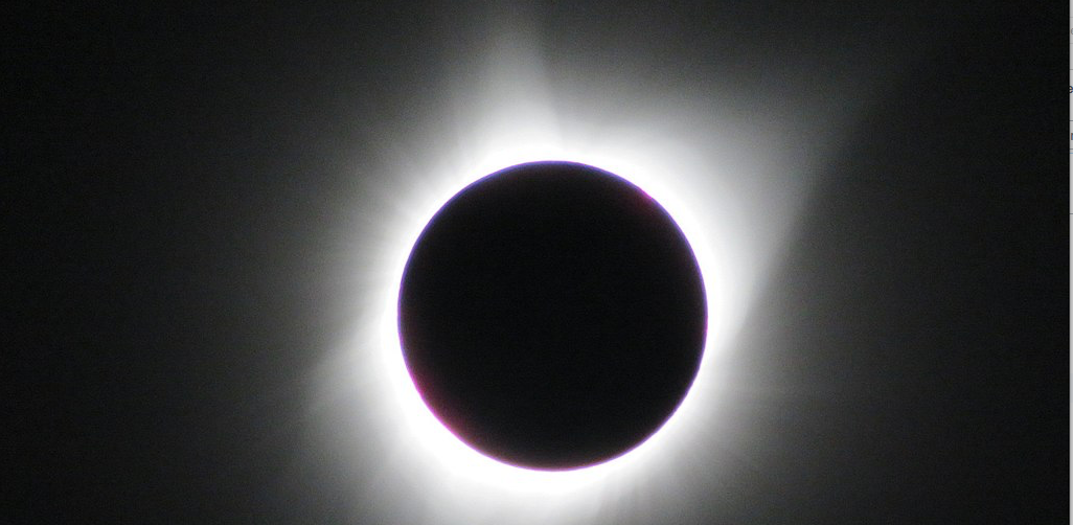
BY PAUL GUNTER | beyondnuclearinternational.org
On July 17, 2019, the United States Nuclear Regulatory Commission (NRC) held its regularly scheduled information exchange meeting with the nuclear industry’s Institute for Nuclear Power Operations (INPO) at NRC Headquarters in Rockville, Maryland.
INPO is a secretive industry task force headquartered in Atlanta, Georgia, led by the nation’s senior nuclear utility executives. Industry watchdogs often refer to INPO as “the shadow regulator” of the U.S. atomic power industry.
It is significant that NRC management chose this brief hour-long meeting in July with INPO to make a public announcement that the nation’s federal regulatory agency is proposing to dramatically cut back its “Regulatory Oversight Process” in what is being called a “transformative process.”
The Waste that Remains
Los Alamos Labs hit with $222,313 fine for safety violations. Meanwhile, clean-up of legacy sites may permanently seal waste in the ground.
BY LEAH CANTOR | sfreporter.com
Workers excavating a waste disposal site | US Department of EnergyEven as Los Alamos National Labs takes on contracts for new weapons manufacturing, taxpayers are still shelling out for the clean-up costs of contamination dating back to atomic bomb testing. The latest clean-up proposals will likely leave hazardous waste in the ground. Meanwhile, recent hazardous waste safety violations add up to $222,313.
N3B, the company recently contracted by the US Department of Energy to complete a significant portion of remaining clean-up efforts, gave a presentation to the public at the Santa Fe Community College on Thursday as part of a series of community meetings leading up to the process to decide methods for cleaning up several contaminated legacy waste sites around LANL.
…The DOE reported that 1,168 of 2,123 contaminated sites have been cleaned and 10,000 cubic meters of radioactive waste removed, leaving 5,000 cubic meters of waste remaining identified for clean-up. Yet, according to watchdog group Nuke Watch New Mexico, that leaves 690,251 cubic meters of waste permanently buried on-sight in unlined pits and shafts above a regional aquifer that provides drinking water for San Ildefonso Pueblo, Española, Los Alamos and Santa Fe, among other communities. Nuke Watch Executive Director Jay Coghlan tells SFR this number is from analysis of publicly available LANL documents and data.
Russian Nuclear Blast Theories Hint at No-Holds-Barred Arms Race
Amid the mysteries surrounding a deadly blast at a Russian military facility that killed at least five researchers and caused a brief radiation spike, one thing is clear: the new arms race is going full speed.
BY JAKE RUDNITSKY & ILYA ARKHIPOV | bloomberg.com
Burevestnik/SSC-X-9 Skyfall missile. Source: Russian Ministry of DefenceThe Aug. 8 explosion at a remote testing facility in the White Sea has remained a tightly guarded secret by the military, with Russian radiation-monitoring stations suddenly failing to send their data to international agencies in the days that followed. President Vladimir Putin would say only that the accident involved “work on promising weapons systems” that Russia is developing in response to “what our partners, including the Americans, are testing.”
President Donald Trump was more forthcoming in a tweet on the mishap, saying it involved a new nuclear-powered cruise missile known in the West as “Skyfall” but adding that the U.S. version is better. Putin’s spokesman insisted Russia’s is superior.
New Mexico has enough nuclear waste
We cannot not let the U.S. Department of Energy and the out-of-state nuclear waste generators turn New Mexico into the nuclear waste capital of the United States.
BY GEORGE ANASTAS & LOKESH CHATURVEDI | santafenewmexican.com
Nuclear waste sites in New Mexico are prolific. The Department of Energy and the nuclear industrial waste complex want to further thrust the nuclear waste sword into the heart of New Mexico.
Congratulations to Gov. Michelle Lujan Grisham for standing up for New Mexico. It is time for all New Mexicans to raise their voices and say, “Enough is enough.”
Read on to learn about the many nuclear waste sites in New Mexico:
Pakistan Leader Vents Frustration at India: ‘No Point in Talking to Them’
“My worry is that this [the crisis in Kashmir] can escalate and for two nuclear-armed countries, it should be alarming for the world what we are facing now.” — Prime Minister Imran Khan of Pakistan
BY SALMON MASOOD & MARIA ABI-HABIB | nytimes.com
Prime Minister Imran Khan of Pakistan said he warned President Trump of a “potentially very explosive situation.” Credit: Saiyna Bashir for The New York TimesISLAMABAD, Pakistan — Prime Minister Imran Khan of Pakistan intensified his criticism of India on Wednesday over its Kashmir crackdown, saying he would no longer seek dialogue with Indian officials and raising the threat of a military escalation between the nuclear-armed neighbors.
In an interview with The New York Times, Mr. Khan complained bitterly about what he described as repeated rebuffs from Prime Minister Narendra Modi of India at his entreaties for communication, both before and after the Aug. 5 crackdown on the disputed territory of Kashmir.
“There is no point in talking to them. I mean, I have done all the talking. Unfortunately, now when I look back, all the overtures that I was making for peace and dialogue, I think they took it for appeasement,” Mr. Khan said during the interview, at the prime minister’s office in Islamabad. “There is nothing more that we can do.”
U.S. tests first intermediate-range missile since withdrawing from treaty with Russia
“This is a very clear sign that the United States and Russia are on the verge of a new missile race,” — Daryl Kimball, executive director of the Arms Control Association.
BY MISSY RYAN | washingtonpost.com
A cruise missile launches off the coast of California on Aug. 18. (Scott Howe/Department of Defense/AP)The U.S. military has conducted a test launch of an intermediate-range cruise missile for the first time since withdrawing from a Cold War-era arms-control pact with Russia earlier this month, the Pentagon said Monday.
The conventional missile, which was fired from a mobile ground launcher and flew more than 500 kilometers (310 miles) before hitting its target, launched off the coast of California on Sunday afternoon, the Pentagon said in a statement.
“Data collected and lessons learned from this test will inform the Department of Defense’s development of future intermediate-range capabilities,” the statement said.
The test follows the Trump administration’s formal withdrawal Aug. 2 from the Intermediate-Range Nuclear Forces Treaty (INF), a 1987 agreement that banned Washington and Moscow from testing, producing or deploying missiles with ranges from 500 to 5,500 kilometers (310 to 3,400 miles).
More nuclear weapons — less cleanup
At recent public forums, the Department of Energy and the Los Alamos National Laboratory claimed that cleanup is more than half complete.
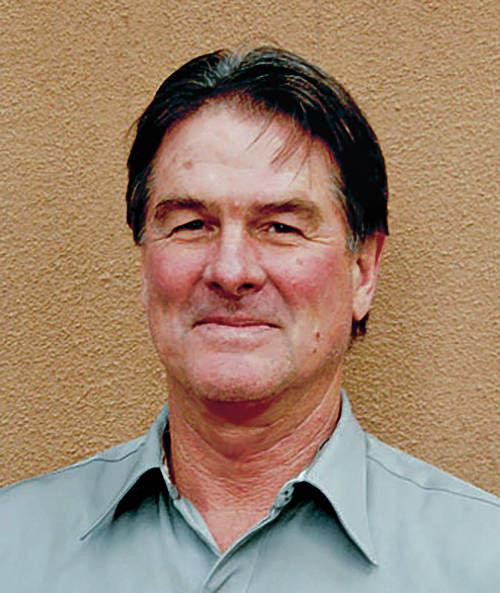
BY JAY COGHLAN | santafenewmexican.com
What these staged events fail to disclose, contradicting repeated claims of transparency, is that decisions already have been made behind closed doors to remove only approximately 6,500 cubic yards of radioactive and toxic waste, while leaving 30 times as much buried permanently above our groundwater aquifer.
LANL used to claim that groundwater contamination from lab operations was impossible. Today, we sadly know otherwise. Deep groundwater under LANL is contaminated with chromium, perchlorate and high explosives. Intermediate aquifers linked to deep groundwater are contaminated with tritium, industrial solvents, heavy metals and plutonium.
August 20 William Hartung, director of the Arms and Security Project at the Center for International Policy, sits down with Joe Cirincione to discuss the corporate connection to US arms sales abroad, and whether or not companies manufacturing weapons of war should bear responsibility for the casualties incurred as a result of their use.
Joe Cirincione hosts Early Warning with Ploughshares Fund Deputy Director of Policy Mary Kaszynski and Jessica Lee, Senior Director at Council of Korean Americans. Also, Michelle Dover and Joe Cirincione answer a question from Melissa about the differences in US policy toward Iran and North Korea.
U.S. Arms Sales to Saudi Arabia: The Corporate Connection, William Hartung’s new report: static.wixstatic.com/ugd/fb6c59_7fa…0227cc59fb.pdf
Listen, Subscribe and Share on iTunes · Spotify · SoundCloud · YouTube · Google Play · Sticher
Also available on ploughshares.org/pressthebutton
August 20 William Hartung, director of the Arms and Security Project at the Center for International Policy, sits down with Joe Cirincione to discuss the corporate connection to US arms sales abroad, and whether or not companies manufacturing weapons of war should bear responsibility for the casualties incurred as a result of their use.
Joe Cirincione hosts Early Warning with Ploughshares Fund Deputy Director of Policy Mary Kaszynski and Jessica Lee, Senior Director at Council of Korean Americans. Also, Michelle Dover and Joe Cirincione answer a question from Melissa about the differences in US policy toward Iran and North Korea.
U.S. Arms Sales to Saudi Arabia: The Corporate Connection, William Hartung’s new report: static.wixstatic.com/ugd/fb6c59_7fa…0227cc59fb.pdf
Listen, Subscribe and Share on iTunes · Spotify · SoundCloud · YouTube · Google Play · Sticher
Also available on ploughshares.org/pressthebutton
IPPNW warns of dire consequences of military escalation in Kashmir
 International Physicians for the Prevention of Nuclear War (IPPNW) is calling on the Indian government to restore immediately all communications and freedom of movement in Kashmir and Jammu, and urging all states in the disputed border regions to initiate new diplomatic talks aimed at reducing tensions and negotiating a peaceful settlement to the long-standing conflict.
International Physicians for the Prevention of Nuclear War (IPPNW) is calling on the Indian government to restore immediately all communications and freedom of movement in Kashmir and Jammu, and urging all states in the disputed border regions to initiate new diplomatic talks aimed at reducing tensions and negotiating a peaceful settlement to the long-standing conflict.
IPPNW is deeply concerned that deteriorating humanitarian and political conditions in Kashmir, after the Indian government put the area in lockdown earlier this month, are increasing significantly the risk of military escalation between nuclear-armed India and Pakistan. Three of the four wars fought between India and Pakistan have started in Kashmir.
The nuclear arms race is back … and ever more dangerous now
Donald Trump has increased spending on America’s arsenal while ripping up cold war treaties. Russia and China are following suit.
BY SIMON TISDALL | theguardian.com
A missile test launch by North Korea on 25 July this year. Photograph: APImagine the uproar if the entire populations of York, Portsmouth or Swindon were suddenly exposed to three times the permissible level of penetrating gamma radiation, or what the nuclear physicist Ernest Rutherford termed gamma rays. The outpouring of rage and fear would be heard across the world.
That’s what happened to the roughly 200,000 people who live in the similarly sized northern Russian city of Severodvinsk on 8 August, after an explosion at a nearby top-secret missile testing range. Russia’s weather service, Rosgidromet, recorded radiation levels up to 16 times higher than the usual ambient rate.
Yet the incident has been met with surly silence by Russia. It was five days before officials confirmed a blast at the Nyonoksa range had killed several people, including nuclear scientists. No apologies were offered to Severodvinsk residents. There is still little reliable information. “Accidents, unfortunately, happen,” a Kremlin spokesman said. That callous insouciance is not universally shared. According to western experts, the explosion was caused by the launch failure of a new nuclear-powered cruise missile, one of many advanced weapons being developed by Russia, the US and China in an accelerating global nuclear arms race.
Nuclear News Archives – 2021
Nothing Found
It seems we can’t find what you’re looking for. Perhaps searching can help.


